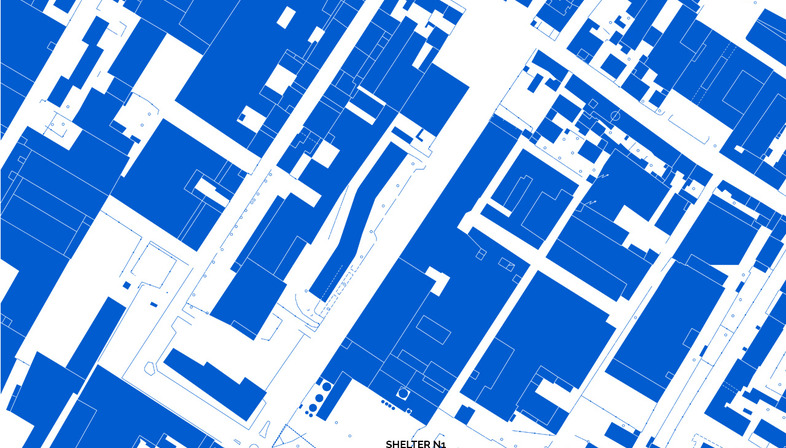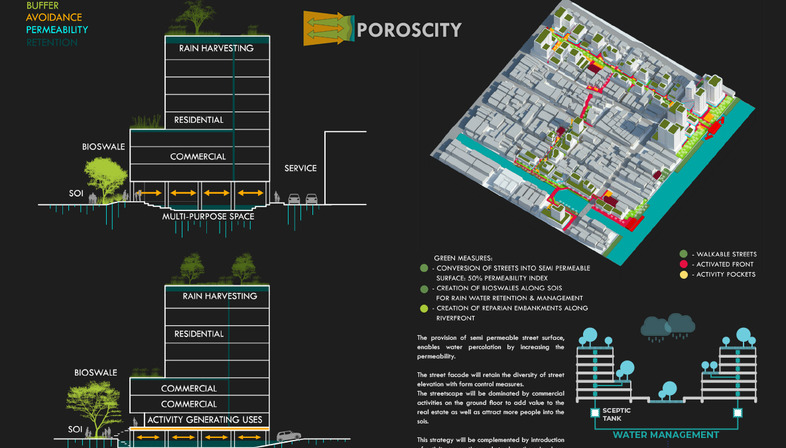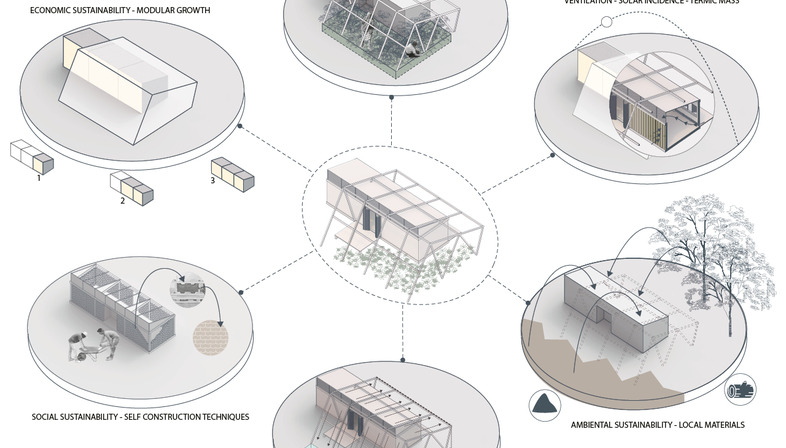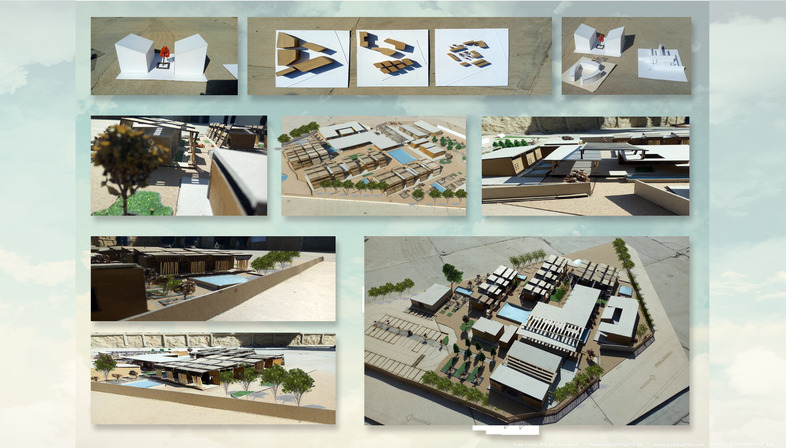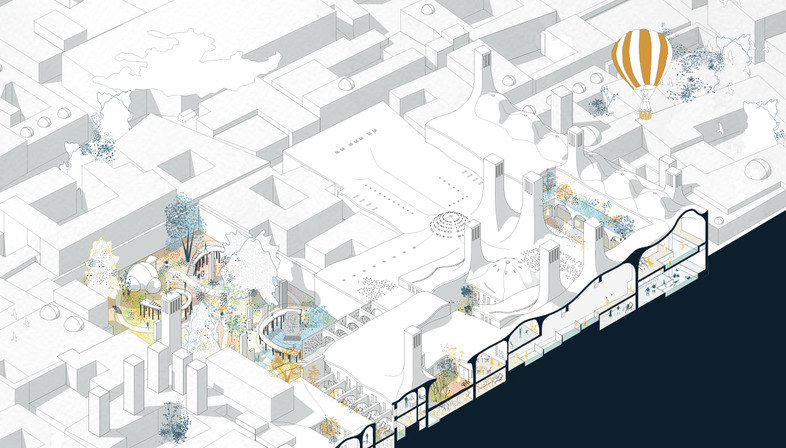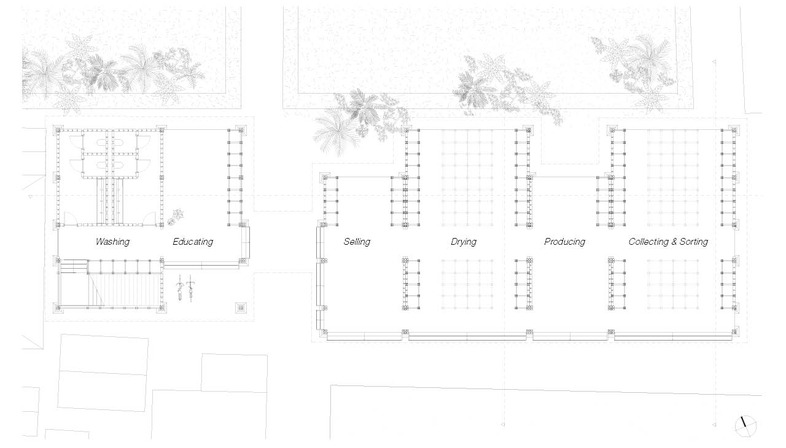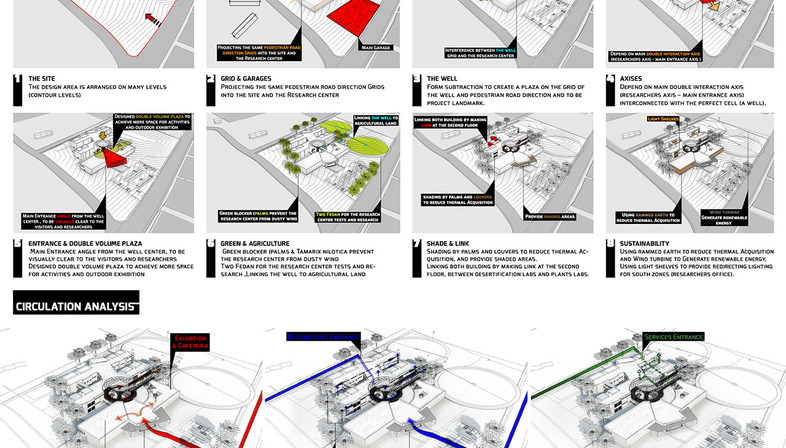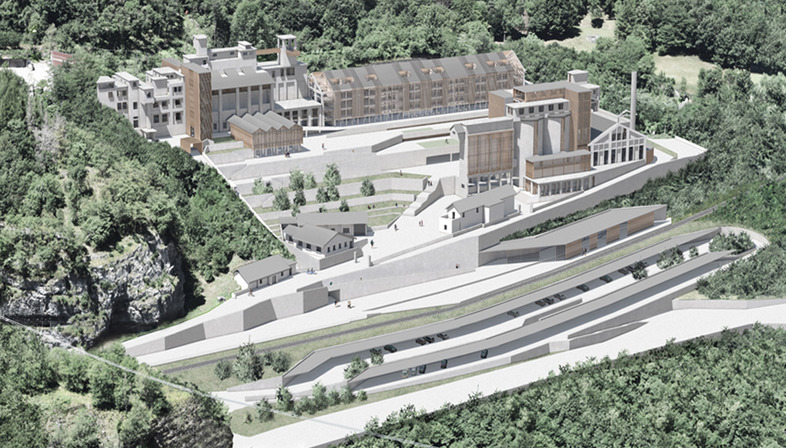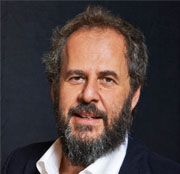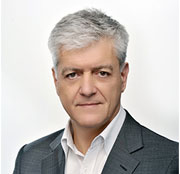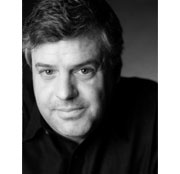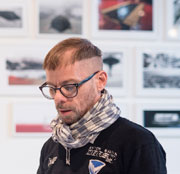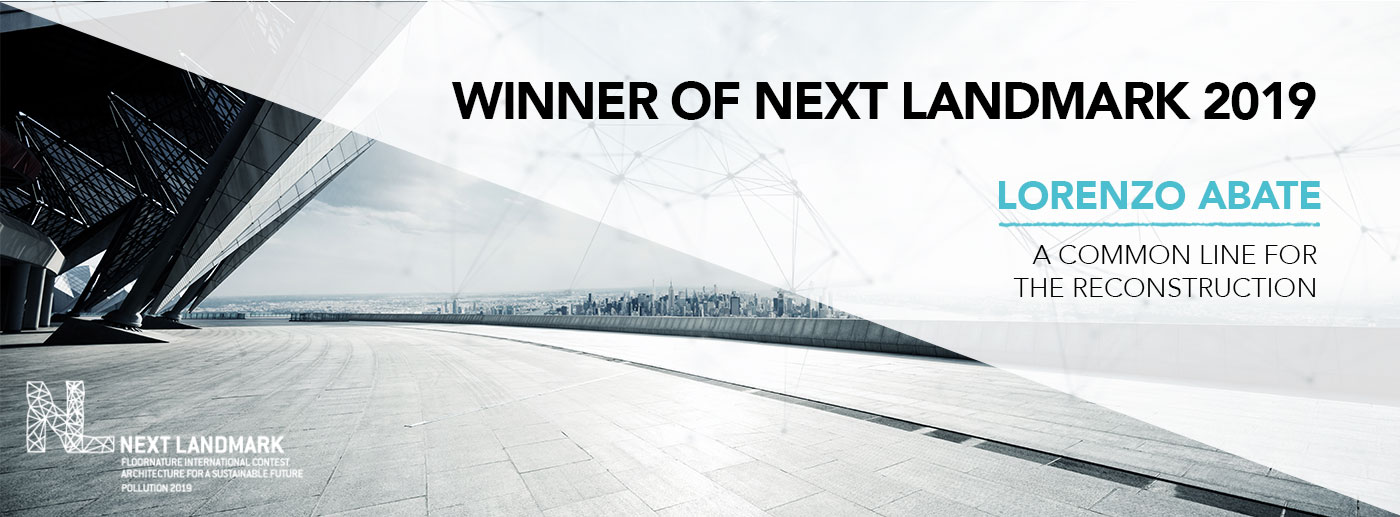
- Home
- Contest 2019
- Winners 2019
WINNER OF Pollution 2019: A COMMON LINE FOR THE RECONSTRUCTION
Lorenzo Abate -
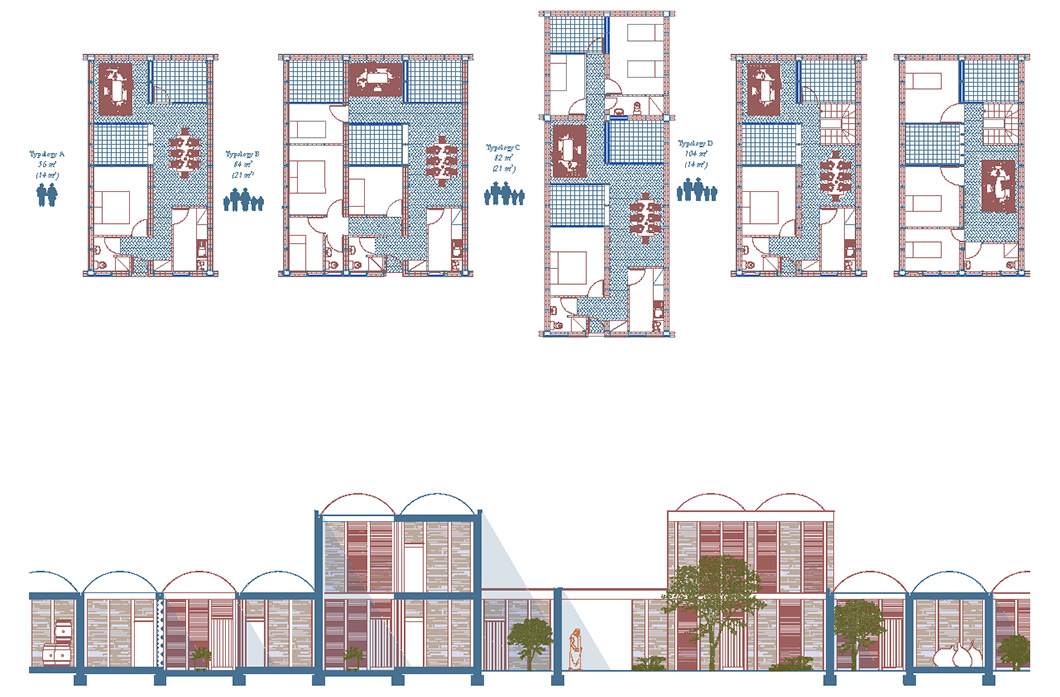
Project Description:
In the thesis I developed a project within the Syrian context in a post-war vision (2011) developing a model for a replicable ecological reconstruction in the different agricultural territories. Water, in this context, is not only necessary for the livelihood economy, but vital for the anthropic growth of the morphology of urban/rural agglomerations.
In the Western Gherban village in the Al-Hasaka region, the majority of farmers before the war mainly exploited storm precipitation. Subsequently they were constructed in a precarious way and with obsolete technologies the catchment areas of the water extracted in turn from the subsoil using repeatedly pumping machines to diesel.The first fundamental action of the project: construction of a wall of infrastructure able to support the first water and energy needs. Subsequently, a building program of progressive typological and morphological implementation gives rise to an urban action with a compact shape and no longer reduced and uncontrolled in the surrounding productive landscape.
Inside the water flows in diversified channels for the various types of uses (drinking and not)then is recovered and treated with the process of phyto-purification and finally conveyed in drip irrigation systems to the agricultural fields. The project strategy aims to represent a common line for the whole territory with the provision of a system completed by individual/collective photovoltaic systems and the exploitation of residues of agricultural processing and as fuel for small biogas plants. The outcome of the project would thus represent a community where the modern building-planning tool would be manipulated“by individuals and the community as a whole, thus generating from personal autonomy a collective social efficiency.
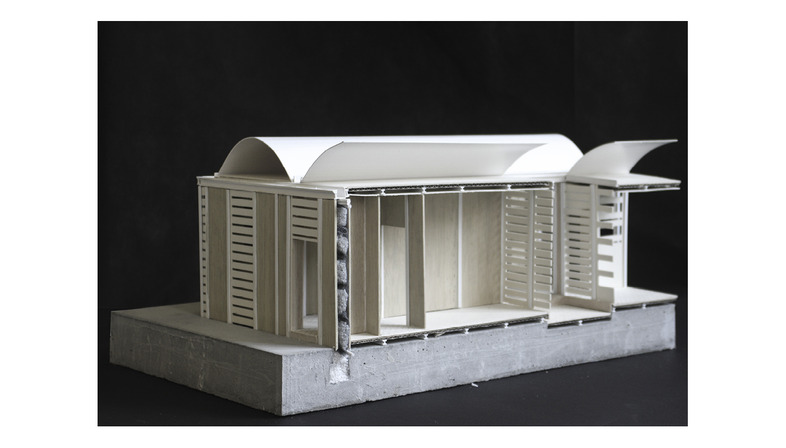
Name / Surname: Lorenzo Abate
Country:
Company: IUAV
Project Description:
In the thesis I developed a project within the Syrian context in a post-war vision (2011) developing a model for a replicable ecological reconstruction in the different agricultural territories. Water, in this context, is not only necessary for the livelihood economy, but vital for the anthropic growth of the morphology of urban/rural agglomerations.
In the Western Gherban village in the Al-Hasaka region, the majority of farmers before the war mainly exploited storm precipitation. Subsequently they were constructed in a precarious way and with obsolete technologies the catchment areas of the water extracted in turn from the subsoil using repeatedly pumping machines to diesel.The first fundamental action of the project: construction of a wall of infrastructure able to support the first water and energy needs. Subsequently, a building program of progressive typological and morphological implementation gives rise to an urban action with a compact shape and no longer reduced and uncontrolled in the surrounding productive landscape.
Inside the water flows in diversified channels for the various types of uses (drinking and not)then is recovered and treated with the process of phyto-purification and finally conveyed in drip irrigation systems to the agricultural fields. The project strategy aims to represent a common line for the whole territory with the provision of a system completed by individual/collective photovoltaic systems and the exploitation of residues of agricultural processing and as fuel for small biogas plants. The outcome of the project would thus represent a community where the modern building-planning tool would be manipulated“by individuals and the community as a whole, thus generating from personal autonomy a collective social efficiency.
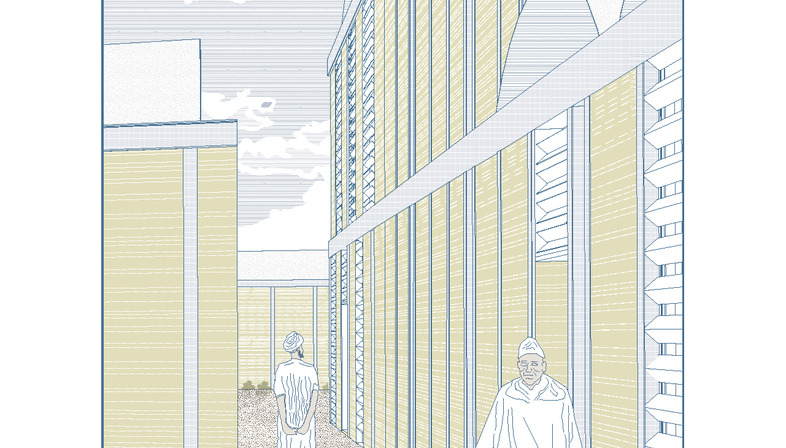
Name / Surname: Lorenzo Abate
Country:
Company: IUAV
Project Description:
In the thesis I developed a project within the Syrian context in a post-war vision (2011) developing a model for a replicable ecological reconstruction in the different agricultural territories. Water, in this context, is not only necessary for the livelihood economy, but vital for the anthropic growth of the morphology of urban/rural agglomerations.
In the Western Gherban village in the Al-Hasaka region, the majority of farmers before the war mainly exploited storm precipitation. Subsequently they were constructed in a precarious way and with obsolete technologies the catchment areas of the water extracted in turn from the subsoil using repeatedly pumping machines to diesel.The first fundamental action of the project: construction of a wall of infrastructure able to support the first water and energy needs. Subsequently, a building program of progressive typological and morphological implementation gives rise to an urban action with a compact shape and no longer reduced and uncontrolled in the surrounding productive landscape.
Inside the water flows in diversified channels for the various types of uses (drinking and not)then is recovered and treated with the process of phyto-purification and finally conveyed in drip irrigation systems to the agricultural fields. The project strategy aims to represent a common line for the whole territory with the provision of a system completed by individual/collective photovoltaic systems and the exploitation of residues of agricultural processing and as fuel for small biogas plants. The outcome of the project would thus represent a community where the modern building-planning tool would be manipulated“by individuals and the community as a whole, thus generating from personal autonomy a collective social efficiency.
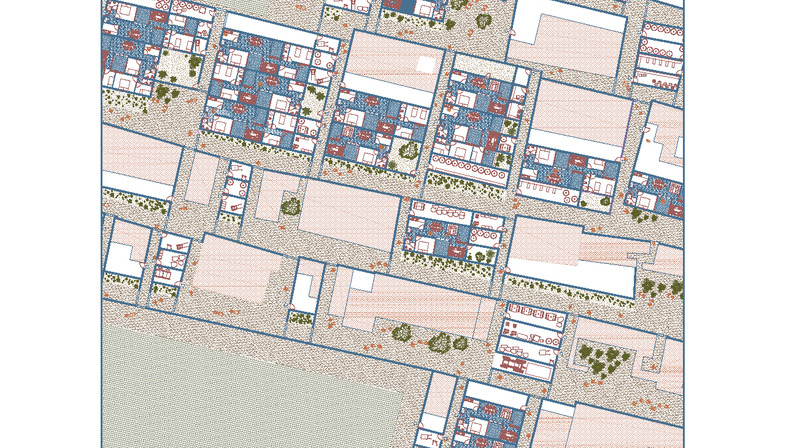
Name / Surname: Lorenzo Abate
Country:
Company: IUAV
Project Description:
In the thesis I developed a project within the Syrian context in a post-war vision (2011) developing a model for a replicable ecological reconstruction in the different agricultural territories. Water, in this context, is not only necessary for the livelihood economy, but vital for the anthropic growth of the morphology of urban/rural agglomerations.
In the Western Gherban village in the Al-Hasaka region, the majority of farmers before the war mainly exploited storm precipitation. Subsequently they were constructed in a precarious way and with obsolete technologies the catchment areas of the water extracted in turn from the subsoil using repeatedly pumping machines to diesel.The first fundamental action of the project: construction of a wall of infrastructure able to support the first water and energy needs. Subsequently, a building program of progressive typological and morphological implementation gives rise to an urban action with a compact shape and no longer reduced and uncontrolled in the surrounding productive landscape.
Inside the water flows in diversified channels for the various types of uses (drinking and not)then is recovered and treated with the process of phyto-purification and finally conveyed in drip irrigation systems to the agricultural fields. The project strategy aims to represent a common line for the whole territory with the provision of a system completed by individual/collective photovoltaic systems and the exploitation of residues of agricultural processing and as fuel for small biogas plants. The outcome of the project would thus represent a community where the modern building-planning tool would be manipulated“by individuals and the community as a whole, thus generating from personal autonomy a collective social efficiency.
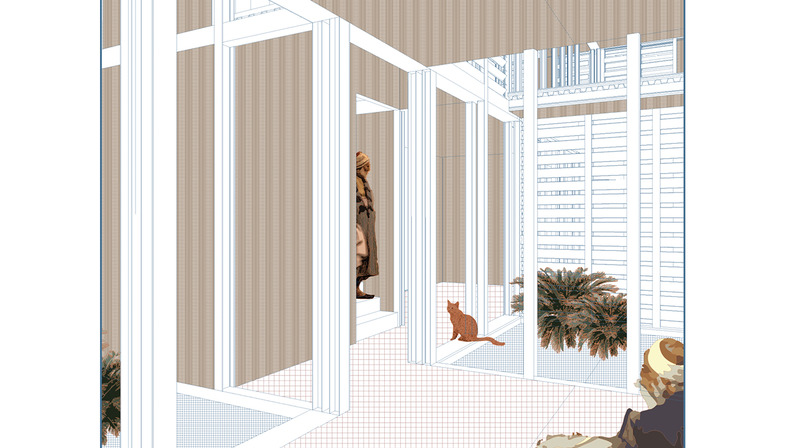
Name / Surname: Lorenzo Abate
Country:
Company: IUAV
Project Description:
In the thesis I developed a project within the Syrian context in a post-war vision (2011) developing a model for a replicable ecological reconstruction in the different agricultural territories. Water, in this context, is not only necessary for the livelihood economy, but vital for the anthropic growth of the morphology of urban/rural agglomerations.
In the Western Gherban village in the Al-Hasaka region, the majority of farmers before the war mainly exploited storm precipitation. Subsequently they were constructed in a precarious way and with obsolete technologies the catchment areas of the water extracted in turn from the subsoil using repeatedly pumping machines to diesel.The first fundamental action of the project: construction of a wall of infrastructure able to support the first water and energy needs. Subsequently, a building program of progressive typological and morphological implementation gives rise to an urban action with a compact shape and no longer reduced and uncontrolled in the surrounding productive landscape.
Inside the water flows in diversified channels for the various types of uses (drinking and not)then is recovered and treated with the process of phyto-purification and finally conveyed in drip irrigation systems to the agricultural fields. The project strategy aims to represent a common line for the whole territory with the provision of a system completed by individual/collective photovoltaic systems and the exploitation of residues of agricultural processing and as fuel for small biogas plants. The outcome of the project would thus represent a community where the modern building-planning tool would be manipulated“by individuals and the community as a whole, thus generating from personal autonomy a collective social efficiency.
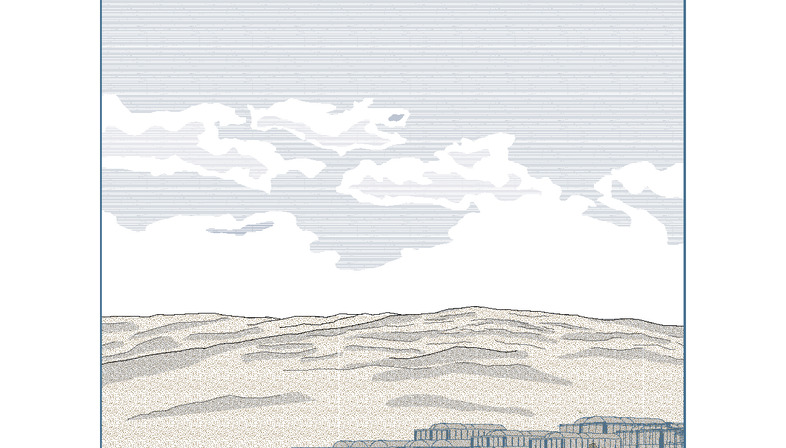
Name / Surname: Lorenzo Abate
Country:
Company: IUAV
Project Description:
In the thesis I developed a project within the Syrian context in a post-war vision (2011) developing a model for a replicable ecological reconstruction in the different agricultural territories. Water, in this context, is not only necessary for the livelihood economy, but vital for the anthropic growth of the morphology of urban/rural agglomerations.
In the Western Gherban village in the Al-Hasaka region, the majority of farmers before the war mainly exploited storm precipitation. Subsequently they were constructed in a precarious way and with obsolete technologies the catchment areas of the water extracted in turn from the subsoil using repeatedly pumping machines to diesel.The first fundamental action of the project: construction of a wall of infrastructure able to support the first water and energy needs. Subsequently, a building program of progressive typological and morphological implementation gives rise to an urban action with a compact shape and no longer reduced and uncontrolled in the surrounding productive landscape.
Inside the water flows in diversified channels for the various types of uses (drinking and not)then is recovered and treated with the process of phyto-purification and finally conveyed in drip irrigation systems to the agricultural fields. The project strategy aims to represent a common line for the whole territory with the provision of a system completed by individual/collective photovoltaic systems and the exploitation of residues of agricultural processing and as fuel for small biogas plants. The outcome of the project would thus represent a community where the modern building-planning tool would be manipulated“by individuals and the community as a whole, thus generating from personal autonomy a collective social efficiency.
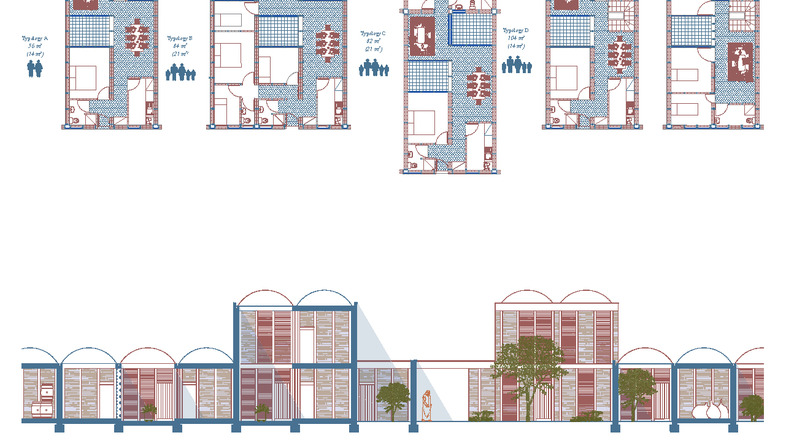
Name / Surname: Lorenzo Abate
Country:
Company: IUAV
Project Description:
In the thesis I developed a project within the Syrian context in a post-war vision (2011) developing a model for a replicable ecological reconstruction in the different agricultural territories. Water, in this context, is not only necessary for the livelihood economy, but vital for the anthropic growth of the morphology of urban/rural agglomerations.
In the Western Gherban village in the Al-Hasaka region, the majority of farmers before the war mainly exploited storm precipitation. Subsequently they were constructed in a precarious way and with obsolete technologies the catchment areas of the water extracted in turn from the subsoil using repeatedly pumping machines to diesel.The first fundamental action of the project: construction of a wall of infrastructure able to support the first water and energy needs. Subsequently, a building program of progressive typological and morphological implementation gives rise to an urban action with a compact shape and no longer reduced and uncontrolled in the surrounding productive landscape.
Inside the water flows in diversified channels for the various types of uses (drinking and not)then is recovered and treated with the process of phyto-purification and finally conveyed in drip irrigation systems to the agricultural fields. The project strategy aims to represent a common line for the whole territory with the provision of a system completed by individual/collective photovoltaic systems and the exploitation of residues of agricultural processing and as fuel for small biogas plants. The outcome of the project would thus represent a community where the modern building-planning tool would be manipulated“by individuals and the community as a whole, thus generating from personal autonomy a collective social efficiency.
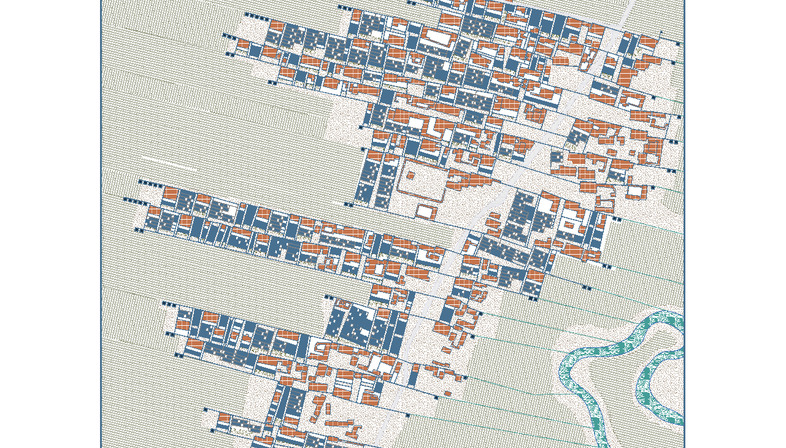
Name / Surname: Lorenzo Abate
Country:
Company: IUAV
Project Description:
In the thesis I developed a project within the Syrian context in a post-war vision (2011) developing a model for a replicable ecological reconstruction in the different agricultural territories. Water, in this context, is not only necessary for the livelihood economy, but vital for the anthropic growth of the morphology of urban/rural agglomerations.
In the Western Gherban village in the Al-Hasaka region, the majority of farmers before the war mainly exploited storm precipitation. Subsequently they were constructed in a precarious way and with obsolete technologies the catchment areas of the water extracted in turn from the subsoil using repeatedly pumping machines to diesel.The first fundamental action of the project: construction of a wall of infrastructure able to support the first water and energy needs. Subsequently, a building program of progressive typological and morphological implementation gives rise to an urban action with a compact shape and no longer reduced and uncontrolled in the surrounding productive landscape.
Inside the water flows in diversified channels for the various types of uses (drinking and not)then is recovered and treated with the process of phyto-purification and finally conveyed in drip irrigation systems to the agricultural fields. The project strategy aims to represent a common line for the whole territory with the provision of a system completed by individual/collective photovoltaic systems and the exploitation of residues of agricultural processing and as fuel for small biogas plants. The outcome of the project would thus represent a community where the modern building-planning tool would be manipulated“by individuals and the community as a whole, thus generating from personal autonomy a collective social efficiency.
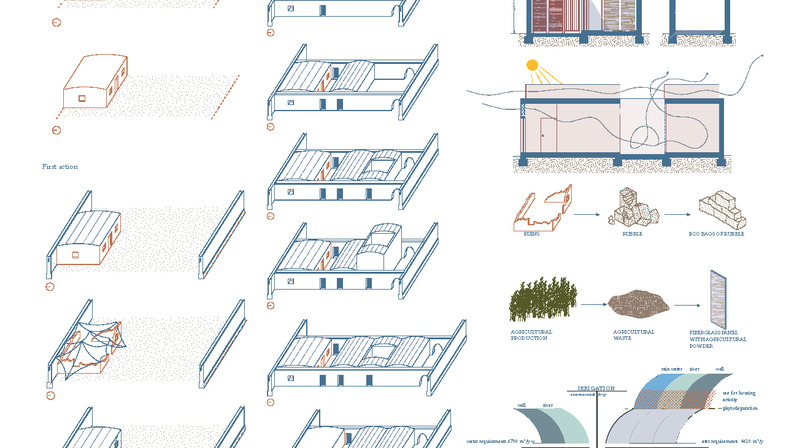
Name / Surname: Lorenzo Abate
Country:
Company: IUAV
Project Description:
In the thesis I developed a project within the Syrian context in a post-war vision (2011) developing a model for a replicable ecological reconstruction in the different agricultural territories. Water, in this context, is not only necessary for the livelihood economy, but vital for the anthropic growth of the morphology of urban/rural agglomerations.
In the Western Gherban village in the Al-Hasaka region, the majority of farmers before the war mainly exploited storm precipitation. Subsequently they were constructed in a precarious way and with obsolete technologies the catchment areas of the water extracted in turn from the subsoil using repeatedly pumping machines to diesel.The first fundamental action of the project: construction of a wall of infrastructure able to support the first water and energy needs. Subsequently, a building program of progressive typological and morphological implementation gives rise to an urban action with a compact shape and no longer reduced and uncontrolled in the surrounding productive landscape.
Inside the water flows in diversified channels for the various types of uses (drinking and not)then is recovered and treated with the process of phyto-purification and finally conveyed in drip irrigation systems to the agricultural fields. The project strategy aims to represent a common line for the whole territory with the provision of a system completed by individual/collective photovoltaic systems and the exploitation of residues of agricultural processing and as fuel for small biogas plants. The outcome of the project would thus represent a community where the modern building-planning tool would be manipulated“by individuals and the community as a whole, thus generating from personal autonomy a collective social efficiency.
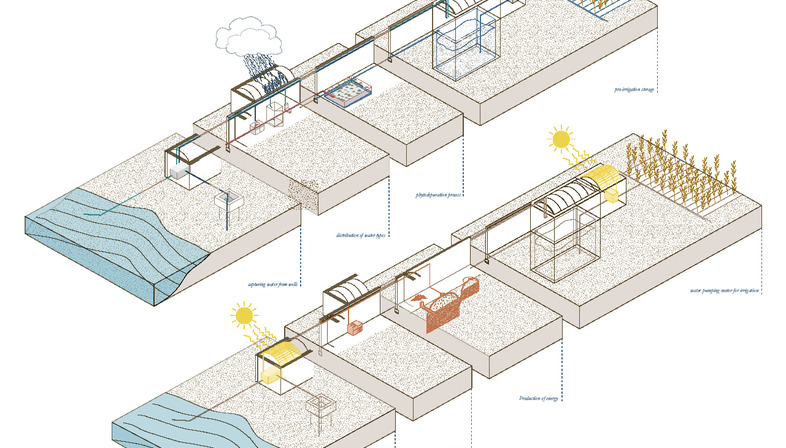
Name / Surname: Lorenzo Abate
Country:
Company: IUAV
Project Description:
In the thesis I developed a project within the Syrian context in a post-war vision (2011) developing a model for a replicable ecological reconstruction in the different agricultural territories. Water, in this context, is not only necessary for the livelihood economy, but vital for the anthropic growth of the morphology of urban/rural agglomerations.
In the Western Gherban village in the Al-Hasaka region, the majority of farmers before the war mainly exploited storm precipitation. Subsequently they were constructed in a precarious way and with obsolete technologies the catchment areas of the water extracted in turn from the subsoil using repeatedly pumping machines to diesel.The first fundamental action of the project: construction of a wall of infrastructure able to support the first water and energy needs. Subsequently, a building program of progressive typological and morphological implementation gives rise to an urban action with a compact shape and no longer reduced and uncontrolled in the surrounding productive landscape.
Inside the water flows in diversified channels for the various types of uses (drinking and not)then is recovered and treated with the process of phyto-purification and finally conveyed in drip irrigation systems to the agricultural fields. The project strategy aims to represent a common line for the whole territory with the provision of a system completed by individual/collective photovoltaic systems and the exploitation of residues of agricultural processing and as fuel for small biogas plants. The outcome of the project would thus represent a community where the modern building-planning tool would be manipulated“by individuals and the community as a whole, thus generating from personal autonomy a collective social efficiency.
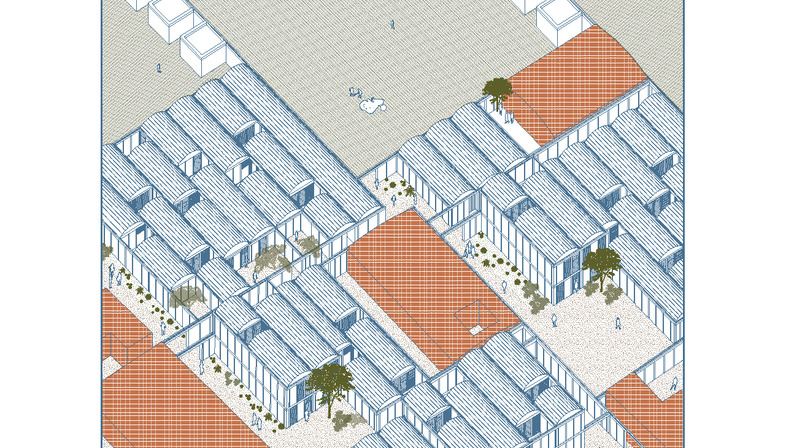
Name / Surname: Lorenzo Abate
Country:
Company: IUAV
Project Description:
In the thesis I developed a project within the Syrian context in a post-war vision (2011) developing a model for a replicable ecological reconstruction in the different agricultural territories. Water, in this context, is not only necessary for the livelihood economy, but vital for the anthropic growth of the morphology of urban/rural agglomerations.
In the Western Gherban village in the Al-Hasaka region, the majority of farmers before the war mainly exploited storm precipitation. Subsequently they were constructed in a precarious way and with obsolete technologies the catchment areas of the water extracted in turn from the subsoil using repeatedly pumping machines to diesel.The first fundamental action of the project: construction of a wall of infrastructure able to support the first water and energy needs. Subsequently, a building program of progressive typological and morphological implementation gives rise to an urban action with a compact shape and no longer reduced and uncontrolled in the surrounding productive landscape.
Inside the water flows in diversified channels for the various types of uses (drinking and not)then is recovered and treated with the process of phyto-purification and finally conveyed in drip irrigation systems to the agricultural fields. The project strategy aims to represent a common line for the whole territory with the provision of a system completed by individual/collective photovoltaic systems and the exploitation of residues of agricultural processing and as fuel for small biogas plants. The outcome of the project would thus represent a community where the modern building-planning tool would be manipulated“by individuals and the community as a whole, thus generating from personal autonomy a collective social efficiency.
Excerpt from the motivations of the Jury:
The “Common Line for the Reconstruction” project demonstrates a comprehensive reflection over the impact brought about by war and destruction in a fragile agricultural territory.
An understanding of the environmental challenges that the area is facing drive architectural design, typological studies and urban morphology towards the regenerative process of the area.
The wall of infrastructure acts as a water device, as a backbone for progressive urban growth, and as a metaphor of the new life that it will contribute to generate.
Although addressing a site specific solution, the project promotes a replicable and scalable solution for other territories affected by water scarcity and lack of water distribution network, demonstrating a rewarding balance of innovation, environmental awareness and architectural quality.
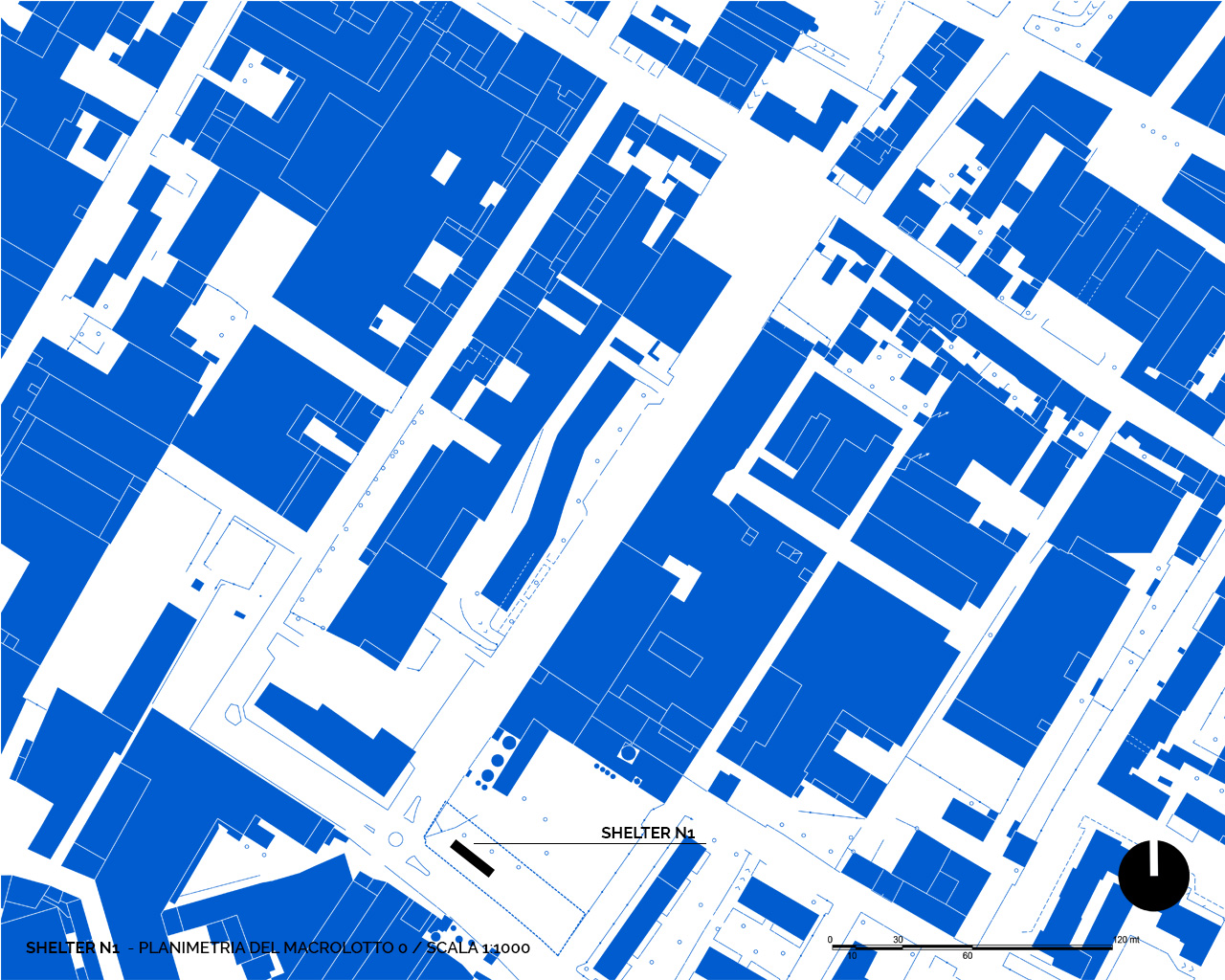
Name / Surname: Emanuele Barili
Country:
Company: ECOL
Project Description:
Shelter n.1 is an itinerant infrastructure, assembled for the first time in the Macrolotto 0 district of Prato, inside an abandoned industrial yard. Recently acquired by the Municipality of Prato, before its permanent transformation into a public park, the area has been opened as a temporary public space, allowing the citizens to immediately enjoy a new public property. The intervention is part of a series of special projects on urban security financed by Regione Toscana, to promote active forms of territory control. The temporary pavilion hosted a series of summer activities that animated a neighborhood characterized by a problematic social condition due to the lack of public spaces, and by the presence of one of Europe's largest Chinese communities. The structure is built with a pipe-joint system and connected to the ground by 32 jersey barriers, which can be used as seats. These concrete ballasts are placed on an already existing asphalt platform: this rectangular area, once used as an area for trucks, has become the dimensional matrix of the project. The creation of the garden around the structure was carried out through a series of collaborative construction sites, shaping the vegetation and partially reusing materials found on site. Shelter n1 was dismantled in December 2018, during summer it will be reassembled in another part of the city which needs to be regenerated.
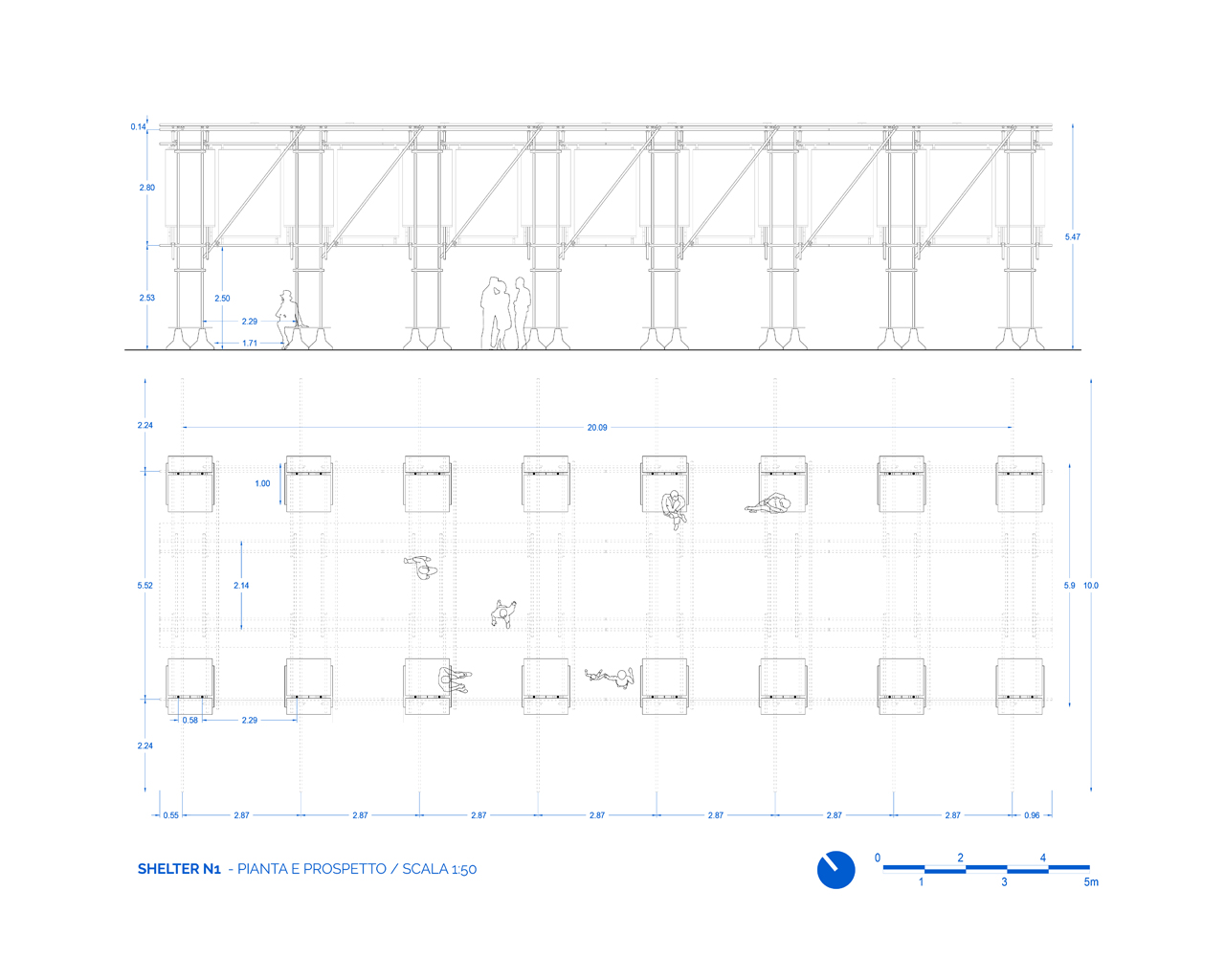
Name / Surname: Emanuele Barili
Country:
Company: ECOL
Project Description:
Shelter n.1 is an itinerant infrastructure, assembled for the first time in the Macrolotto 0 district of Prato, inside an abandoned industrial yard. Recently acquired by the Municipality of Prato, before its permanent transformation into a public park, the area has been opened as a temporary public space, allowing the citizens to immediately enjoy a new public property. The intervention is part of a series of special projects on urban security financed by Regione Toscana, to promote active forms of territory control. The temporary pavilion hosted a series of summer activities that animated a neighborhood characterized by a problematic social condition due to the lack of public spaces, and by the presence of one of Europe's largest Chinese communities. The structure is built with a pipe-joint system and connected to the ground by 32 jersey barriers, which can be used as seats. These concrete ballasts are placed on an already existing asphalt platform: this rectangular area, once used as an area for trucks, has become the dimensional matrix of the project. The creation of the garden around the structure was carried out through a series of collaborative construction sites, shaping the vegetation and partially reusing materials found on site. Shelter n1 was dismantled in December 2018, during summer it will be reassembled in another part of the city which needs to be regenerated.
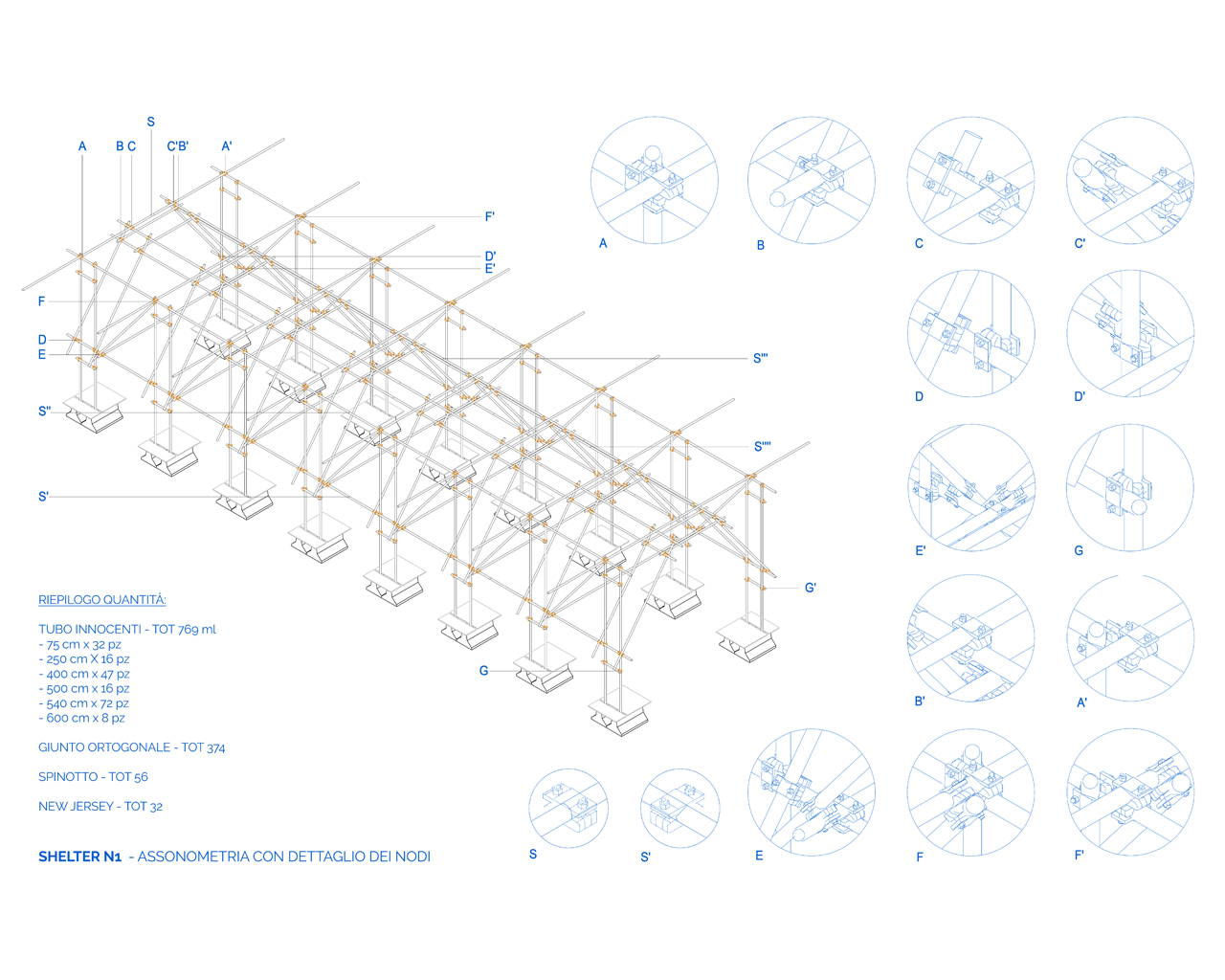
Name / Surname: Emanuele Barili
Country:
Company: ECOL
Project Description:
Shelter n.1 is an itinerant infrastructure, assembled for the first time in the Macrolotto 0 district of Prato, inside an abandoned industrial yard. Recently acquired by the Municipality of Prato, before its permanent transformation into a public park, the area has been opened as a temporary public space, allowing the citizens to immediately enjoy a new public property. The intervention is part of a series of special projects on urban security financed by Regione Toscana, to promote active forms of territory control. The temporary pavilion hosted a series of summer activities that animated a neighborhood characterized by a problematic social condition due to the lack of public spaces, and by the presence of one of Europe's largest Chinese communities. The structure is built with a pipe-joint system and connected to the ground by 32 jersey barriers, which can be used as seats. These concrete ballasts are placed on an already existing asphalt platform: this rectangular area, once used as an area for trucks, has become the dimensional matrix of the project. The creation of the garden around the structure was carried out through a series of collaborative construction sites, shaping the vegetation and partially reusing materials found on site. Shelter n1 was dismantled in December 2018, during summer it will be reassembled in another part of the city which needs to be regenerated.
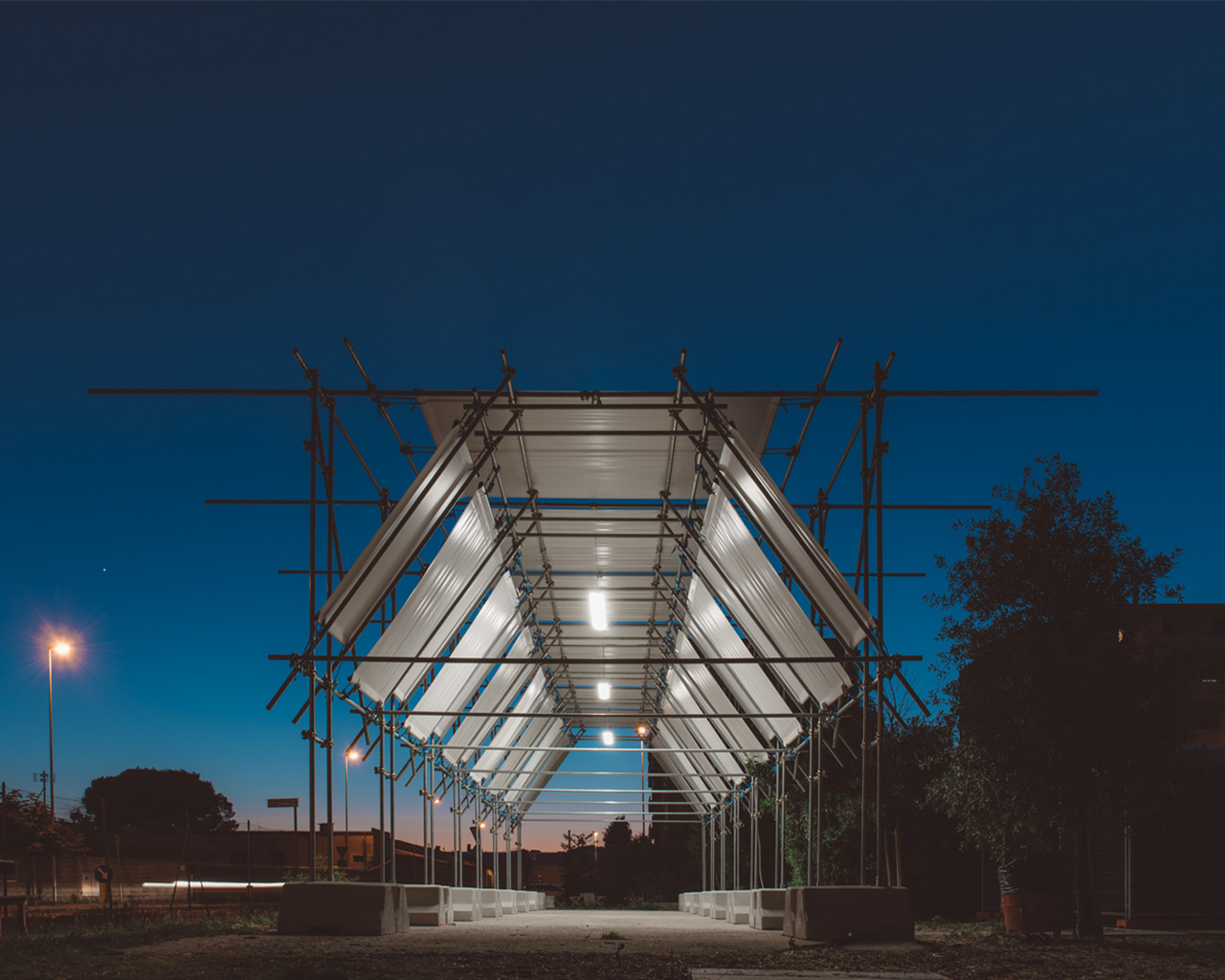
Name / Surname: Emanuele Barili
Country:
Company: ECOL
Project Description:
Shelter n.1 is an itinerant infrastructure, assembled for the first time in the Macrolotto 0 district of Prato, inside an abandoned industrial yard. Recently acquired by the Municipality of Prato, before its permanent transformation into a public park, the area has been opened as a temporary public space, allowing the citizens to immediately enjoy a new public property. The intervention is part of a series of special projects on urban security financed by Regione Toscana, to promote active forms of territory control. The temporary pavilion hosted a series of summer activities that animated a neighborhood characterized by a problematic social condition due to the lack of public spaces, and by the presence of one of Europe's largest Chinese communities. The structure is built with a pipe-joint system and connected to the ground by 32 jersey barriers, which can be used as seats. These concrete ballasts are placed on an already existing asphalt platform: this rectangular area, once used as an area for trucks, has become the dimensional matrix of the project. The creation of the garden around the structure was carried out through a series of collaborative construction sites, shaping the vegetation and partially reusing materials found on site. Shelter n1 was dismantled in December 2018, during summer it will be reassembled in another part of the city which needs to be regenerated.
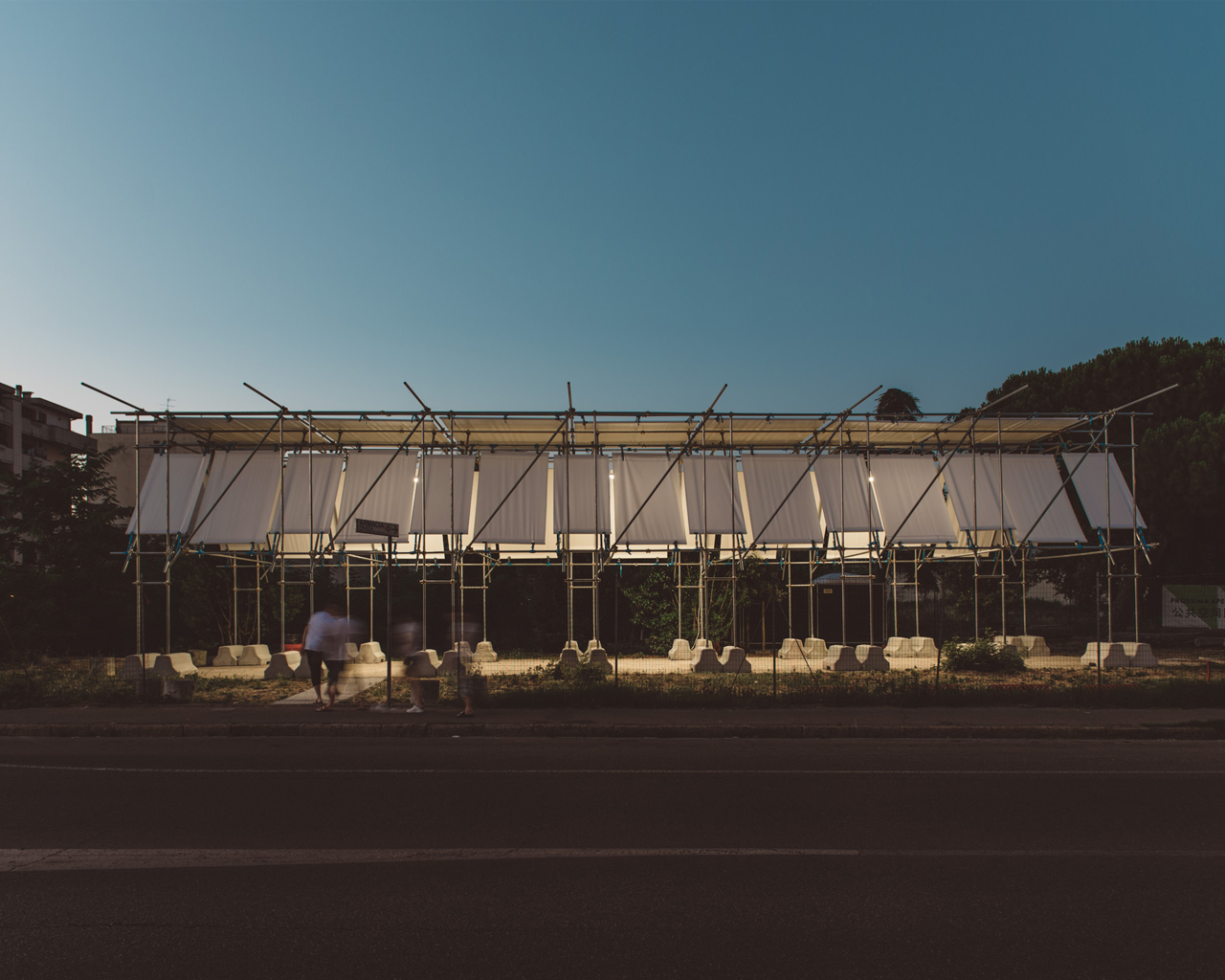
Name / Surname: Emanuele Barili
Country:
Company: ECOL
Project Description:
Shelter n.1 is an itinerant infrastructure, assembled for the first time in the Macrolotto 0 district of Prato, inside an abandoned industrial yard. Recently acquired by the Municipality of Prato, before its permanent transformation into a public park, the area has been opened as a temporary public space, allowing the citizens to immediately enjoy a new public property. The intervention is part of a series of special projects on urban security financed by Regione Toscana, to promote active forms of territory control. The temporary pavilion hosted a series of summer activities that animated a neighborhood characterized by a problematic social condition due to the lack of public spaces, and by the presence of one of Europe's largest Chinese communities. The structure is built with a pipe-joint system and connected to the ground by 32 jersey barriers, which can be used as seats. These concrete ballasts are placed on an already existing asphalt platform: this rectangular area, once used as an area for trucks, has become the dimensional matrix of the project. The creation of the garden around the structure was carried out through a series of collaborative construction sites, shaping the vegetation and partially reusing materials found on site. Shelter n1 was dismantled in December 2018, during summer it will be reassembled in another part of the city which needs to be regenerated.
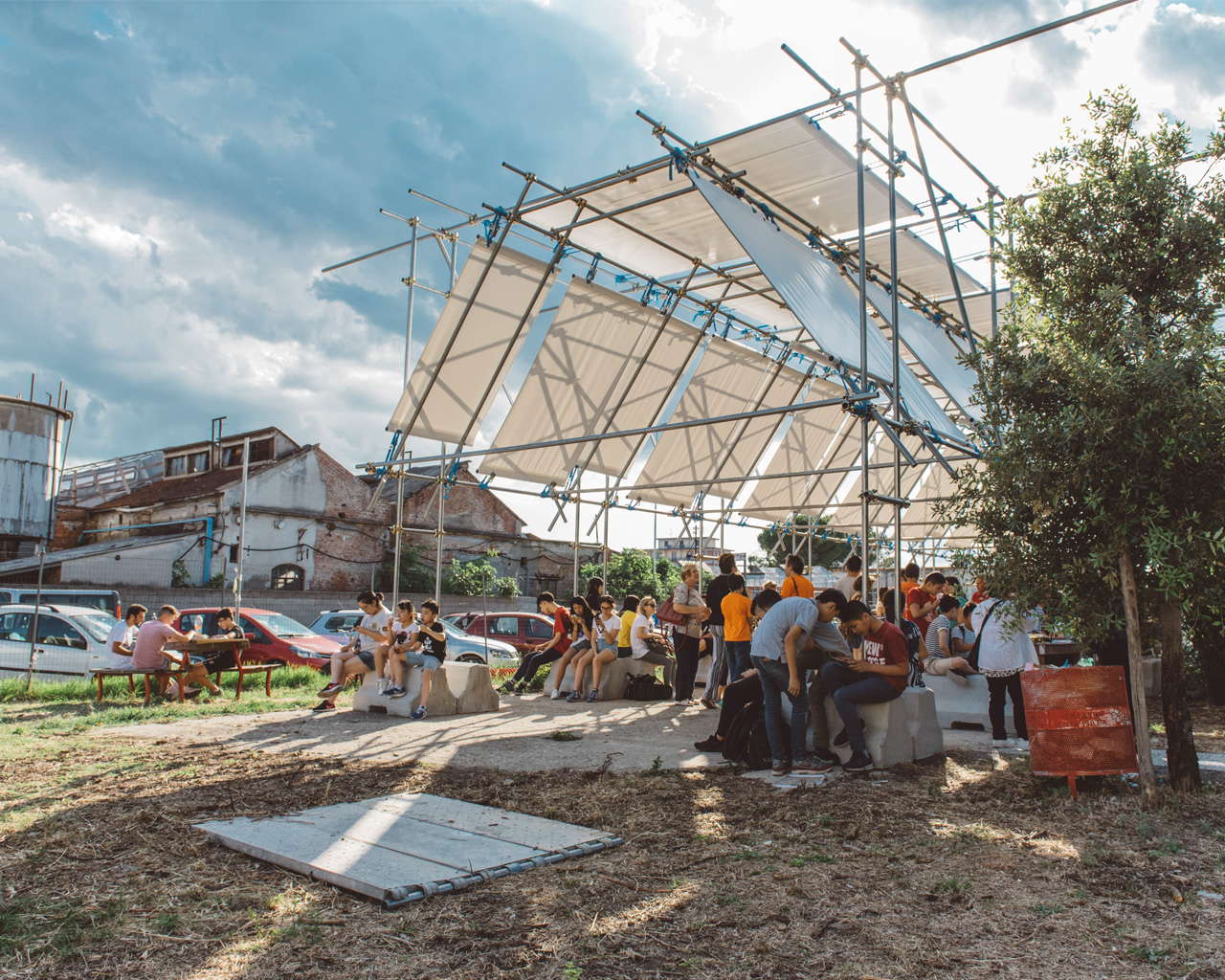
Name / Surname: Emanuele Barili
Country:
Company: ECOL
Project Description:
Shelter n.1 is an itinerant infrastructure, assembled for the first time in the Macrolotto 0 district of Prato, inside an abandoned industrial yard. Recently acquired by the Municipality of Prato, before its permanent transformation into a public park, the area has been opened as a temporary public space, allowing the citizens to immediately enjoy a new public property. The intervention is part of a series of special projects on urban security financed by Regione Toscana, to promote active forms of territory control. The temporary pavilion hosted a series of summer activities that animated a neighborhood characterized by a problematic social condition due to the lack of public spaces, and by the presence of one of Europe's largest Chinese communities. The structure is built with a pipe-joint system and connected to the ground by 32 jersey barriers, which can be used as seats. These concrete ballasts are placed on an already existing asphalt platform: this rectangular area, once used as an area for trucks, has become the dimensional matrix of the project. The creation of the garden around the structure was carried out through a series of collaborative construction sites, shaping the vegetation and partially reusing materials found on site. Shelter n1 was dismantled in December 2018, during summer it will be reassembled in another part of the city which needs to be regenerated.
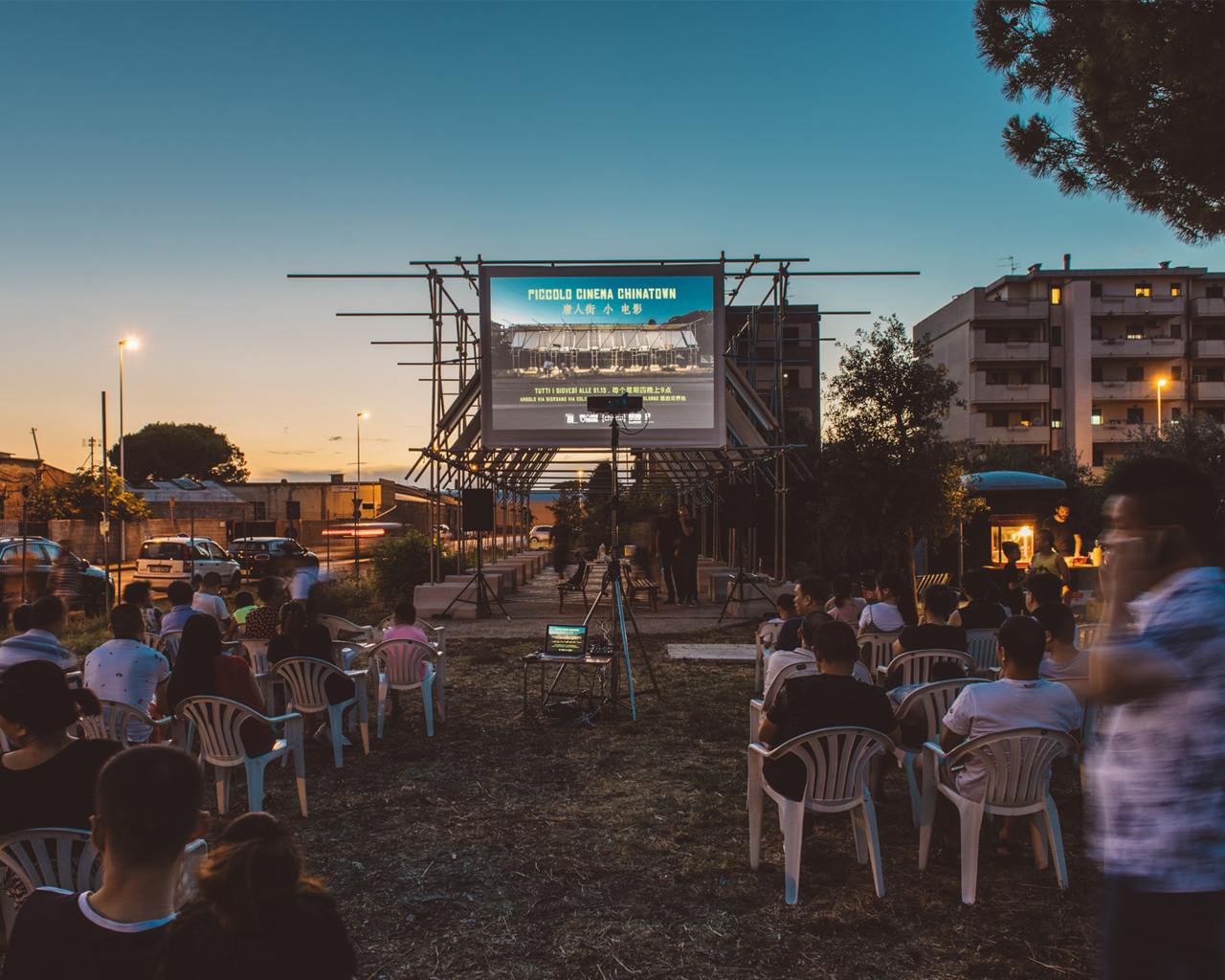
Name / Surname: Emanuele Barili
Country:
Company: ECOL
Project Description:
Shelter n.1 is an itinerant infrastructure, assembled for the first time in the Macrolotto 0 district of Prato, inside an abandoned industrial yard. Recently acquired by the Municipality of Prato, before its permanent transformation into a public park, the area has been opened as a temporary public space, allowing the citizens to immediately enjoy a new public property. The intervention is part of a series of special projects on urban security financed by Regione Toscana, to promote active forms of territory control. The temporary pavilion hosted a series of summer activities that animated a neighborhood characterized by a problematic social condition due to the lack of public spaces, and by the presence of one of Europe's largest Chinese communities. The structure is built with a pipe-joint system and connected to the ground by 32 jersey barriers, which can be used as seats. These concrete ballasts are placed on an already existing asphalt platform: this rectangular area, once used as an area for trucks, has become the dimensional matrix of the project. The creation of the garden around the structure was carried out through a series of collaborative construction sites, shaping the vegetation and partially reusing materials found on site. Shelter n1 was dismantled in December 2018, during summer it will be reassembled in another part of the city which needs to be regenerated.
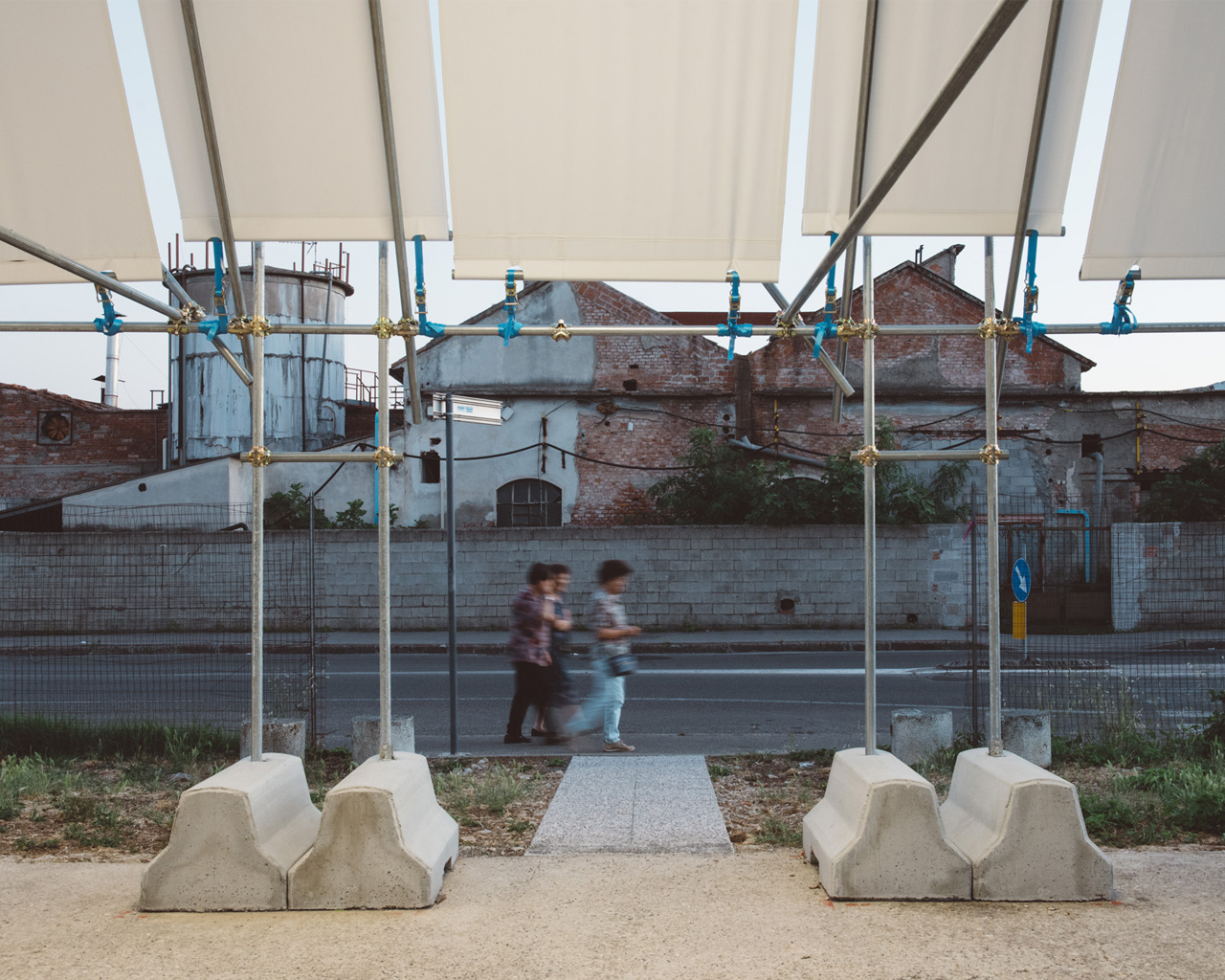
Name / Surname: Emanuele Barili
Country:
Company: ECOL
Project Description:
Shelter n.1 is an itinerant infrastructure, assembled for the first time in the Macrolotto 0 district of Prato, inside an abandoned industrial yard. Recently acquired by the Municipality of Prato, before its permanent transformation into a public park, the area has been opened as a temporary public space, allowing the citizens to immediately enjoy a new public property. The intervention is part of a series of special projects on urban security financed by Regione Toscana, to promote active forms of territory control. The temporary pavilion hosted a series of summer activities that animated a neighborhood characterized by a problematic social condition due to the lack of public spaces, and by the presence of one of Europe's largest Chinese communities. The structure is built with a pipe-joint system and connected to the ground by 32 jersey barriers, which can be used as seats. These concrete ballasts are placed on an already existing asphalt platform: this rectangular area, once used as an area for trucks, has become the dimensional matrix of the project. The creation of the garden around the structure was carried out through a series of collaborative construction sites, shaping the vegetation and partially reusing materials found on site. Shelter n1 was dismantled in December 2018, during summer it will be reassembled in another part of the city which needs to be regenerated.
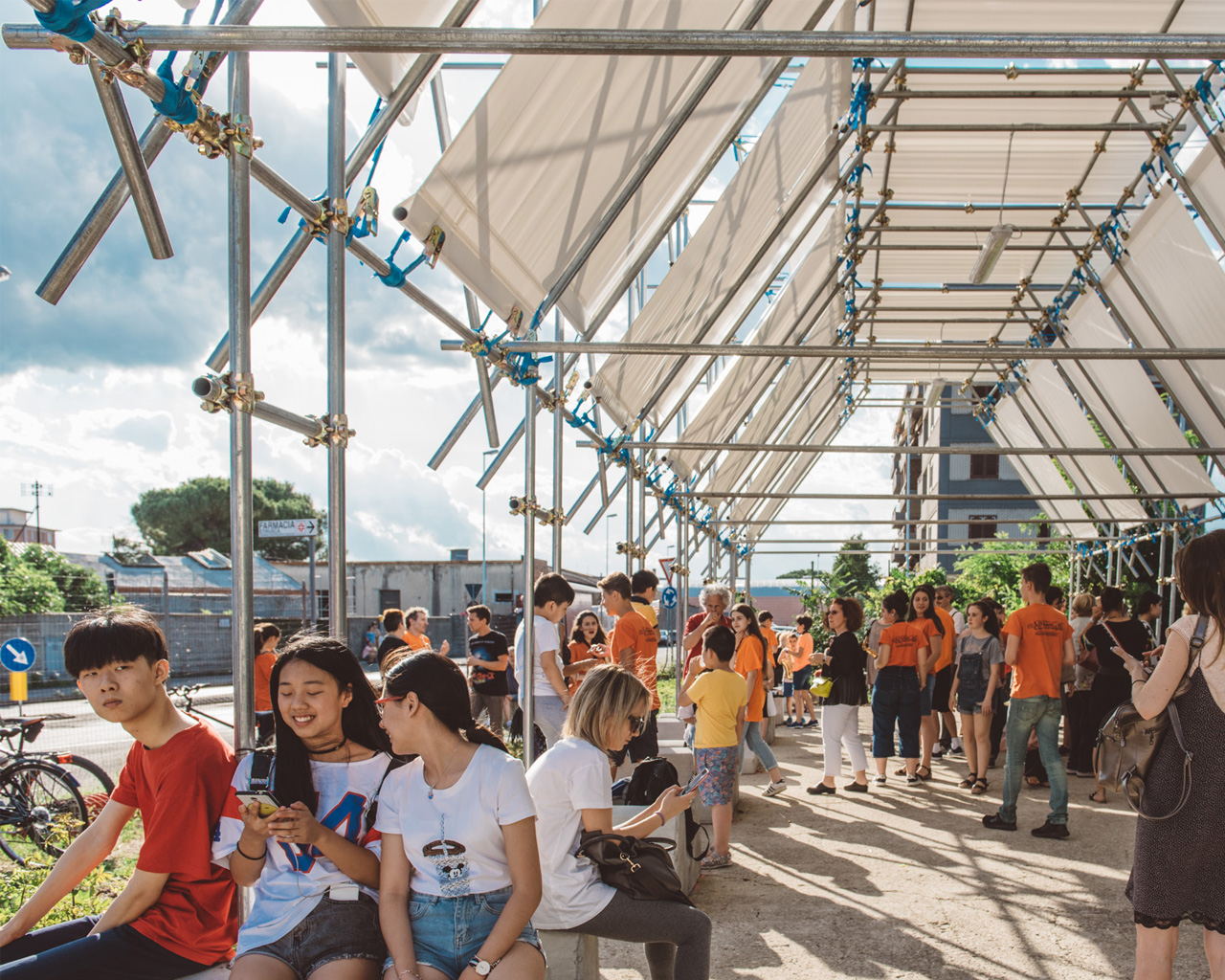
Name / Surname: Emanuele Barili
Country:
Company: ECOL
Project Description:
Shelter n.1 is an itinerant infrastructure, assembled for the first time in the Macrolotto 0 district of Prato, inside an abandoned industrial yard. Recently acquired by the Municipality of Prato, before its permanent transformation into a public park, the area has been opened as a temporary public space, allowing the citizens to immediately enjoy a new public property. The intervention is part of a series of special projects on urban security financed by Regione Toscana, to promote active forms of territory control. The temporary pavilion hosted a series of summer activities that animated a neighborhood characterized by a problematic social condition due to the lack of public spaces, and by the presence of one of Europe's largest Chinese communities. The structure is built with a pipe-joint system and connected to the ground by 32 jersey barriers, which can be used as seats. These concrete ballasts are placed on an already existing asphalt platform: this rectangular area, once used as an area for trucks, has become the dimensional matrix of the project. The creation of the garden around the structure was carried out through a series of collaborative construction sites, shaping the vegetation and partially reusing materials found on site. Shelter n1 was dismantled in December 2018, during summer it will be reassembled in another part of the city which needs to be regenerated.
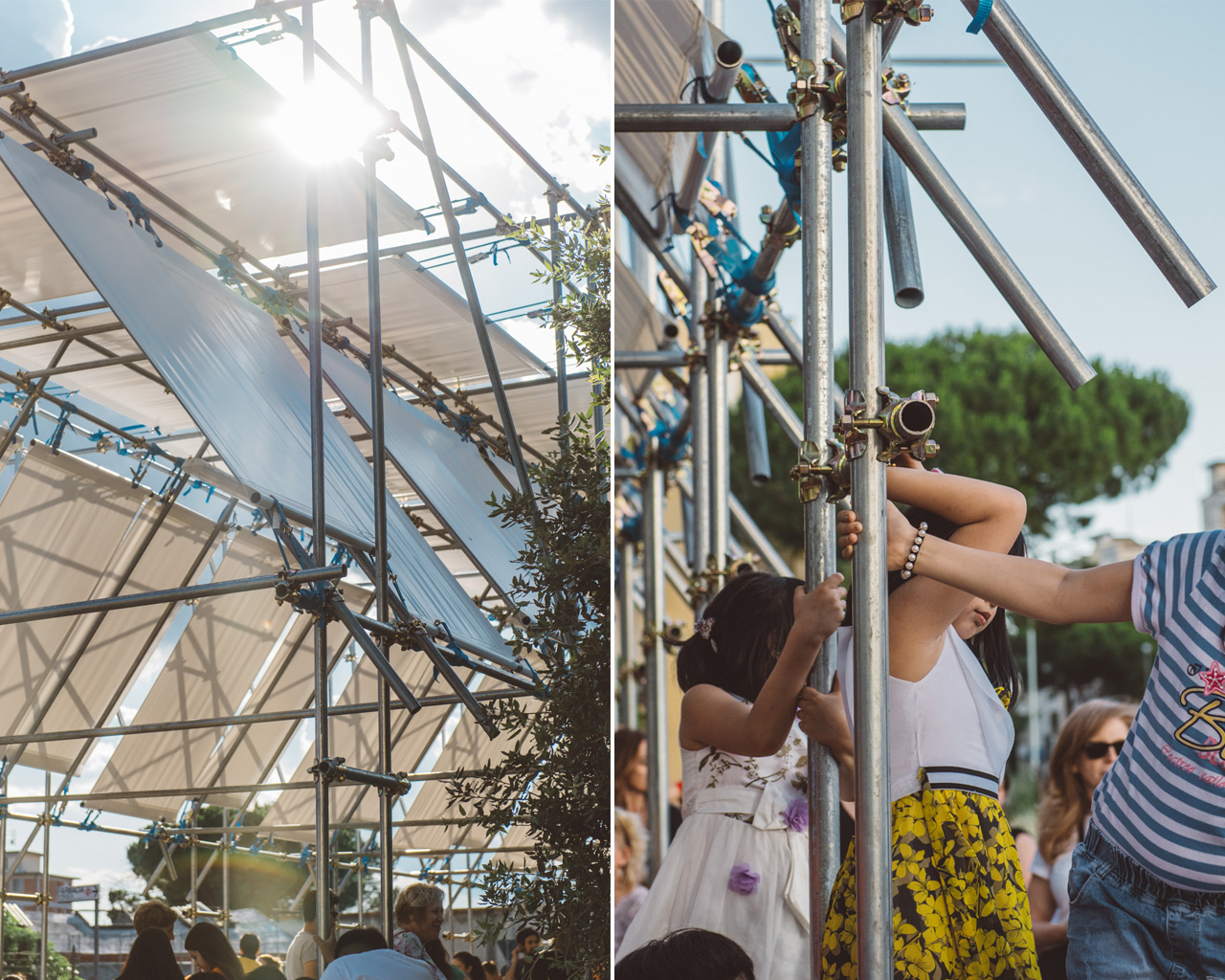
Name / Surname: Emanuele Barili
Country:
Company: ECOL
Project Description:
Shelter n.1 is an itinerant infrastructure, assembled for the first time in the Macrolotto 0 district of Prato, inside an abandoned industrial yard. Recently acquired by the Municipality of Prato, before its permanent transformation into a public park, the area has been opened as a temporary public space, allowing the citizens to immediately enjoy a new public property. The intervention is part of a series of special projects on urban security financed by Regione Toscana, to promote active forms of territory control. The temporary pavilion hosted a series of summer activities that animated a neighborhood characterized by a problematic social condition due to the lack of public spaces, and by the presence of one of Europe's largest Chinese communities. The structure is built with a pipe-joint system and connected to the ground by 32 jersey barriers, which can be used as seats. These concrete ballasts are placed on an already existing asphalt platform: this rectangular area, once used as an area for trucks, has become the dimensional matrix of the project. The creation of the garden around the structure was carried out through a series of collaborative construction sites, shaping the vegetation and partially reusing materials found on site. Shelter n1 was dismantled in December 2018, during summer it will be reassembled in another part of the city which needs to be regenerated.
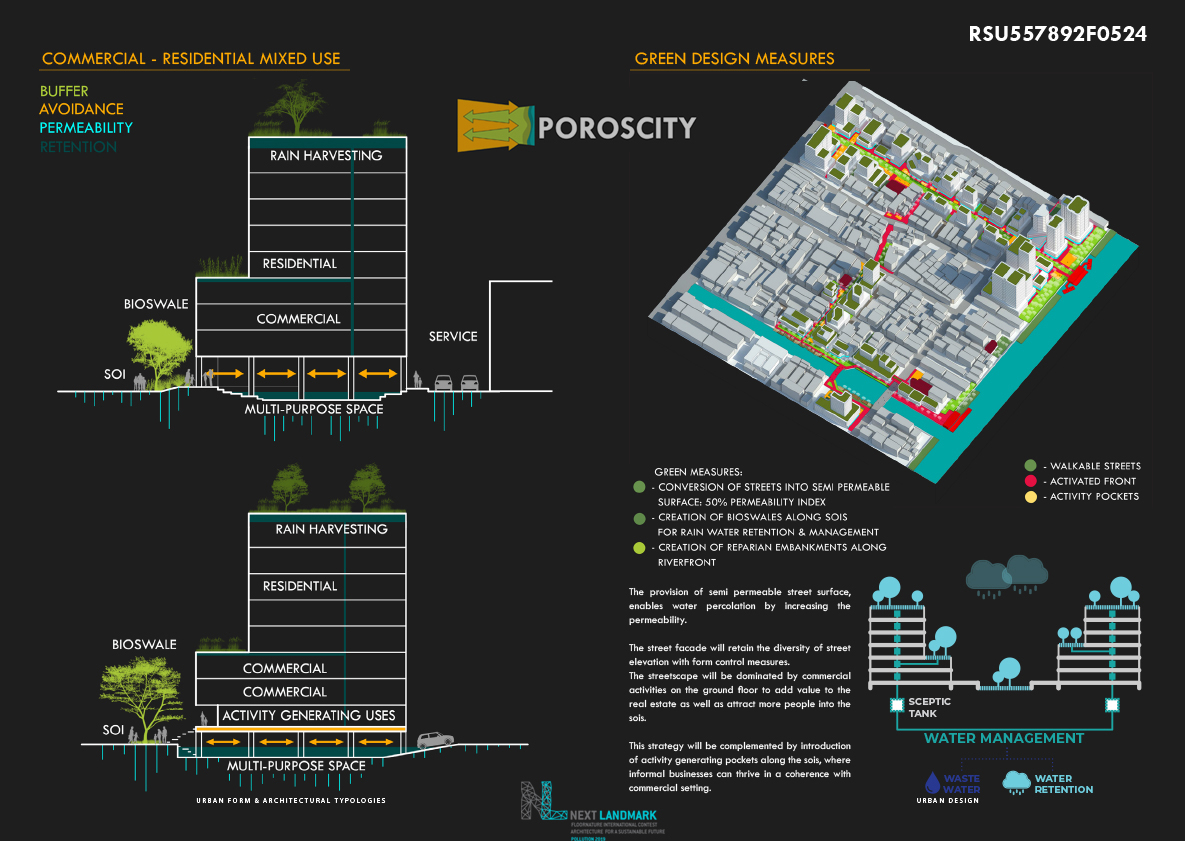
Name / Surname: Abhishek Rahate
Country:
Company: twenty eight architect
Project Description:
‘Poroscity’ is a place where people, their activities, and their natural environment are meshed seamlessly to the urban fabric of the city. This is our vision for Bangkok amidst its urban development. Presently Bangkok remains in the forefront of Thailand to bring the country to the next level of financial and economic leadership in Asia and rest of the world. However, its relentless effort to achieve its goal is faced with a lot of difficulties and environmental issues.
With its population hitting the 10M mark, people in Bangkok are expected to increase at an even rapid pace - while inefficient public transport system, and increased dependency on cars will only create bigger challenges in moving towards an economically sustainable city.
Bangkok as a poroscity will be a model for reduced dependency on private mobility, thereby safeguarding cleaner air, better roads, free streets. Increased soil permeability, unclogged canals and a strong surface drainage system will help absorb rain water better, thereby reducing the risk of floods. Altogether, this will provide a healthy and safe environment for the residents of Bangkok, an active area for economic growth, and a mitigating measure to improve its build environment.
These strategies are employed and designed to improve the Social, Economic and Ecological aspects of Bangkok and make it a Truly Resilient and Sustainable Urbanized City for everyone.This Resilience Strategies outline priorities which is a collection of small scale responses to create large impact on the most important issues. These actions are a clarion call to the citizens of Bangkok to get involved in their implementation.
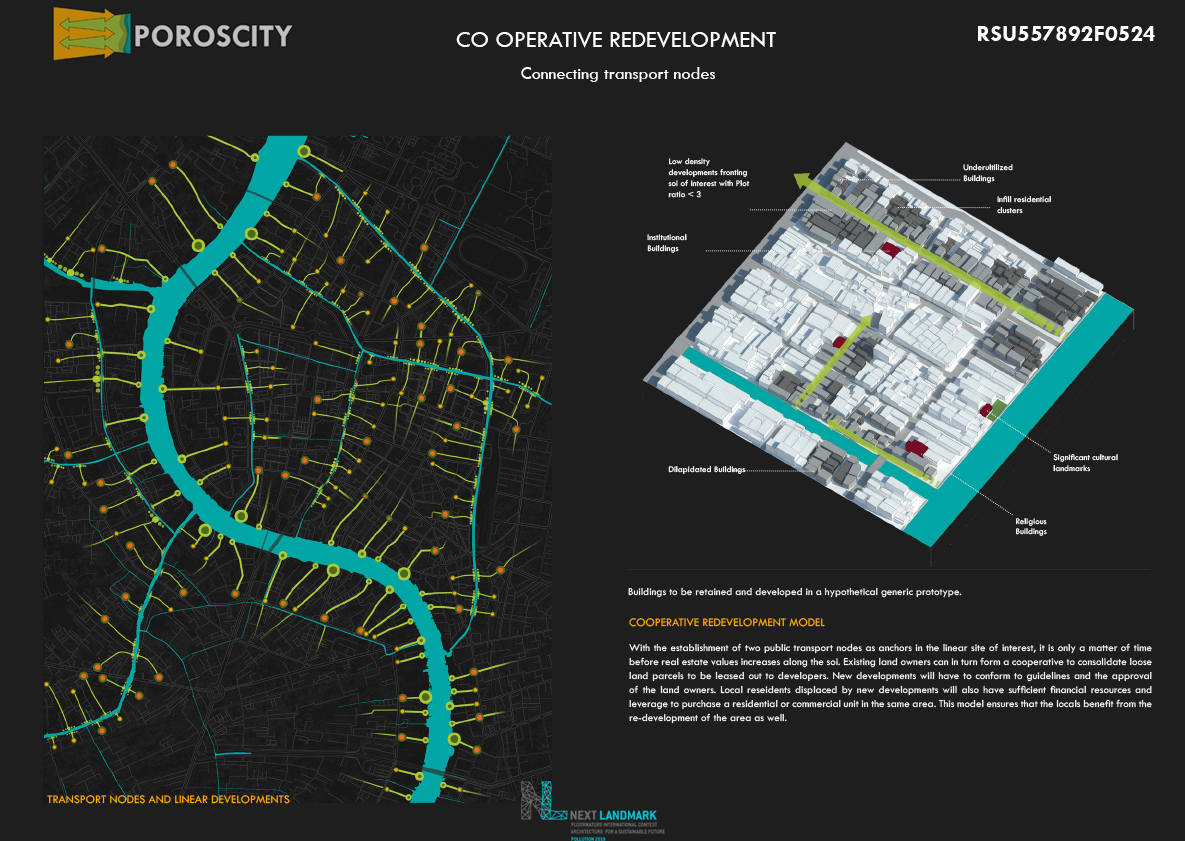
Name / Surname: Abhishek Rahate
Country:
Company: twenty eight architect
Project Description:
‘Poroscity’ is a place where people, their activities, and their natural environment are meshed seamlessly to the urban fabric of the city. This is our vision for Bangkok amidst its urban development. Presently Bangkok remains in the forefront of Thailand to bring the country to the next level of financial and economic leadership in Asia and rest of the world. However, its relentless effort to achieve its goal is faced with a lot of difficulties and environmental issues.
With its population hitting the 10M mark, people in Bangkok are expected to increase at an even rapid pace - while inefficient public transport system, and increased dependency on cars will only create bigger challenges in moving towards an economically sustainable city.
Bangkok as a poroscity will be a model for reduced dependency on private mobility, thereby safeguarding cleaner air, better roads, free streets. Increased soil permeability, unclogged canals and a strong surface drainage system will help absorb rain water better, thereby reducing the risk of floods. Altogether, this will provide a healthy and safe environment for the residents of Bangkok, an active area for economic growth, and a mitigating measure to improve its build environment.
These strategies are employed and designed to improve the Social, Economic and Ecological aspects of Bangkok and make it a Truly Resilient and Sustainable Urbanized City for everyone.This Resilience Strategies outline priorities which is a collection of small scale responses to create large impact on the most important issues. These actions are a clarion call to the citizens of Bangkok to get involved in their implementation.
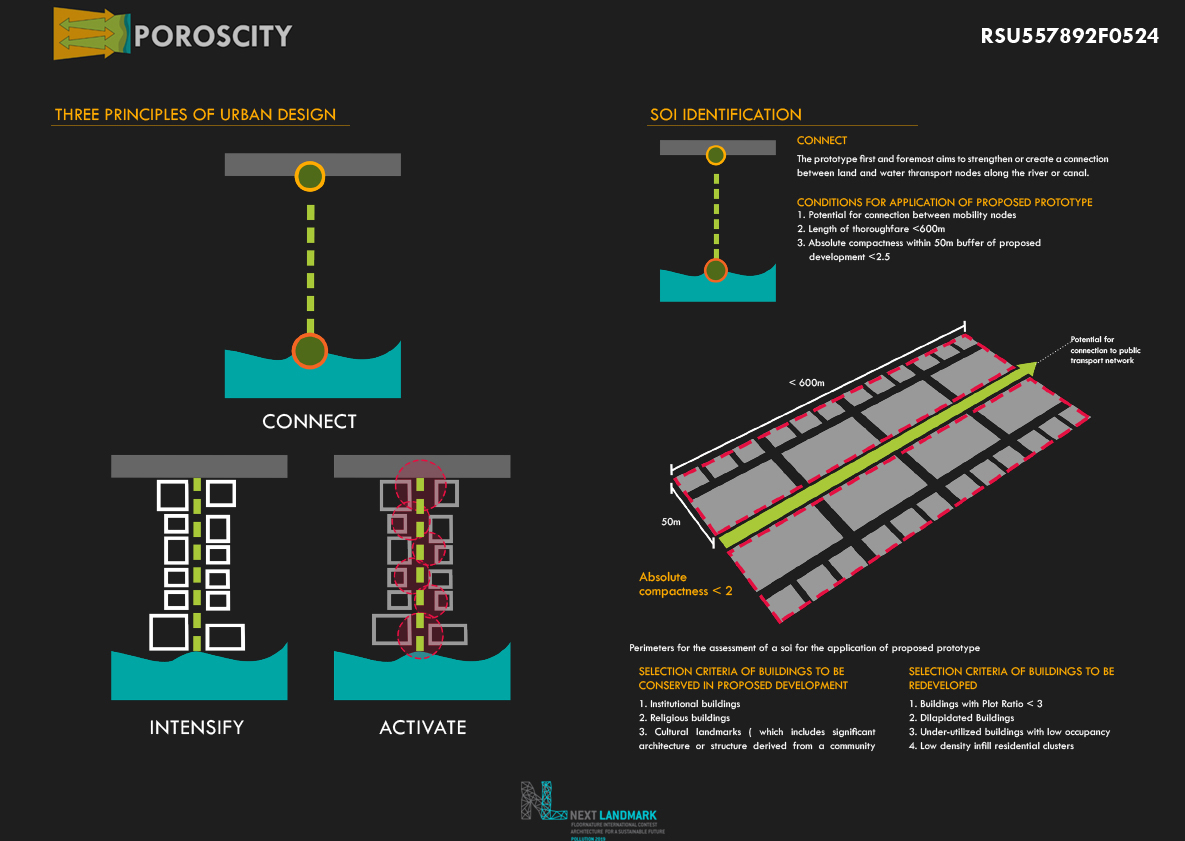
Name / Surname: Abhishek Rahate
Country:
Company: twenty eight architect
Project Description:
‘Poroscity’ is a place where people, their activities, and their natural environment are meshed seamlessly to the urban fabric of the city. This is our vision for Bangkok amidst its urban development. Presently Bangkok remains in the forefront of Thailand to bring the country to the next level of financial and economic leadership in Asia and rest of the world. However, its relentless effort to achieve its goal is faced with a lot of difficulties and environmental issues.
With its population hitting the 10M mark, people in Bangkok are expected to increase at an even rapid pace - while inefficient public transport system, and increased dependency on cars will only create bigger challenges in moving towards an economically sustainable city.
Bangkok as a poroscity will be a model for reduced dependency on private mobility, thereby safeguarding cleaner air, better roads, free streets. Increased soil permeability, unclogged canals and a strong surface drainage system will help absorb rain water better, thereby reducing the risk of floods. Altogether, this will provide a healthy and safe environment for the residents of Bangkok, an active area for economic growth, and a mitigating measure to improve its build environment.
These strategies are employed and designed to improve the Social, Economic and Ecological aspects of Bangkok and make it a Truly Resilient and Sustainable Urbanized City for everyone.This Resilience Strategies outline priorities which is a collection of small scale responses to create large impact on the most important issues. These actions are a clarion call to the citizens of Bangkok to get involved in their implementation.

Name / Surname: Abhishek Rahate
Country:
Company: twenty eight architect
Project Description:
‘Poroscity’ is a place where people, their activities, and their natural environment are meshed seamlessly to the urban fabric of the city. This is our vision for Bangkok amidst its urban development. Presently Bangkok remains in the forefront of Thailand to bring the country to the next level of financial and economic leadership in Asia and rest of the world. However, its relentless effort to achieve its goal is faced with a lot of difficulties and environmental issues.
With its population hitting the 10M mark, people in Bangkok are expected to increase at an even rapid pace - while inefficient public transport system, and increased dependency on cars will only create bigger challenges in moving towards an economically sustainable city.
Bangkok as a poroscity will be a model for reduced dependency on private mobility, thereby safeguarding cleaner air, better roads, free streets. Increased soil permeability, unclogged canals and a strong surface drainage system will help absorb rain water better, thereby reducing the risk of floods. Altogether, this will provide a healthy and safe environment for the residents of Bangkok, an active area for economic growth, and a mitigating measure to improve its build environment.
These strategies are employed and designed to improve the Social, Economic and Ecological aspects of Bangkok and make it a Truly Resilient and Sustainable Urbanized City for everyone.This Resilience Strategies outline priorities which is a collection of small scale responses to create large impact on the most important issues. These actions are a clarion call to the citizens of Bangkok to get involved in their implementation.
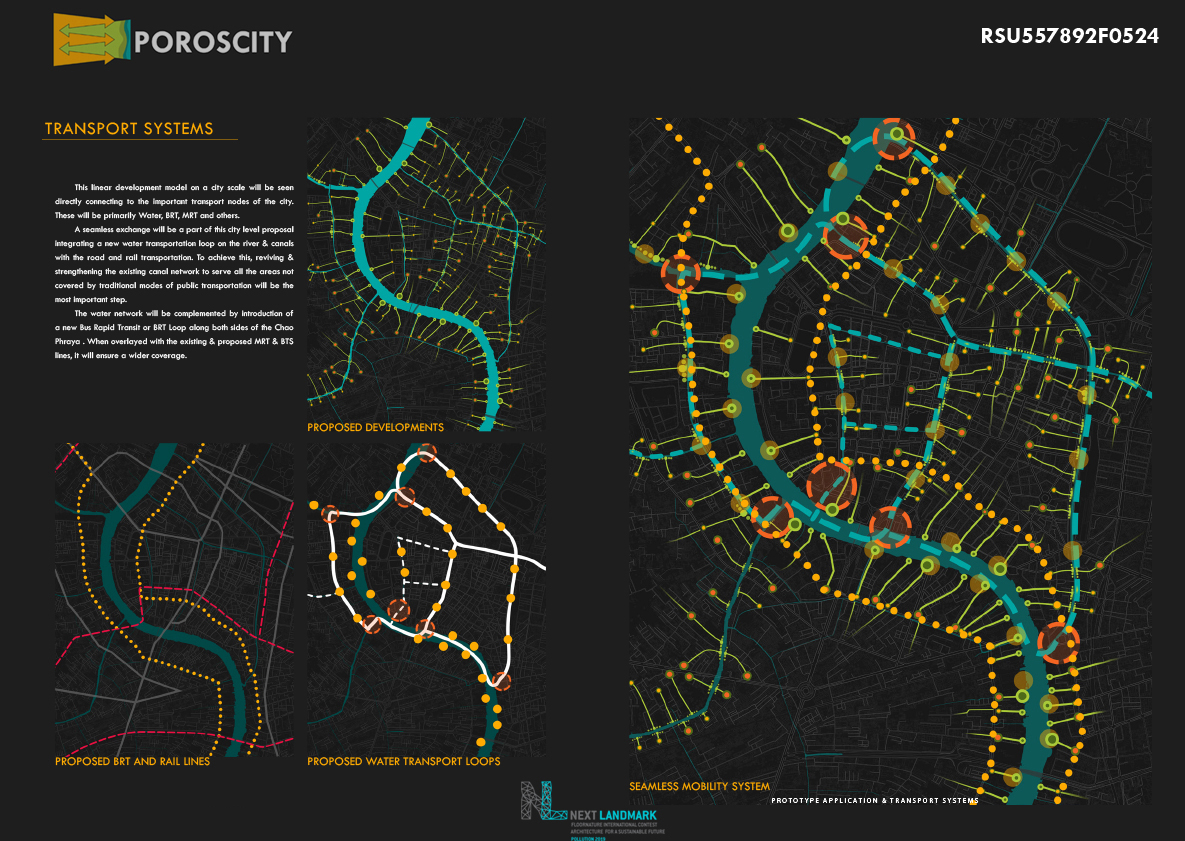
Name / Surname: Abhishek Rahate
Country:
Company: twenty eight architect
Project Description:
‘Poroscity’ is a place where people, their activities, and their natural environment are meshed seamlessly to the urban fabric of the city. This is our vision for Bangkok amidst its urban development. Presently Bangkok remains in the forefront of Thailand to bring the country to the next level of financial and economic leadership in Asia and rest of the world. However, its relentless effort to achieve its goal is faced with a lot of difficulties and environmental issues.
With its population hitting the 10M mark, people in Bangkok are expected to increase at an even rapid pace - while inefficient public transport system, and increased dependency on cars will only create bigger challenges in moving towards an economically sustainable city.
Bangkok as a poroscity will be a model for reduced dependency on private mobility, thereby safeguarding cleaner air, better roads, free streets. Increased soil permeability, unclogged canals and a strong surface drainage system will help absorb rain water better, thereby reducing the risk of floods. Altogether, this will provide a healthy and safe environment for the residents of Bangkok, an active area for economic growth, and a mitigating measure to improve its build environment.
These strategies are employed and designed to improve the Social, Economic and Ecological aspects of Bangkok and make it a Truly Resilient and Sustainable Urbanized City for everyone.This Resilience Strategies outline priorities which is a collection of small scale responses to create large impact on the most important issues. These actions are a clarion call to the citizens of Bangkok to get involved in their implementation.
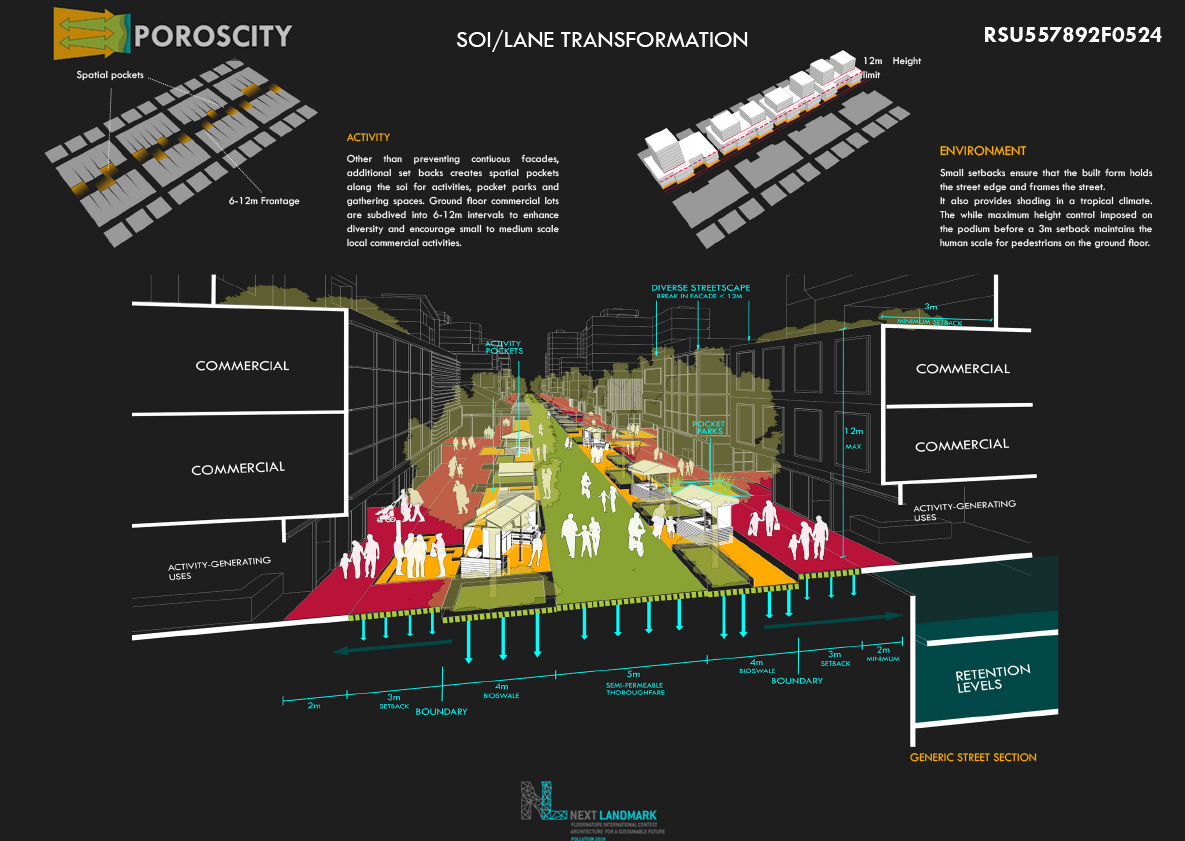
Name / Surname: Abhishek Rahate
Country:
Company: twenty eight architect
Project Description:
‘Poroscity’ is a place where people, their activities, and their natural environment are meshed seamlessly to the urban fabric of the city. This is our vision for Bangkok amidst its urban development. Presently Bangkok remains in the forefront of Thailand to bring the country to the next level of financial and economic leadership in Asia and rest of the world. However, its relentless effort to achieve its goal is faced with a lot of difficulties and environmental issues.
With its population hitting the 10M mark, people in Bangkok are expected to increase at an even rapid pace - while inefficient public transport system, and increased dependency on cars will only create bigger challenges in moving towards an economically sustainable city.
Bangkok as a poroscity will be a model for reduced dependency on private mobility, thereby safeguarding cleaner air, better roads, free streets. Increased soil permeability, unclogged canals and a strong surface drainage system will help absorb rain water better, thereby reducing the risk of floods. Altogether, this will provide a healthy and safe environment for the residents of Bangkok, an active area for economic growth, and a mitigating measure to improve its build environment.
These strategies are employed and designed to improve the Social, Economic and Ecological aspects of Bangkok and make it a Truly Resilient and Sustainable Urbanized City for everyone.This Resilience Strategies outline priorities which is a collection of small scale responses to create large impact on the most important issues. These actions are a clarion call to the citizens of Bangkok to get involved in their implementation.
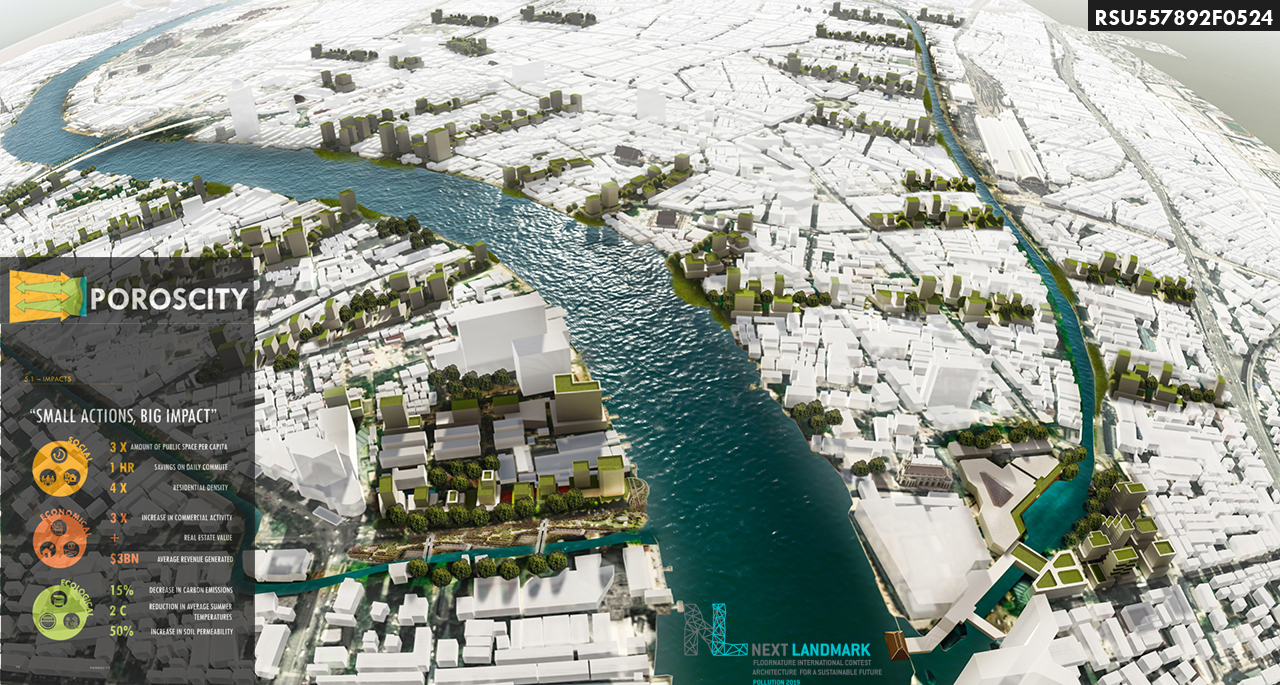
Name / Surname: Abhishek Rahate
Country:
Company: twenty eight architect
Project Description:
‘Poroscity’ is a place where people, their activities, and their natural environment are meshed seamlessly to the urban fabric of the city. This is our vision for Bangkok amidst its urban development. Presently Bangkok remains in the forefront of Thailand to bring the country to the next level of financial and economic leadership in Asia and rest of the world. However, its relentless effort to achieve its goal is faced with a lot of difficulties and environmental issues.
With its population hitting the 10M mark, people in Bangkok are expected to increase at an even rapid pace - while inefficient public transport system, and increased dependency on cars will only create bigger challenges in moving towards an economically sustainable city.
Bangkok as a poroscity will be a model for reduced dependency on private mobility, thereby safeguarding cleaner air, better roads, free streets. Increased soil permeability, unclogged canals and a strong surface drainage system will help absorb rain water better, thereby reducing the risk of floods. Altogether, this will provide a healthy and safe environment for the residents of Bangkok, an active area for economic growth, and a mitigating measure to improve its build environment.
These strategies are employed and designed to improve the Social, Economic and Ecological aspects of Bangkok and make it a Truly Resilient and Sustainable Urbanized City for everyone.This Resilience Strategies outline priorities which is a collection of small scale responses to create large impact on the most important issues. These actions are a clarion call to the citizens of Bangkok to get involved in their implementation.
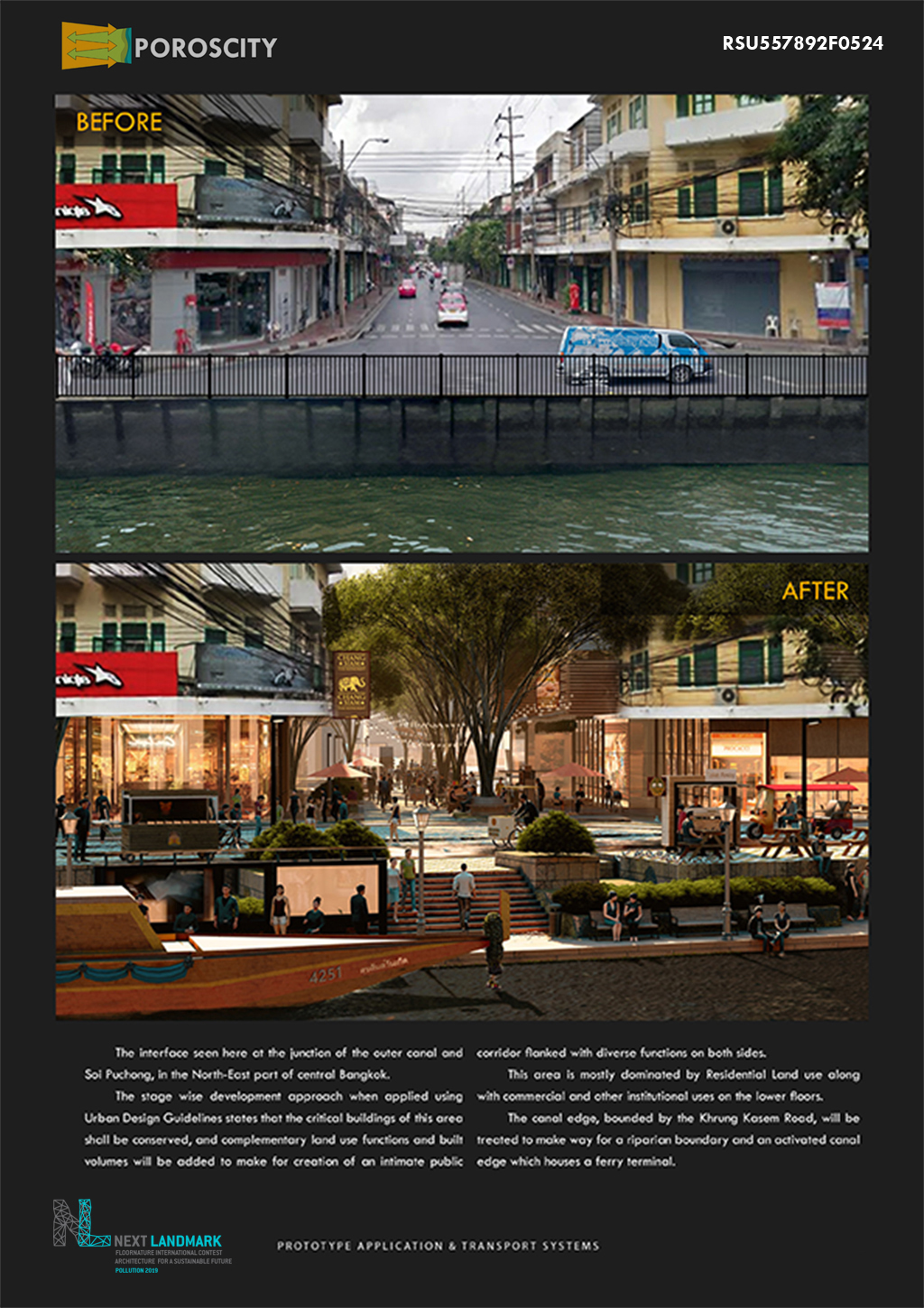
Name / Surname: Abhishek Rahate
Country:
Company: twenty eight architect
Project Description:
‘Poroscity’ is a place where people, their activities, and their natural environment are meshed seamlessly to the urban fabric of the city. This is our vision for Bangkok amidst its urban development. Presently Bangkok remains in the forefront of Thailand to bring the country to the next level of financial and economic leadership in Asia and rest of the world. However, its relentless effort to achieve its goal is faced with a lot of difficulties and environmental issues.
With its population hitting the 10M mark, people in Bangkok are expected to increase at an even rapid pace - while inefficient public transport system, and increased dependency on cars will only create bigger challenges in moving towards an economically sustainable city.
Bangkok as a poroscity will be a model for reduced dependency on private mobility, thereby safeguarding cleaner air, better roads, free streets. Increased soil permeability, unclogged canals and a strong surface drainage system will help absorb rain water better, thereby reducing the risk of floods. Altogether, this will provide a healthy and safe environment for the residents of Bangkok, an active area for economic growth, and a mitigating measure to improve its build environment.
These strategies are employed and designed to improve the Social, Economic and Ecological aspects of Bangkok and make it a Truly Resilient and Sustainable Urbanized City for everyone.This Resilience Strategies outline priorities which is a collection of small scale responses to create large impact on the most important issues. These actions are a clarion call to the citizens of Bangkok to get involved in their implementation.
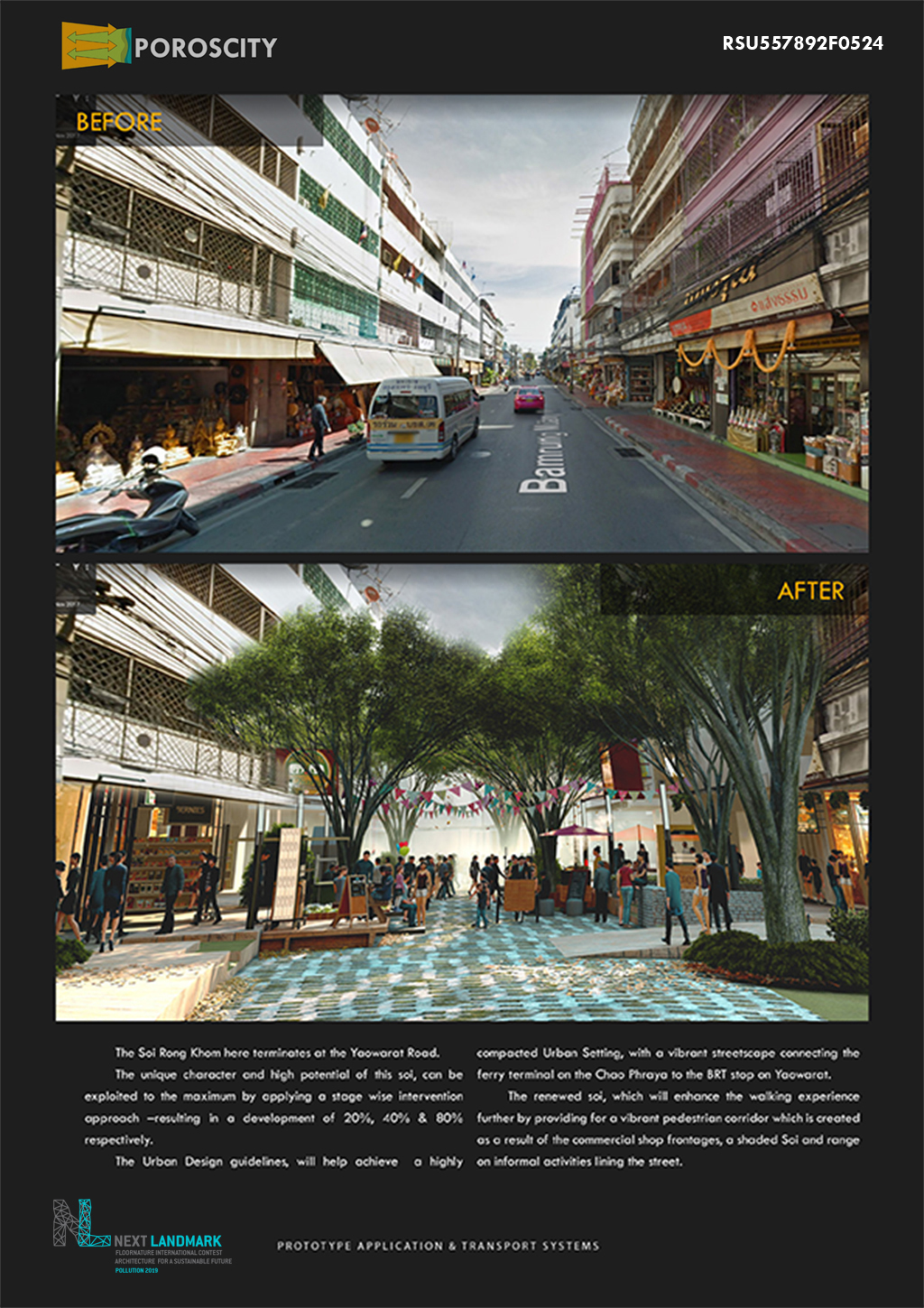
Name / Surname: Abhishek Rahate
Country:
Company: twenty eight architect
Project Description:
‘Poroscity’ is a place where people, their activities, and their natural environment are meshed seamlessly to the urban fabric of the city. This is our vision for Bangkok amidst its urban development. Presently Bangkok remains in the forefront of Thailand to bring the country to the next level of financial and economic leadership in Asia and rest of the world. However, its relentless effort to achieve its goal is faced with a lot of difficulties and environmental issues.
With its population hitting the 10M mark, people in Bangkok are expected to increase at an even rapid pace - while inefficient public transport system, and increased dependency on cars will only create bigger challenges in moving towards an economically sustainable city.
Bangkok as a poroscity will be a model for reduced dependency on private mobility, thereby safeguarding cleaner air, better roads, free streets. Increased soil permeability, unclogged canals and a strong surface drainage system will help absorb rain water better, thereby reducing the risk of floods. Altogether, this will provide a healthy and safe environment for the residents of Bangkok, an active area for economic growth, and a mitigating measure to improve its build environment.
These strategies are employed and designed to improve the Social, Economic and Ecological aspects of Bangkok and make it a Truly Resilient and Sustainable Urbanized City for everyone.This Resilience Strategies outline priorities which is a collection of small scale responses to create large impact on the most important issues. These actions are a clarion call to the citizens of Bangkok to get involved in their implementation.
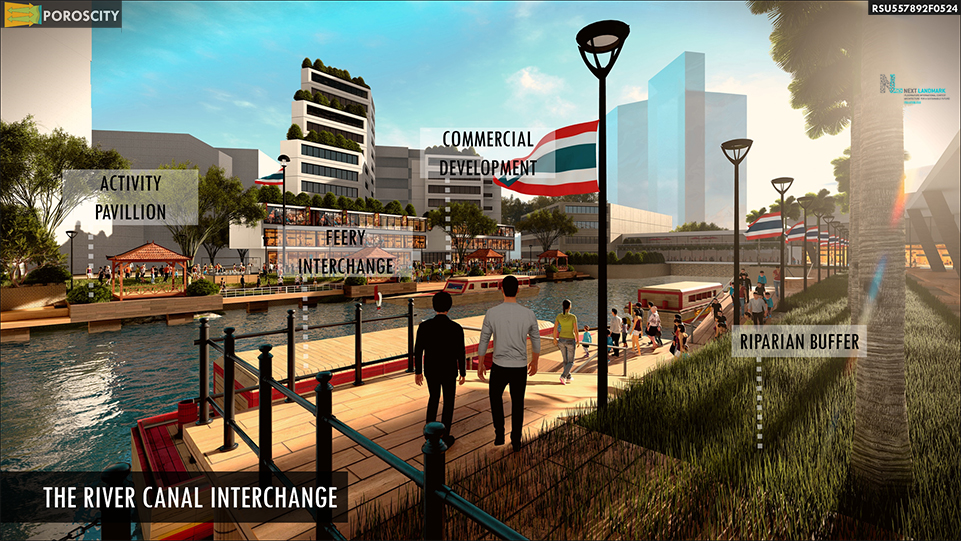
Name / Surname: Abhishek Rahate
Country:
Company: twenty eight architect
Project Description:
‘Poroscity’ is a place where people, their activities, and their natural environment are meshed seamlessly to the urban fabric of the city. This is our vision for Bangkok amidst its urban development. Presently Bangkok remains in the forefront of Thailand to bring the country to the next level of financial and economic leadership in Asia and rest of the world. However, its relentless effort to achieve its goal is faced with a lot of difficulties and environmental issues.
With its population hitting the 10M mark, people in Bangkok are expected to increase at an even rapid pace - while inefficient public transport system, and increased dependency on cars will only create bigger challenges in moving towards an economically sustainable city.
Bangkok as a poroscity will be a model for reduced dependency on private mobility, thereby safeguarding cleaner air, better roads, free streets. Increased soil permeability, unclogged canals and a strong surface drainage system will help absorb rain water better, thereby reducing the risk of floods. Altogether, this will provide a healthy and safe environment for the residents of Bangkok, an active area for economic growth, and a mitigating measure to improve its build environment.
These strategies are employed and designed to improve the Social, Economic and Ecological aspects of Bangkok and make it a Truly Resilient and Sustainable Urbanized City for everyone.This Resilience Strategies outline priorities which is a collection of small scale responses to create large impact on the most important issues. These actions are a clarion call to the citizens of Bangkok to get involved in their implementation.
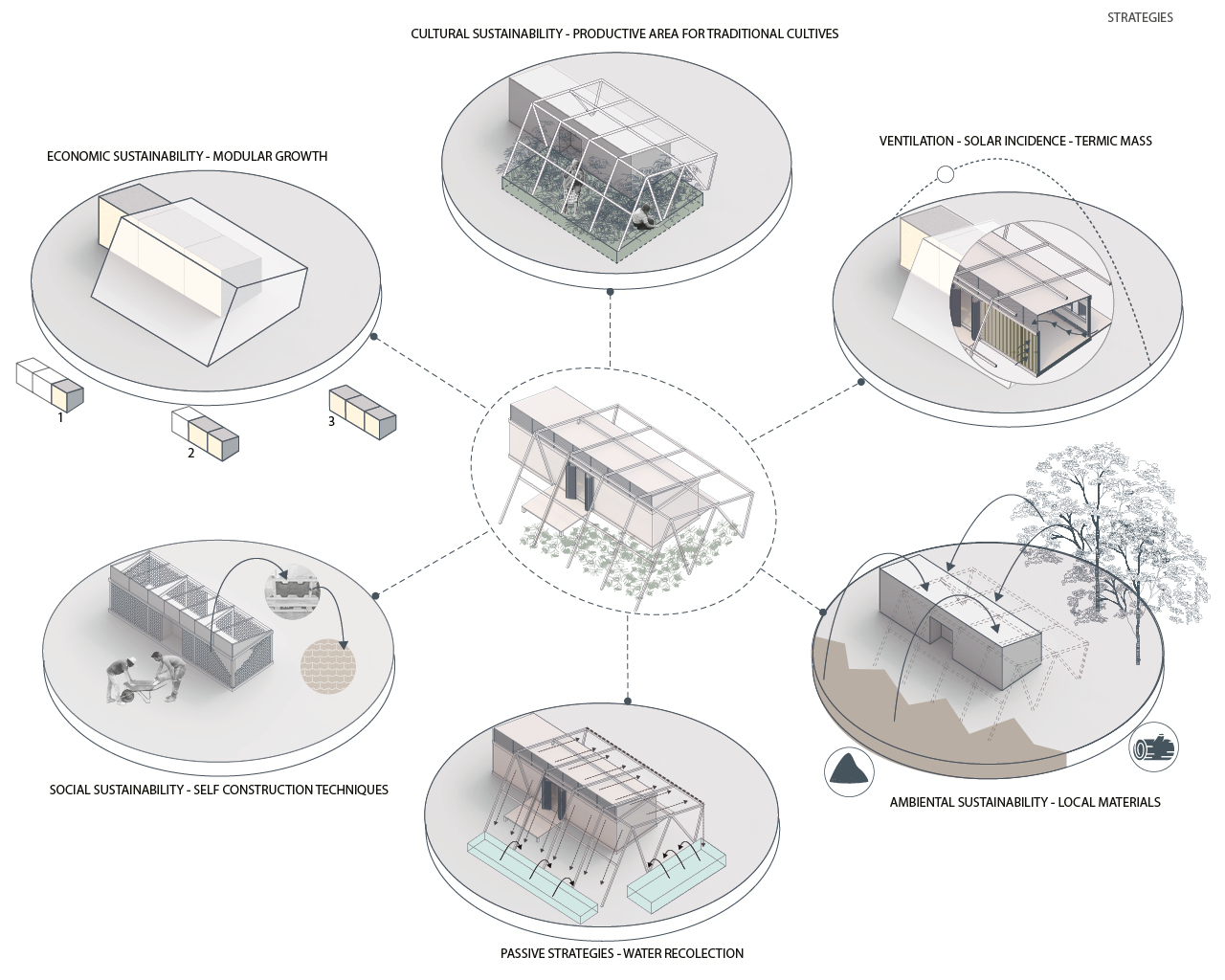
Name / Surname: Alejandra Osorio
Country:
Company:
Project Description:
The project presented below is developed as a conclusion within the framework of a research at a countryside district located on the outskirts of Medellin city, in response to urban expansion and degradation of rural environments and their inhabitants.
Colombia is turning its eyes toward the countryside, after being a divided country for 50 years by the armed conflict, where the vast majority of victims of rural origin have had to migrate to major cities, such as Medellin, seeking for opportunities.
Medellin, located in a valley, with rural districts on the top of its mountains, one of them Santa Elena, with a rural population, providing ecosystem services to the city, however, the urban expansion is threatening the balance between urban and rural environment.
The project aims to preserve the rural character that have always represented the district, through a habitational unit which integrates environment, society, economy and culture. The strategies are:
1. Use of local materials, with a reduced ecological footprint, the raw earth is a resource widely available and the wood is cultivated extensively in the surroundings for productive purposes. Additionally, the passive manipulation of rainwater and bioclimatic strategies.
2.The implementation of techniques that allows self-construction aims to involve the society, in this case a compacted raw earth block is proposed, being easily assemble and manipulated.
3.The modular growth permits the staged construction, depending on economic resources available.
4. The agricultural and flower cultivation tradition is emphasized by a given productive area adjacent to housing activities which ensures a livelihood.
Thus is intended to enhance the countryside granting a balance between urban and rural environment.
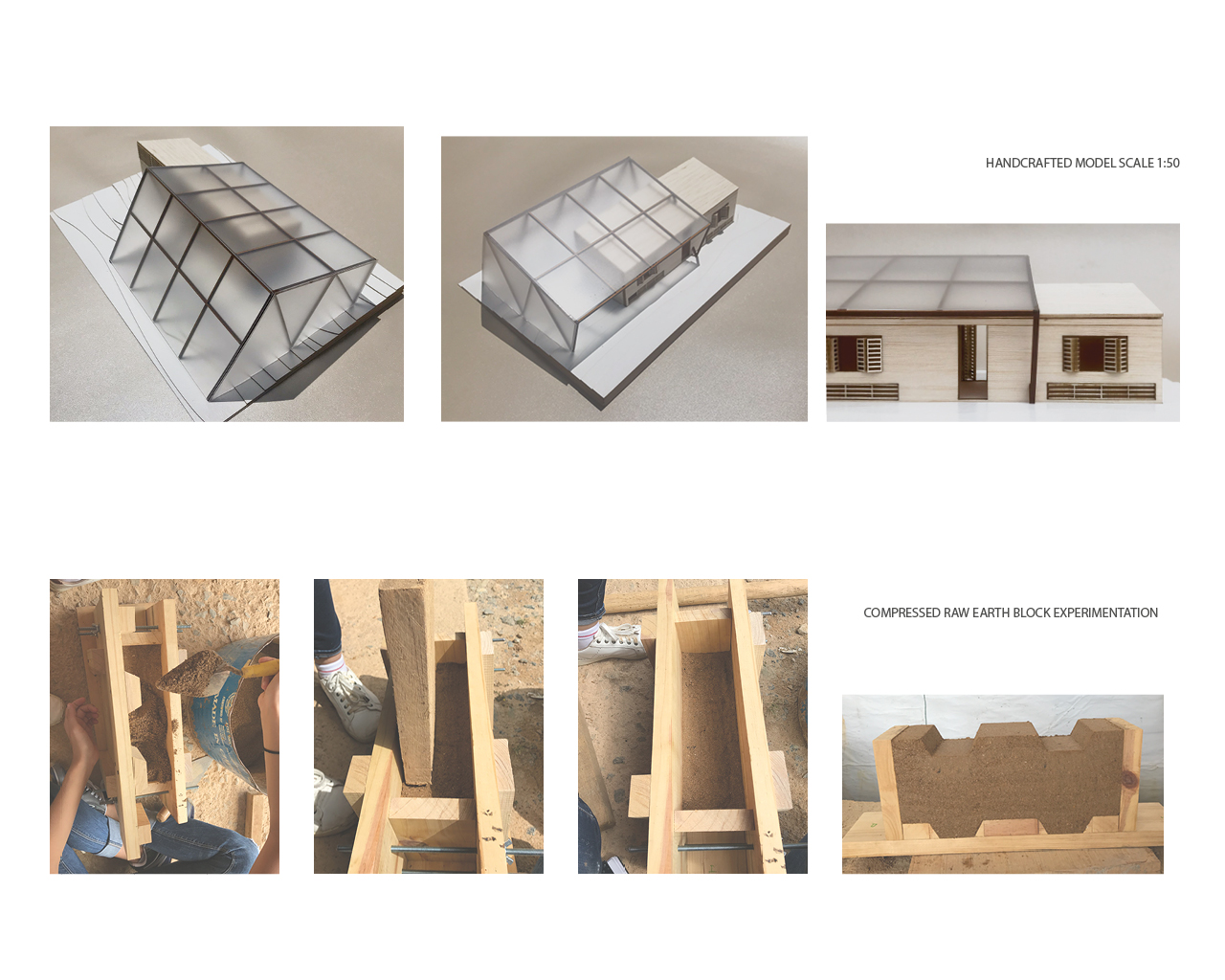
Name / Surname: Alejandra Osorio
Country:
Company:
Project Description:
The project presented below is developed as a conclusion within the framework of a research at a countryside district located on the outskirts of Medellin city, in response to urban expansion and degradation of rural environments and their inhabitants.
Colombia is turning its eyes toward the countryside, after being a divided country for 50 years by the armed conflict, where the vast majority of victims of rural origin have had to migrate to major cities, such as Medellin, seeking for opportunities.
Medellin, located in a valley, with rural districts on the top of its mountains, one of them Santa Elena, with a rural population, providing ecosystem services to the city, however, the urban expansion is threatening the balance between urban and rural environment.
The project aims to preserve the rural character that have always represented the district, through a habitational unit which integrates environment, society, economy and culture. The strategies are:
1. Use of local materials, with a reduced ecological footprint, the raw earth is a resource widely available and the wood is cultivated extensively in the surroundings for productive purposes. Additionally, the passive manipulation of rainwater and bioclimatic strategies.
2.The implementation of techniques that allows self-construction aims to involve the society, in this case a compacted raw earth block is proposed, being easily assemble and manipulated.
3.The modular growth permits the staged construction, depending on economic resources available.
4. The agricultural and flower cultivation tradition is emphasized by a given productive area adjacent to housing activities which ensures a livelihood.
Thus is intended to enhance the countryside granting a balance between urban and rural environment.
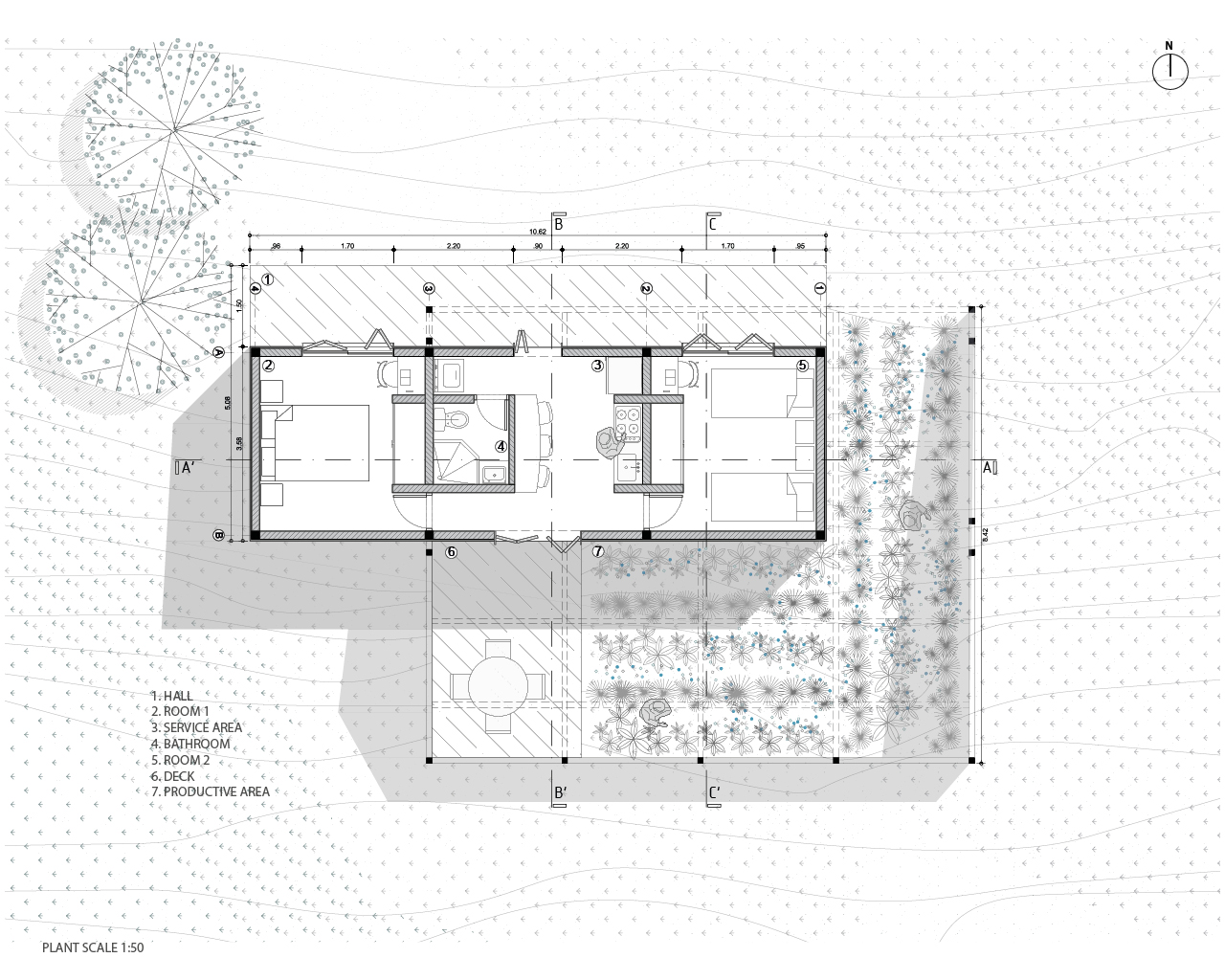
Name / Surname: Alejandra Osorio
Country:
Company:
Project Description:
The project presented below is developed as a conclusion within the framework of a research at a countryside district located on the outskirts of Medellin city, in response to urban expansion and degradation of rural environments and their inhabitants.
Colombia is turning its eyes toward the countryside, after being a divided country for 50 years by the armed conflict, where the vast majority of victims of rural origin have had to migrate to major cities, such as Medellin, seeking for opportunities.
Medellin, located in a valley, with rural districts on the top of its mountains, one of them Santa Elena, with a rural population, providing ecosystem services to the city, however, the urban expansion is threatening the balance between urban and rural environment.
The project aims to preserve the rural character that have always represented the district, through a habitational unit which integrates environment, society, economy and culture. The strategies are:
1. Use of local materials, with a reduced ecological footprint, the raw earth is a resource widely available and the wood is cultivated extensively in the surroundings for productive purposes. Additionally, the passive manipulation of rainwater and bioclimatic strategies.
2.The implementation of techniques that allows self-construction aims to involve the society, in this case a compacted raw earth block is proposed, being easily assemble and manipulated.
3.The modular growth permits the staged construction, depending on economic resources available.
4. The agricultural and flower cultivation tradition is emphasized by a given productive area adjacent to housing activities which ensures a livelihood.
Thus is intended to enhance the countryside granting a balance between urban and rural environment.
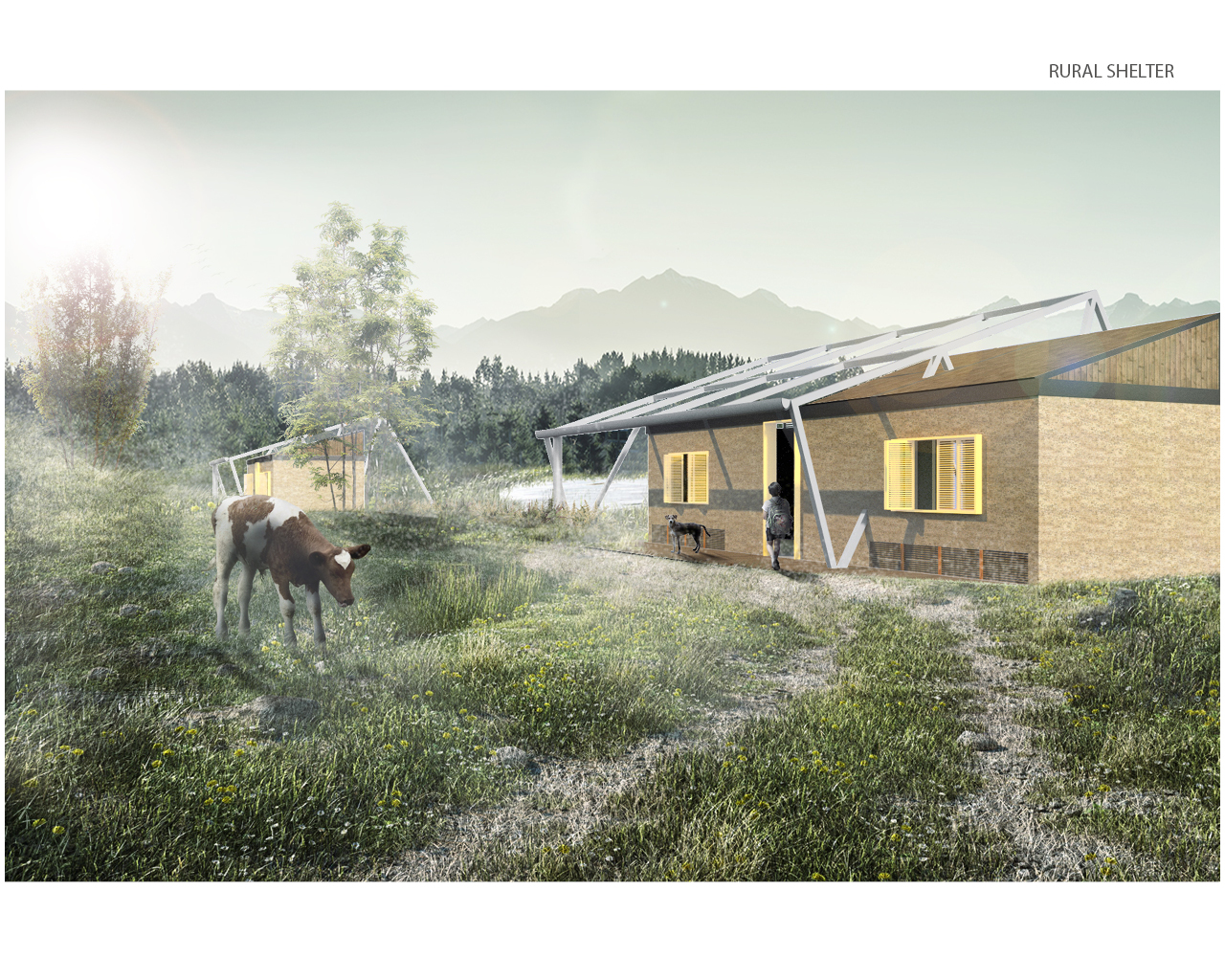
Name / Surname: Alejandra Osorio
Country:
Company:
Project Description:
The project presented below is developed as a conclusion within the framework of a research at a countryside district located on the outskirts of Medellin city, in response to urban expansion and degradation of rural environments and their inhabitants.
Colombia is turning its eyes toward the countryside, after being a divided country for 50 years by the armed conflict, where the vast majority of victims of rural origin have had to migrate to major cities, such as Medellin, seeking for opportunities.
Medellin, located in a valley, with rural districts on the top of its mountains, one of them Santa Elena, with a rural population, providing ecosystem services to the city, however, the urban expansion is threatening the balance between urban and rural environment.
The project aims to preserve the rural character that have always represented the district, through a habitational unit which integrates environment, society, economy and culture. The strategies are:
1. Use of local materials, with a reduced ecological footprint, the raw earth is a resource widely available and the wood is cultivated extensively in the surroundings for productive purposes. Additionally, the passive manipulation of rainwater and bioclimatic strategies.
2.The implementation of techniques that allows self-construction aims to involve the society, in this case a compacted raw earth block is proposed, being easily assemble and manipulated.
3.The modular growth permits the staged construction, depending on economic resources available.
4. The agricultural and flower cultivation tradition is emphasized by a given productive area adjacent to housing activities which ensures a livelihood.
Thus is intended to enhance the countryside granting a balance between urban and rural environment.
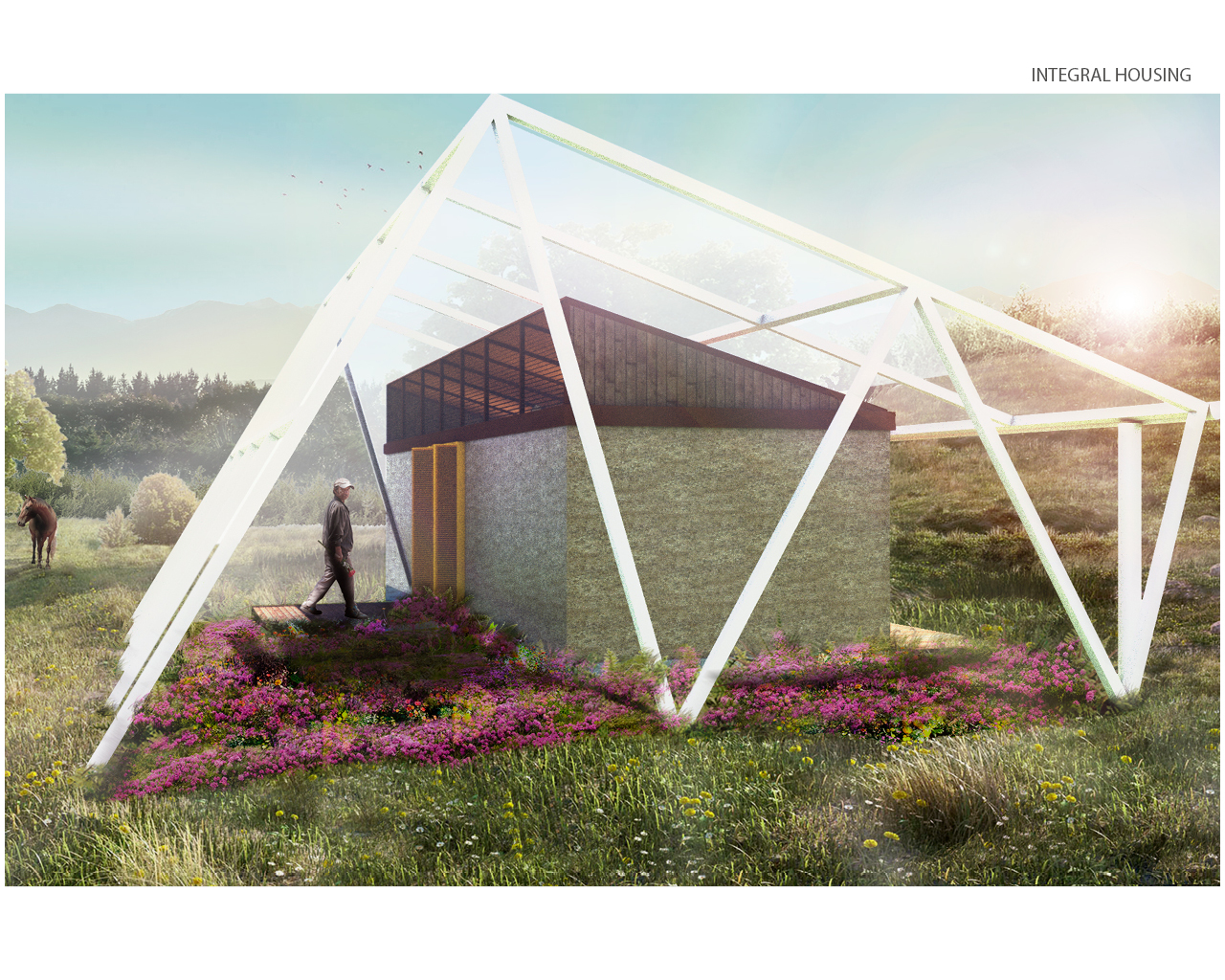
Name / Surname: Alejandra Osorio
Country:
Company:
Project Description:
The project presented below is developed as a conclusion within the framework of a research at a countryside district located on the outskirts of Medellin city, in response to urban expansion and degradation of rural environments and their inhabitants.
Colombia is turning its eyes toward the countryside, after being a divided country for 50 years by the armed conflict, where the vast majority of victims of rural origin have had to migrate to major cities, such as Medellin, seeking for opportunities.
Medellin, located in a valley, with rural districts on the top of its mountains, one of them Santa Elena, with a rural population, providing ecosystem services to the city, however, the urban expansion is threatening the balance between urban and rural environment.
The project aims to preserve the rural character that have always represented the district, through a habitational unit which integrates environment, society, economy and culture. The strategies are:
1. Use of local materials, with a reduced ecological footprint, the raw earth is a resource widely available and the wood is cultivated extensively in the surroundings for productive purposes. Additionally, the passive manipulation of rainwater and bioclimatic strategies.
2.The implementation of techniques that allows self-construction aims to involve the society, in this case a compacted raw earth block is proposed, being easily assemble and manipulated.
3.The modular growth permits the staged construction, depending on economic resources available.
4. The agricultural and flower cultivation tradition is emphasized by a given productive area adjacent to housing activities which ensures a livelihood.
Thus is intended to enhance the countryside granting a balance between urban and rural environment.
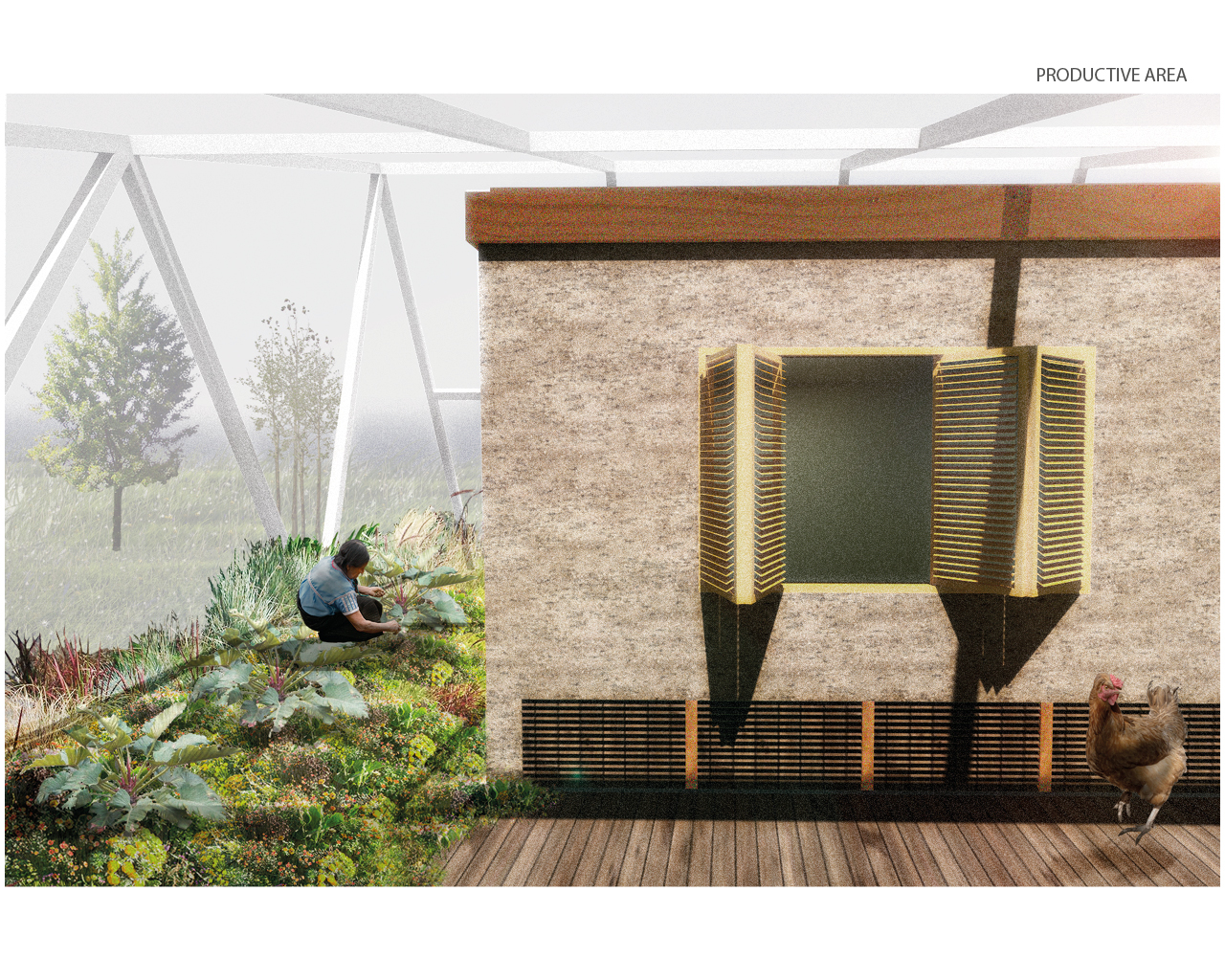
Name / Surname: Alejandra Osorio
Country:
Company:
Project Description:
The project presented below is developed as a conclusion within the framework of a research at a countryside district located on the outskirts of Medellin city, in response to urban expansion and degradation of rural environments and their inhabitants.
Colombia is turning its eyes toward the countryside, after being a divided country for 50 years by the armed conflict, where the vast majority of victims of rural origin have had to migrate to major cities, such as Medellin, seeking for opportunities.
Medellin, located in a valley, with rural districts on the top of its mountains, one of them Santa Elena, with a rural population, providing ecosystem services to the city, however, the urban expansion is threatening the balance between urban and rural environment.
The project aims to preserve the rural character that have always represented the district, through a habitational unit which integrates environment, society, economy and culture. The strategies are:
1. Use of local materials, with a reduced ecological footprint, the raw earth is a resource widely available and the wood is cultivated extensively in the surroundings for productive purposes. Additionally, the passive manipulation of rainwater and bioclimatic strategies.
2.The implementation of techniques that allows self-construction aims to involve the society, in this case a compacted raw earth block is proposed, being easily assemble and manipulated.
3.The modular growth permits the staged construction, depending on economic resources available.
4. The agricultural and flower cultivation tradition is emphasized by a given productive area adjacent to housing activities which ensures a livelihood.
Thus is intended to enhance the countryside granting a balance between urban and rural environment.

Name / Surname: Alejandra Osorio
Country:
Company:
Project Description:
The project presented below is developed as a conclusion within the framework of a research at a countryside district located on the outskirts of Medellin city, in response to urban expansion and degradation of rural environments and their inhabitants.
Colombia is turning its eyes toward the countryside, after being a divided country for 50 years by the armed conflict, where the vast majority of victims of rural origin have had to migrate to major cities, such as Medellin, seeking for opportunities.
Medellin, located in a valley, with rural districts on the top of its mountains, one of them Santa Elena, with a rural population, providing ecosystem services to the city, however, the urban expansion is threatening the balance between urban and rural environment.
The project aims to preserve the rural character that have always represented the district, through a habitational unit which integrates environment, society, economy and culture. The strategies are:
1. Use of local materials, with a reduced ecological footprint, the raw earth is a resource widely available and the wood is cultivated extensively in the surroundings for productive purposes. Additionally, the passive manipulation of rainwater and bioclimatic strategies.
2.The implementation of techniques that allows self-construction aims to involve the society, in this case a compacted raw earth block is proposed, being easily assemble and manipulated.
3.The modular growth permits the staged construction, depending on economic resources available.
4. The agricultural and flower cultivation tradition is emphasized by a given productive area adjacent to housing activities which ensures a livelihood.
Thus is intended to enhance the countryside granting a balance between urban and rural environment.
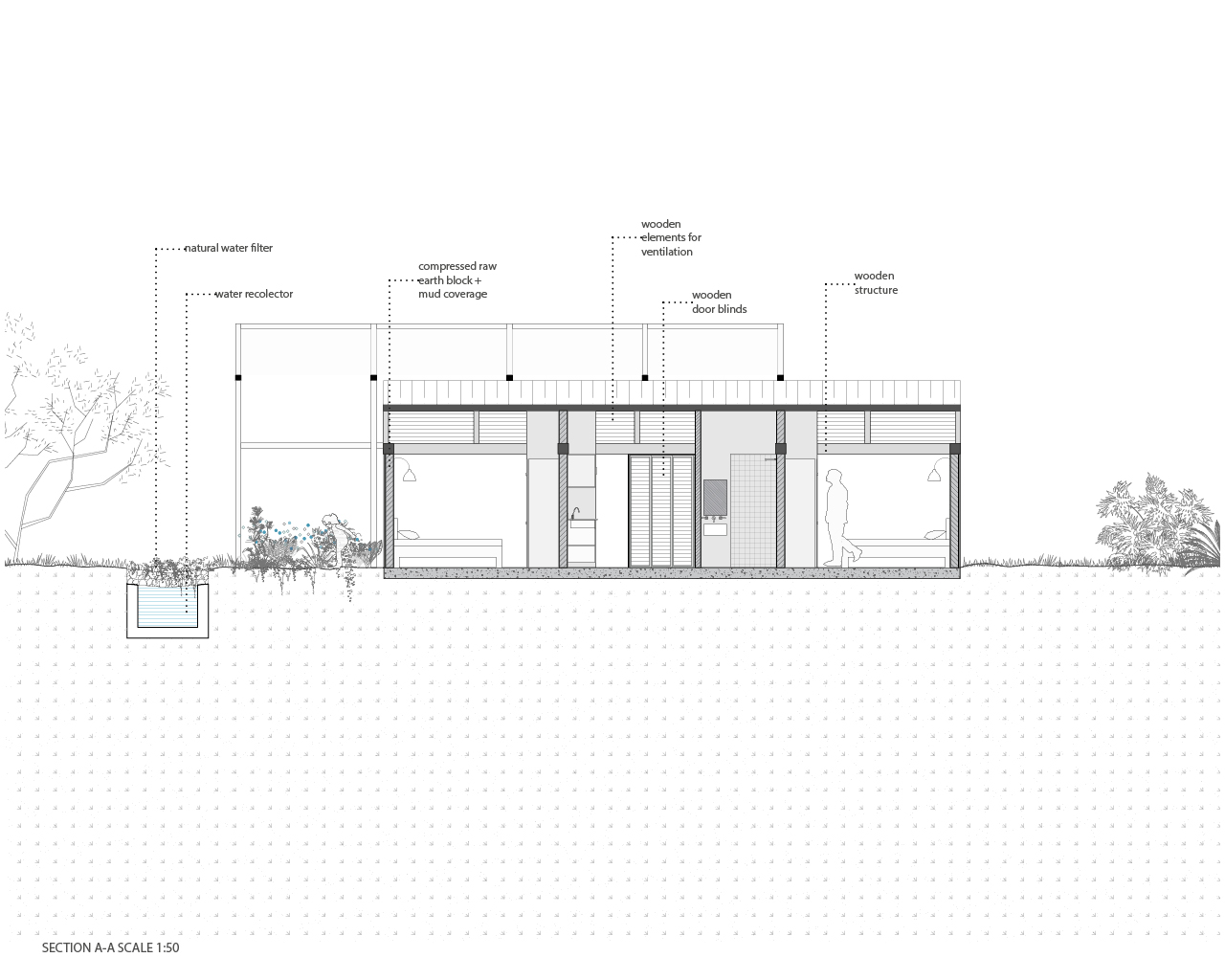
Name / Surname: Alejandra Osorio
Country:
Company:
Project Description:
The project presented below is developed as a conclusion within the framework of a research at a countryside district located on the outskirts of Medellin city, in response to urban expansion and degradation of rural environments and their inhabitants.
Colombia is turning its eyes toward the countryside, after being a divided country for 50 years by the armed conflict, where the vast majority of victims of rural origin have had to migrate to major cities, such as Medellin, seeking for opportunities.
Medellin, located in a valley, with rural districts on the top of its mountains, one of them Santa Elena, with a rural population, providing ecosystem services to the city, however, the urban expansion is threatening the balance between urban and rural environment.
The project aims to preserve the rural character that have always represented the district, through a habitational unit which integrates environment, society, economy and culture. The strategies are:
1. Use of local materials, with a reduced ecological footprint, the raw earth is a resource widely available and the wood is cultivated extensively in the surroundings for productive purposes. Additionally, the passive manipulation of rainwater and bioclimatic strategies.
2.The implementation of techniques that allows self-construction aims to involve the society, in this case a compacted raw earth block is proposed, being easily assemble and manipulated.
3.The modular growth permits the staged construction, depending on economic resources available.
4. The agricultural and flower cultivation tradition is emphasized by a given productive area adjacent to housing activities which ensures a livelihood.
Thus is intended to enhance the countryside granting a balance between urban and rural environment.
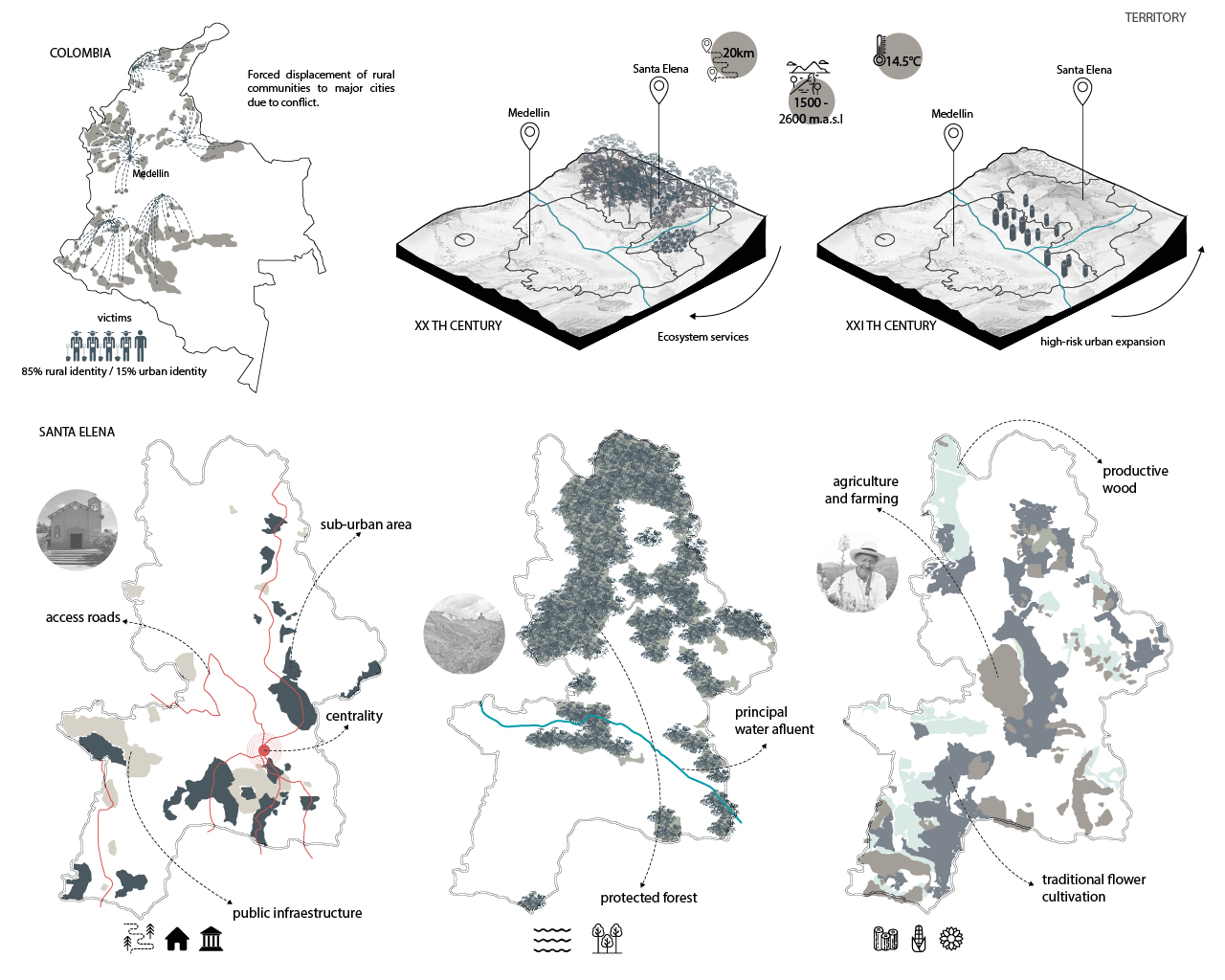
Name / Surname: Alejandra Osorio
Country:
Company:
Project Description:
The project presented below is developed as a conclusion within the framework of a research at a countryside district located on the outskirts of Medellin city, in response to urban expansion and degradation of rural environments and their inhabitants.
Colombia is turning its eyes toward the countryside, after being a divided country for 50 years by the armed conflict, where the vast majority of victims of rural origin have had to migrate to major cities, such as Medellin, seeking for opportunities.
Medellin, located in a valley, with rural districts on the top of its mountains, one of them Santa Elena, with a rural population, providing ecosystem services to the city, however, the urban expansion is threatening the balance between urban and rural environment.
The project aims to preserve the rural character that have always represented the district, through a habitational unit which integrates environment, society, economy and culture. The strategies are:
1. Use of local materials, with a reduced ecological footprint, the raw earth is a resource widely available and the wood is cultivated extensively in the surroundings for productive purposes. Additionally, the passive manipulation of rainwater and bioclimatic strategies.
2.The implementation of techniques that allows self-construction aims to involve the society, in this case a compacted raw earth block is proposed, being easily assemble and manipulated.
3.The modular growth permits the staged construction, depending on economic resources available.
4. The agricultural and flower cultivation tradition is emphasized by a given productive area adjacent to housing activities which ensures a livelihood.
Thus is intended to enhance the countryside granting a balance between urban and rural environment.
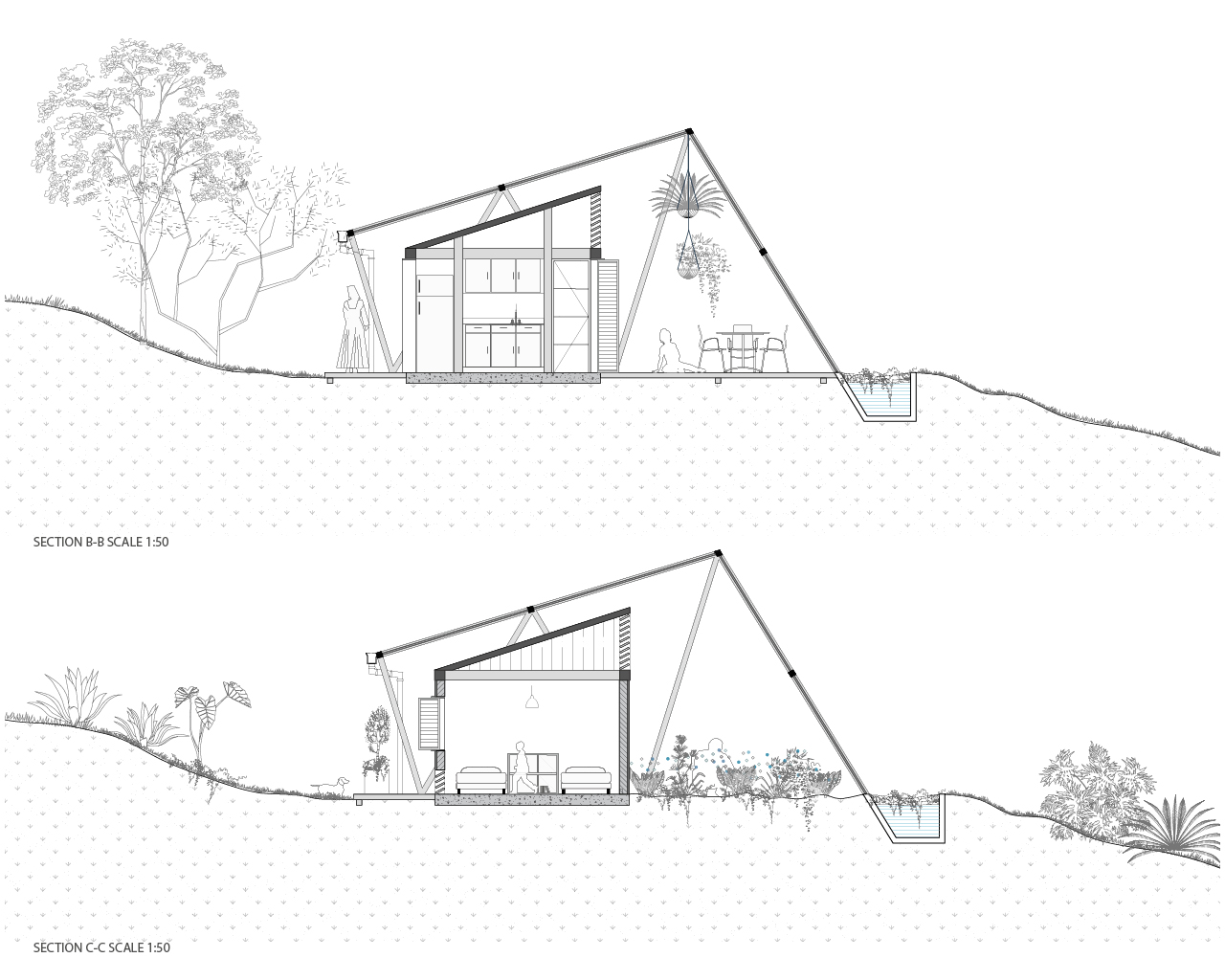
Name / Surname: Alejandra Osorio
Country:
Company:
Project Description:
The project presented below is developed as a conclusion within the framework of a research at a countryside district located on the outskirts of Medellin city, in response to urban expansion and degradation of rural environments and their inhabitants.
Colombia is turning its eyes toward the countryside, after being a divided country for 50 years by the armed conflict, where the vast majority of victims of rural origin have had to migrate to major cities, such as Medellin, seeking for opportunities.
Medellin, located in a valley, with rural districts on the top of its mountains, one of them Santa Elena, with a rural population, providing ecosystem services to the city, however, the urban expansion is threatening the balance between urban and rural environment.
The project aims to preserve the rural character that have always represented the district, through a habitational unit which integrates environment, society, economy and culture. The strategies are:
1. Use of local materials, with a reduced ecological footprint, the raw earth is a resource widely available and the wood is cultivated extensively in the surroundings for productive purposes. Additionally, the passive manipulation of rainwater and bioclimatic strategies.
2.The implementation of techniques that allows self-construction aims to involve the society, in this case a compacted raw earth block is proposed, being easily assemble and manipulated.
3.The modular growth permits the staged construction, depending on economic resources available.
4. The agricultural and flower cultivation tradition is emphasized by a given productive area adjacent to housing activities which ensures a livelihood.
Thus is intended to enhance the countryside granting a balance between urban and rural environment.
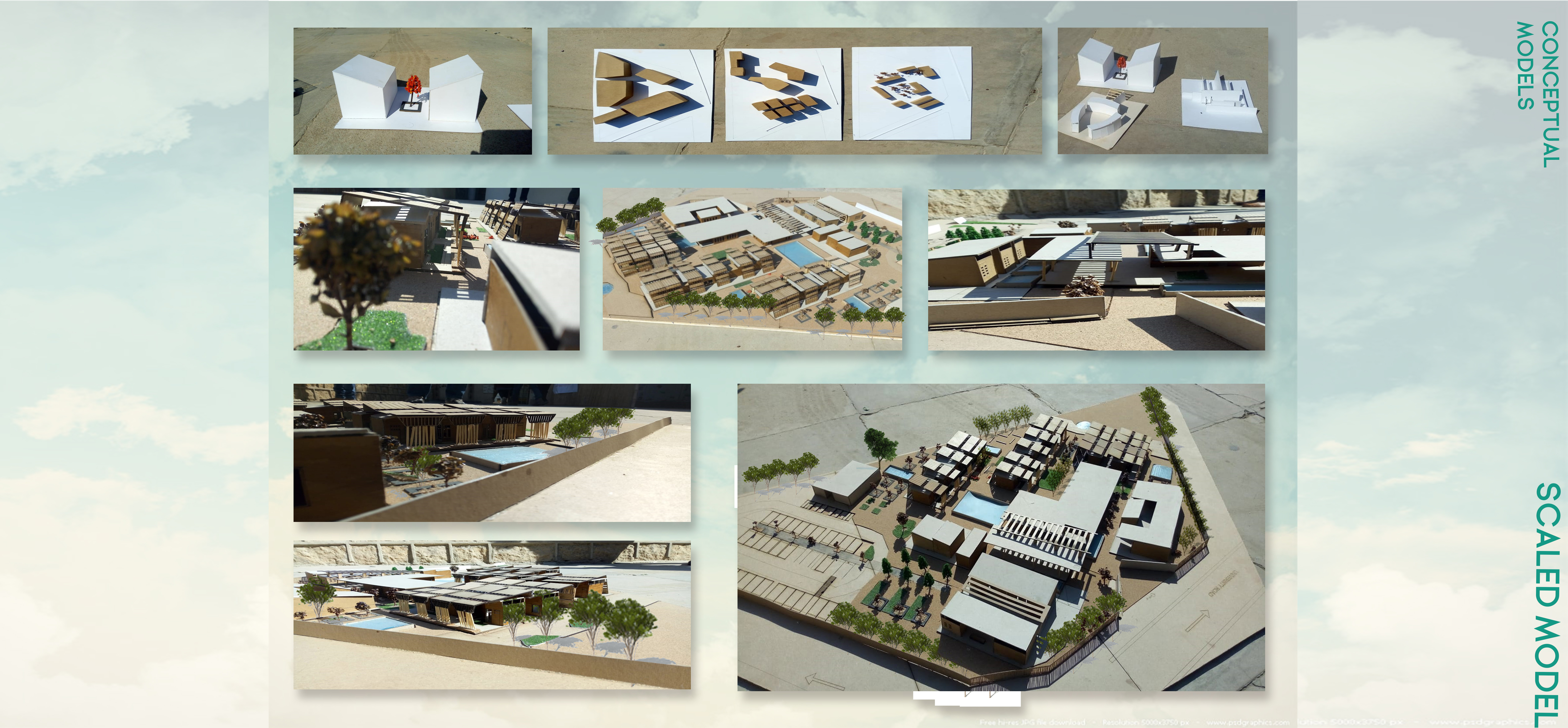
Name / Surname: Amna Jafri
Country:
Team:
Company: Karachi University
Project Description:
Significance of architectural spaces interweaves with natural
elements on well being of human beings. How a living and breathable
indoor space connected with outdoor natural environment compliments
each other and can form Healing Sanctuary for the inhabitants that can help to
escalate the recovery process of Tuberculosis.
Tuberculosis is the most primitive and deadly disease in world and Pakistan comes 5th in ranking for deaths occurring due to Tuberculosis.
5,10,000 people dies in Pakistan annually due to poor living and working condition of the patients and zero awareness about Tuberculosis.
The targeted audience belongs to lower middle class families mostly and usually lives and work in congested areas, multiple families in small houses and enclosed factories respectively.Tuberculosis is a bacterial disease which easily transmit from one person to another via cough, sneeze, laughing etc. The surrounding around a patient becomes contaminated if its an enclosed or dark place with poor ventilation and bacteria accumulate into a space making a healthy person exposed to catch this bacteria.
I have proposed a healing sanctuary for Tuberculosis patient in cosmopolitan city of Pakistan, Karachi, that provide patients a refuge from the contaminated environment outside and a therapeutic space for families and doctors too.
Inspired by Biophilic Elements like outdoor courtyards, water bodies, wind catchers, indigenoys material (rammed earth), zen and therapeutic gardens imprinting positive psychological and physiological impact that alleviate stress levels of doctors, staff, patients and their families.
Positive and healthy interaction can rejuvenate the society that contributes in beating this deadly disease from Pakistan.
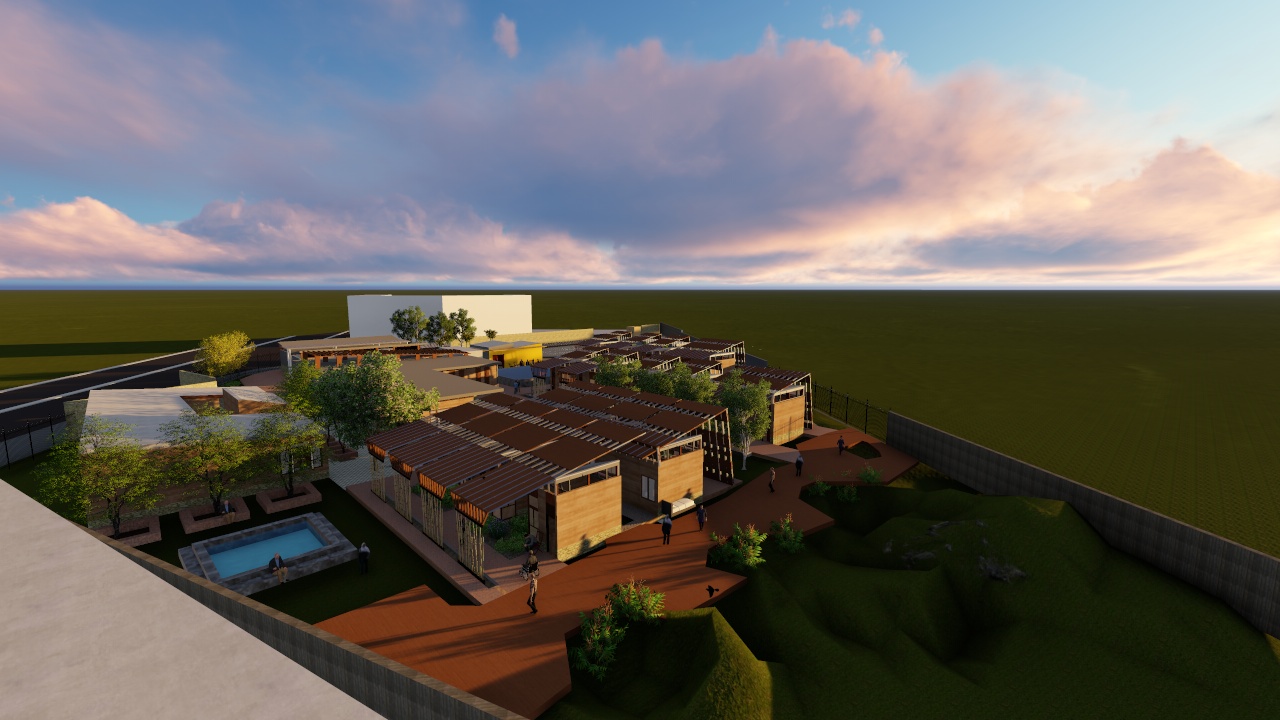
Name / Surname: Amna Jafri
Country:
Team:
Company: Karachi University
Project Description:
Significance of architectural spaces interweaves with natural
elements on well being of human beings. How a living and breathable
indoor space connected with outdoor natural environment compliments
each other and can form Healing Sanctuary for the inhabitants that can help to
escalate the recovery process of Tuberculosis.
Tuberculosis is the most primitive and deadly disease in world and Pakistan comes 5th in ranking for deaths occurring due to Tuberculosis.
5,10,000 people dies in Pakistan annually due to poor living and working condition of the patients and zero awareness about Tuberculosis.
The targeted audience belongs to lower middle class families mostly and usually lives and work in congested areas, multiple families in small houses and enclosed factories respectively.Tuberculosis is a bacterial disease which easily transmit from one person to another via cough, sneeze, laughing etc. The surrounding around a patient becomes contaminated if its an enclosed or dark place with poor ventilation and bacteria accumulate into a space making a healthy person exposed to catch this bacteria.
I have proposed a healing sanctuary for Tuberculosis patient in cosmopolitan city of Pakistan, Karachi, that provide patients a refuge from the contaminated environment outside and a therapeutic space for families and doctors too.
Inspired by Biophilic Elements like outdoor courtyards, water bodies, wind catchers, indigenoys material (rammed earth), zen and therapeutic gardens imprinting positive psychological and physiological impact that alleviate stress levels of doctors, staff, patients and their families.
Positive and healthy interaction can rejuvenate the society that contributes in beating this deadly disease from Pakistan.
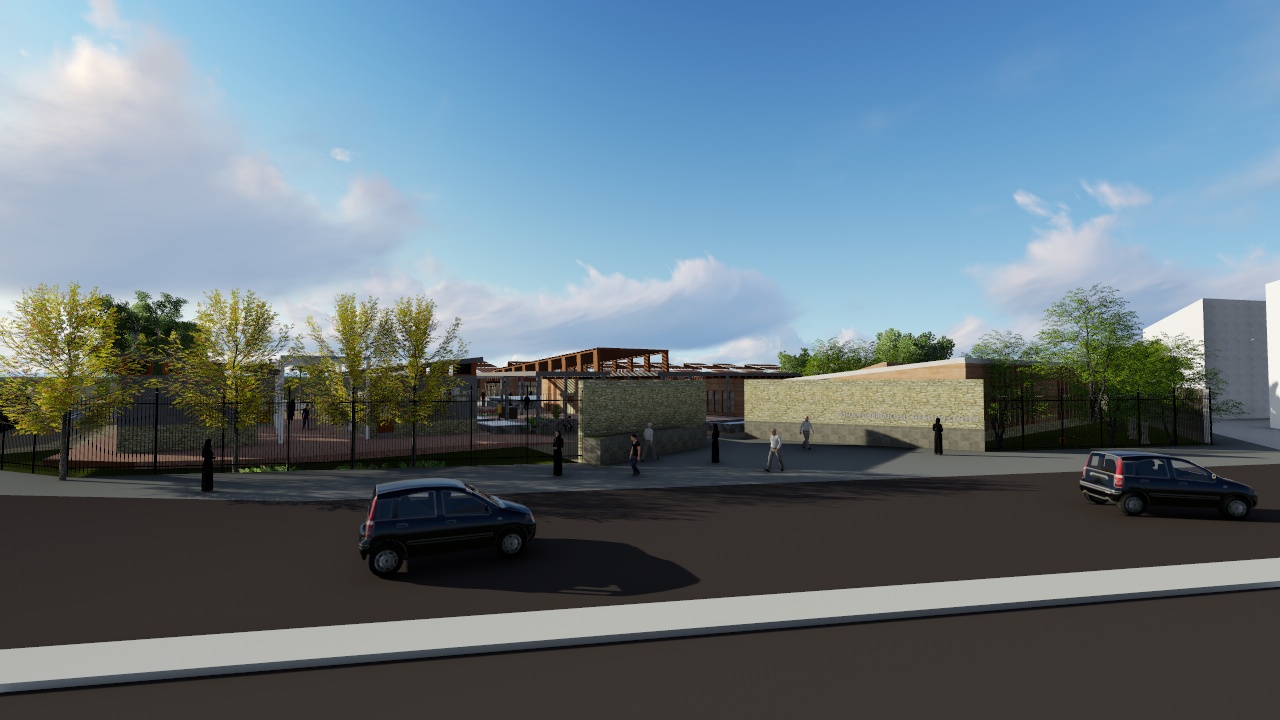
Name / Surname: Amna Jafri
Country:
Team:
Company: Karachi University
Project Description:
Significance of architectural spaces interweaves with natural
elements on well being of human beings. How a living and breathable
indoor space connected with outdoor natural environment compliments
each other and can form Healing Sanctuary for the inhabitants that can help to
escalate the recovery process of Tuberculosis.
Tuberculosis is the most primitive and deadly disease in world and Pakistan comes 5th in ranking for deaths occurring due to Tuberculosis.
5,10,000 people dies in Pakistan annually due to poor living and working condition of the patients and zero awareness about Tuberculosis.
The targeted audience belongs to lower middle class families mostly and usually lives and work in congested areas, multiple families in small houses and enclosed factories respectively.Tuberculosis is a bacterial disease which easily transmit from one person to another via cough, sneeze, laughing etc. The surrounding around a patient becomes contaminated if its an enclosed or dark place with poor ventilation and bacteria accumulate into a space making a healthy person exposed to catch this bacteria.
I have proposed a healing sanctuary for Tuberculosis patient in cosmopolitan city of Pakistan, Karachi, that provide patients a refuge from the contaminated environment outside and a therapeutic space for families and doctors too.
Inspired by Biophilic Elements like outdoor courtyards, water bodies, wind catchers, indigenoys material (rammed earth), zen and therapeutic gardens imprinting positive psychological and physiological impact that alleviate stress levels of doctors, staff, patients and their families.
Positive and healthy interaction can rejuvenate the society that contributes in beating this deadly disease from Pakistan.

Name / Surname: Amna Jafri
Country:
Team:
Company: Karachi University
Project Description:
Significance of architectural spaces interweaves with natural
elements on well being of human beings. How a living and breathable
indoor space connected with outdoor natural environment compliments
each other and can form Healing Sanctuary for the inhabitants that can help to
escalate the recovery process of Tuberculosis.
Tuberculosis is the most primitive and deadly disease in world and Pakistan comes 5th in ranking for deaths occurring due to Tuberculosis.
5,10,000 people dies in Pakistan annually due to poor living and working condition of the patients and zero awareness about Tuberculosis.
The targeted audience belongs to lower middle class families mostly and usually lives and work in congested areas, multiple families in small houses and enclosed factories respectively.Tuberculosis is a bacterial disease which easily transmit from one person to another via cough, sneeze, laughing etc. The surrounding around a patient becomes contaminated if its an enclosed or dark place with poor ventilation and bacteria accumulate into a space making a healthy person exposed to catch this bacteria.
I have proposed a healing sanctuary for Tuberculosis patient in cosmopolitan city of Pakistan, Karachi, that provide patients a refuge from the contaminated environment outside and a therapeutic space for families and doctors too.
Inspired by Biophilic Elements like outdoor courtyards, water bodies, wind catchers, indigenoys material (rammed earth), zen and therapeutic gardens imprinting positive psychological and physiological impact that alleviate stress levels of doctors, staff, patients and their families.
Positive and healthy interaction can rejuvenate the society that contributes in beating this deadly disease from Pakistan.

Name / Surname: Amna Jafri
Country:
Team:
Company: Karachi University
Project Description:
Significance of architectural spaces interweaves with natural
elements on well being of human beings. How a living and breathable
indoor space connected with outdoor natural environment compliments
each other and can form Healing Sanctuary for the inhabitants that can help to
escalate the recovery process of Tuberculosis.
Tuberculosis is the most primitive and deadly disease in world and Pakistan comes 5th in ranking for deaths occurring due to Tuberculosis.
5,10,000 people dies in Pakistan annually due to poor living and working condition of the patients and zero awareness about Tuberculosis.
The targeted audience belongs to lower middle class families mostly and usually lives and work in congested areas, multiple families in small houses and enclosed factories respectively.Tuberculosis is a bacterial disease which easily transmit from one person to another via cough, sneeze, laughing etc. The surrounding around a patient becomes contaminated if its an enclosed or dark place with poor ventilation and bacteria accumulate into a space making a healthy person exposed to catch this bacteria.
I have proposed a healing sanctuary for Tuberculosis patient in cosmopolitan city of Pakistan, Karachi, that provide patients a refuge from the contaminated environment outside and a therapeutic space for families and doctors too.
Inspired by Biophilic Elements like outdoor courtyards, water bodies, wind catchers, indigenoys material (rammed earth), zen and therapeutic gardens imprinting positive psychological and physiological impact that alleviate stress levels of doctors, staff, patients and their families.
Positive and healthy interaction can rejuvenate the society that contributes in beating this deadly disease from Pakistan.
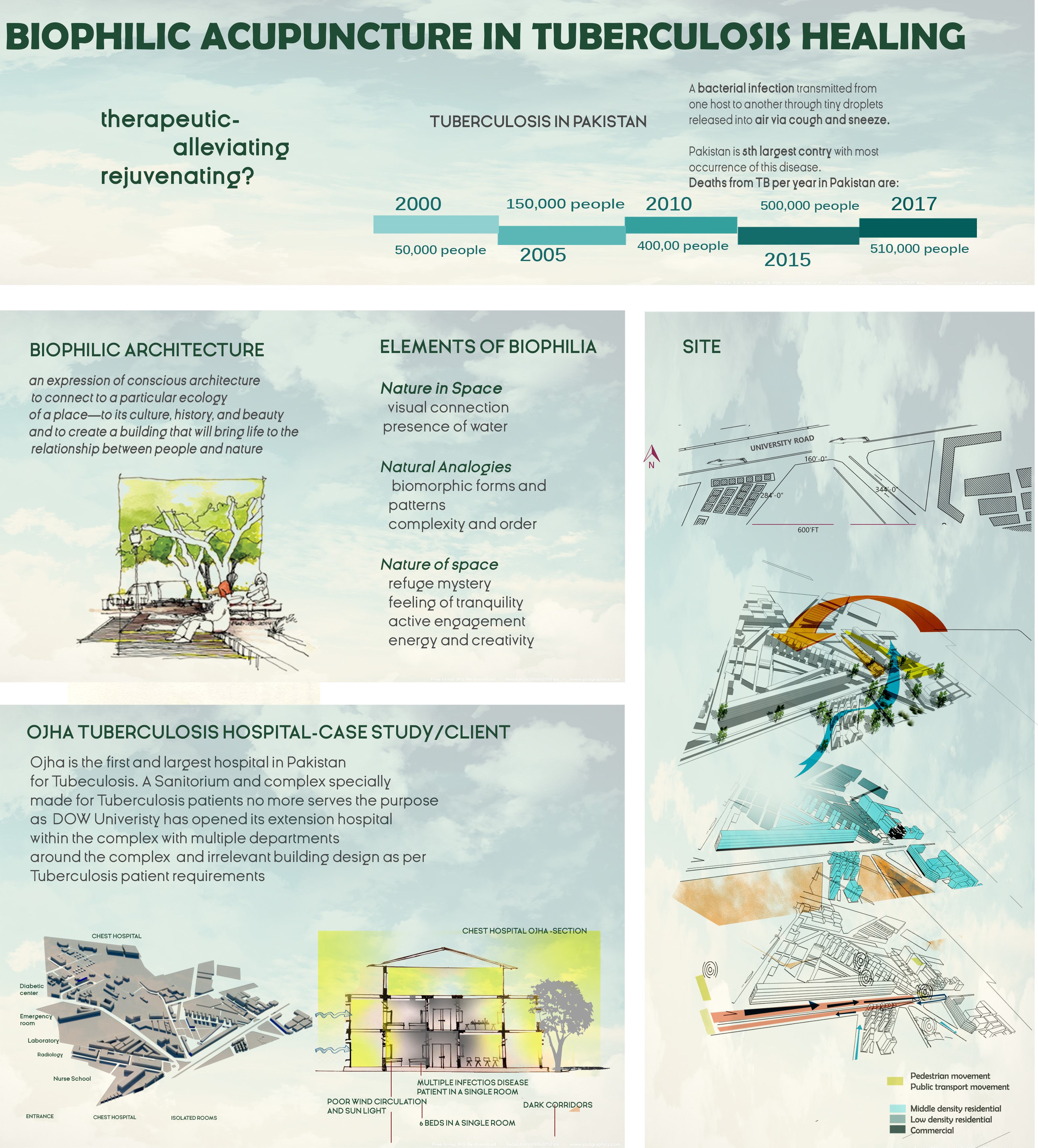
Name / Surname: Amna Jafri
Country:
Team:
Company: Karachi University
Project Description:
Significance of architectural spaces interweaves with natural
elements on well being of human beings. How a living and breathable
indoor space connected with outdoor natural environment compliments
each other and can form Healing Sanctuary for the inhabitants that can help to
escalate the recovery process of Tuberculosis.
Tuberculosis is the most primitive and deadly disease in world and Pakistan comes 5th in ranking for deaths occurring due to Tuberculosis.
5,10,000 people dies in Pakistan annually due to poor living and working condition of the patients and zero awareness about Tuberculosis.
The targeted audience belongs to lower middle class families mostly and usually lives and work in congested areas, multiple families in small houses and enclosed factories respectively.Tuberculosis is a bacterial disease which easily transmit from one person to another via cough, sneeze, laughing etc. The surrounding around a patient becomes contaminated if its an enclosed or dark place with poor ventilation and bacteria accumulate into a space making a healthy person exposed to catch this bacteria.
I have proposed a healing sanctuary for Tuberculosis patient in cosmopolitan city of Pakistan, Karachi, that provide patients a refuge from the contaminated environment outside and a therapeutic space for families and doctors too.
Inspired by Biophilic Elements like outdoor courtyards, water bodies, wind catchers, indigenoys material (rammed earth), zen and therapeutic gardens imprinting positive psychological and physiological impact that alleviate stress levels of doctors, staff, patients and their families.
Positive and healthy interaction can rejuvenate the society that contributes in beating this deadly disease from Pakistan.

Name / Surname: Amna Jafri
Country:
Team:
Company: Karachi University
Project Description:
Significance of architectural spaces interweaves with natural
elements on well being of human beings. How a living and breathable
indoor space connected with outdoor natural environment compliments
each other and can form Healing Sanctuary for the inhabitants that can help to
escalate the recovery process of Tuberculosis.
Tuberculosis is the most primitive and deadly disease in world and Pakistan comes 5th in ranking for deaths occurring due to Tuberculosis.
5,10,000 people dies in Pakistan annually due to poor living and working condition of the patients and zero awareness about Tuberculosis.
The targeted audience belongs to lower middle class families mostly and usually lives and work in congested areas, multiple families in small houses and enclosed factories respectively.Tuberculosis is a bacterial disease which easily transmit from one person to another via cough, sneeze, laughing etc. The surrounding around a patient becomes contaminated if its an enclosed or dark place with poor ventilation and bacteria accumulate into a space making a healthy person exposed to catch this bacteria.
I have proposed a healing sanctuary for Tuberculosis patient in cosmopolitan city of Pakistan, Karachi, that provide patients a refuge from the contaminated environment outside and a therapeutic space for families and doctors too.
Inspired by Biophilic Elements like outdoor courtyards, water bodies, wind catchers, indigenoys material (rammed earth), zen and therapeutic gardens imprinting positive psychological and physiological impact that alleviate stress levels of doctors, staff, patients and their families.
Positive and healthy interaction can rejuvenate the society that contributes in beating this deadly disease from Pakistan.

Name / Surname: Amna Jafri
Country:
Team:
Company: Karachi University
Project Description:
Significance of architectural spaces interweaves with natural
elements on well being of human beings. How a living and breathable
indoor space connected with outdoor natural environment compliments
each other and can form Healing Sanctuary for the inhabitants that can help to
escalate the recovery process of Tuberculosis.
Tuberculosis is the most primitive and deadly disease in world and Pakistan comes 5th in ranking for deaths occurring due to Tuberculosis.
5,10,000 people dies in Pakistan annually due to poor living and working condition of the patients and zero awareness about Tuberculosis.
The targeted audience belongs to lower middle class families mostly and usually lives and work in congested areas, multiple families in small houses and enclosed factories respectively.Tuberculosis is a bacterial disease which easily transmit from one person to another via cough, sneeze, laughing etc. The surrounding around a patient becomes contaminated if its an enclosed or dark place with poor ventilation and bacteria accumulate into a space making a healthy person exposed to catch this bacteria.
I have proposed a healing sanctuary for Tuberculosis patient in cosmopolitan city of Pakistan, Karachi, that provide patients a refuge from the contaminated environment outside and a therapeutic space for families and doctors too.
Inspired by Biophilic Elements like outdoor courtyards, water bodies, wind catchers, indigenoys material (rammed earth), zen and therapeutic gardens imprinting positive psychological and physiological impact that alleviate stress levels of doctors, staff, patients and their families.
Positive and healthy interaction can rejuvenate the society that contributes in beating this deadly disease from Pakistan.
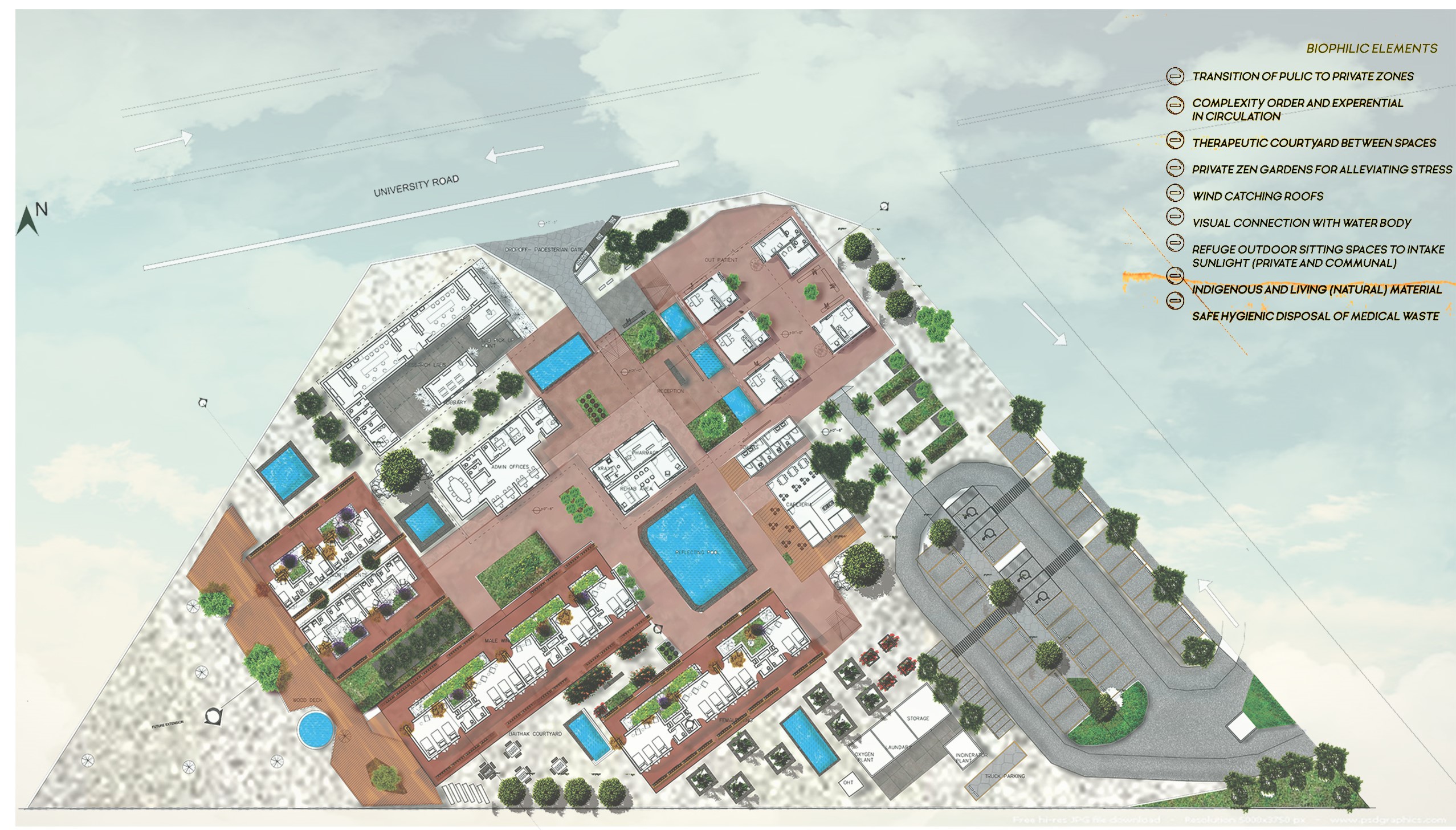
Name / Surname: Amna Jafri
Country:
Team:
Company: Karachi University
Project Description:
Significance of architectural spaces interweaves with natural
elements on well being of human beings. How a living and breathable
indoor space connected with outdoor natural environment compliments
each other and can form Healing Sanctuary for the inhabitants that can help to
escalate the recovery process of Tuberculosis.
Tuberculosis is the most primitive and deadly disease in world and Pakistan comes 5th in ranking for deaths occurring due to Tuberculosis.
5,10,000 people dies in Pakistan annually due to poor living and working condition of the patients and zero awareness about Tuberculosis.
The targeted audience belongs to lower middle class families mostly and usually lives and work in congested areas, multiple families in small houses and enclosed factories respectively.Tuberculosis is a bacterial disease which easily transmit from one person to another via cough, sneeze, laughing etc. The surrounding around a patient becomes contaminated if its an enclosed or dark place with poor ventilation and bacteria accumulate into a space making a healthy person exposed to catch this bacteria.
I have proposed a healing sanctuary for Tuberculosis patient in cosmopolitan city of Pakistan, Karachi, that provide patients a refuge from the contaminated environment outside and a therapeutic space for families and doctors too.
Inspired by Biophilic Elements like outdoor courtyards, water bodies, wind catchers, indigenoys material (rammed earth), zen and therapeutic gardens imprinting positive psychological and physiological impact that alleviate stress levels of doctors, staff, patients and their families.
Positive and healthy interaction can rejuvenate the society that contributes in beating this deadly disease from Pakistan.
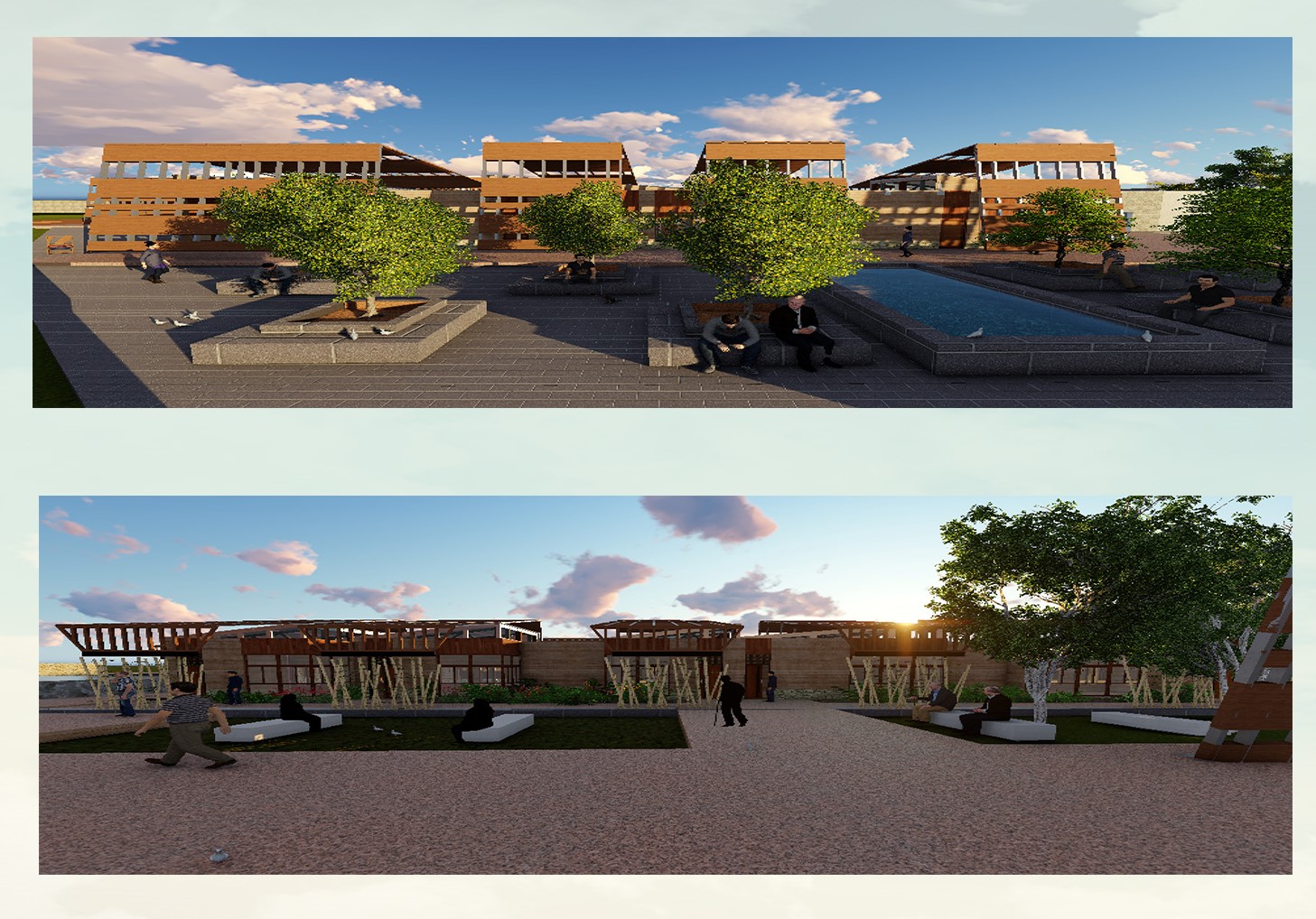
Name / Surname: Amna Jafri
Country:
Team:
Company: Karachi University
Project Description:
Significance of architectural spaces interweaves with natural
elements on well being of human beings. How a living and breathable
indoor space connected with outdoor natural environment compliments
each other and can form Healing Sanctuary for the inhabitants that can help to
escalate the recovery process of Tuberculosis.
Tuberculosis is the most primitive and deadly disease in world and Pakistan comes 5th in ranking for deaths occurring due to Tuberculosis.
5,10,000 people dies in Pakistan annually due to poor living and working condition of the patients and zero awareness about Tuberculosis.
The targeted audience belongs to lower middle class families mostly and usually lives and work in congested areas, multiple families in small houses and enclosed factories respectively.Tuberculosis is a bacterial disease which easily transmit from one person to another via cough, sneeze, laughing etc. The surrounding around a patient becomes contaminated if its an enclosed or dark place with poor ventilation and bacteria accumulate into a space making a healthy person exposed to catch this bacteria.
I have proposed a healing sanctuary for Tuberculosis patient in cosmopolitan city of Pakistan, Karachi, that provide patients a refuge from the contaminated environment outside and a therapeutic space for families and doctors too.
Inspired by Biophilic Elements like outdoor courtyards, water bodies, wind catchers, indigenoys material (rammed earth), zen and therapeutic gardens imprinting positive psychological and physiological impact that alleviate stress levels of doctors, staff, patients and their families.
Positive and healthy interaction can rejuvenate the society that contributes in beating this deadly disease from Pakistan.
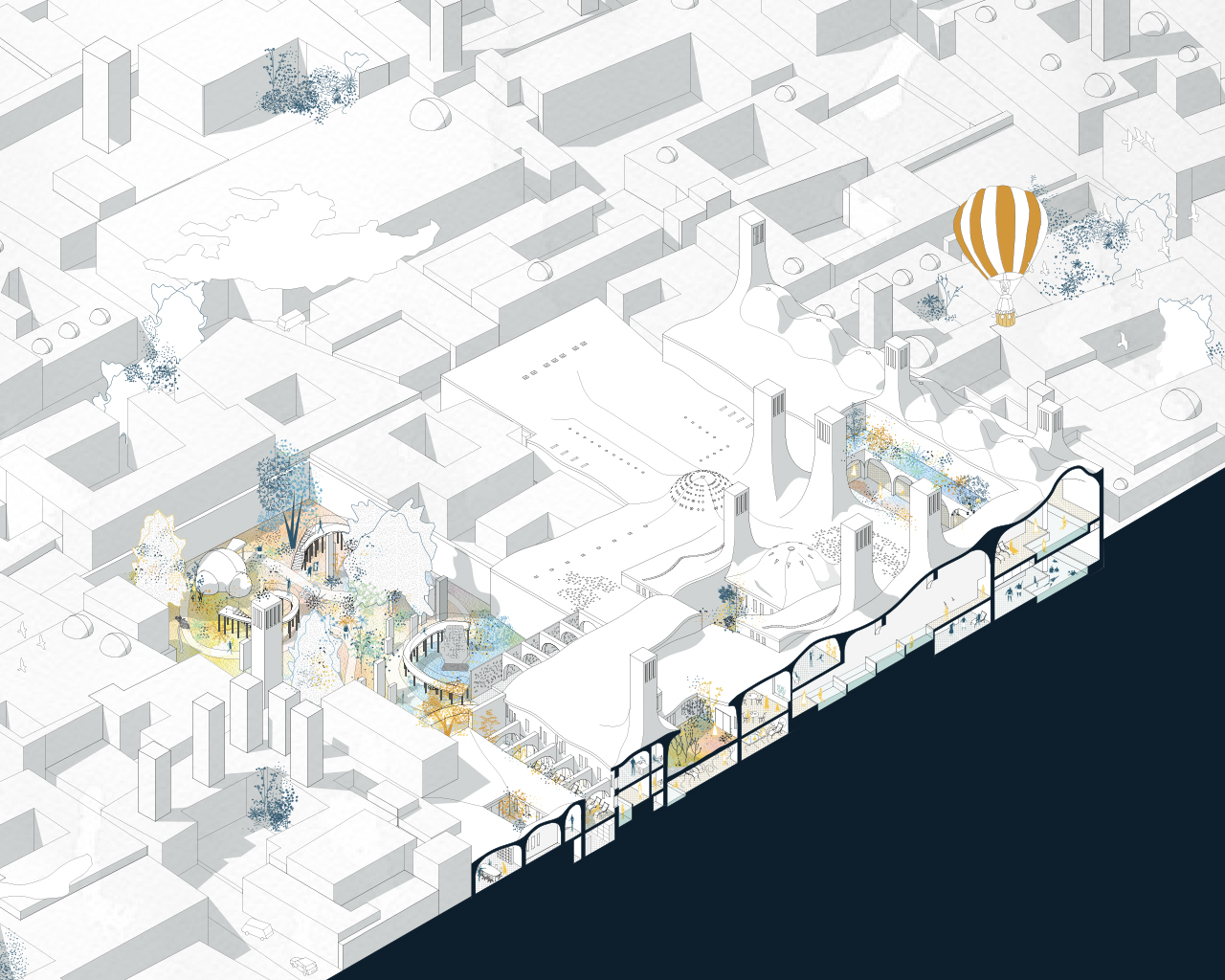
Name / Surname: Elisa Moro
Country:
Team:
Company:
Project Description:
This dissertation aims at the union of planning and fluid dynamics in order to extrapolate a shape, a building or a space that are able to translate any kind of natural cooling into architecture, thanks to the correct usage of bioclimatic strategies and of windcatcher.
The area of the project is in the Old Town of Yazd, a city in the middle of the Iranian desert. After a meticulous morphological and historical analysis, one of the many empty urban spaces of the Old Town were took into consideration, in order to make them have a function which is still absent but which is also ancient and rooted in Persian culture: the hammam.
A hammam, whose origins can be found in the Roman thermal baths, offers different types of spaces, providing for various kinds of physical and psychological comfort. The sequence of different spaces follows the body's progressive adaptation to the environment, it respects the body's rhythm and allows the guest to find their optimal personal space. This allows the building itself to preserve – both passively and naturally - the climate indices established for each room.
The idea behind this project conceives the entire building as a labyrinth which articulates itself into two paths: the masculine and the feminine one, which are intertwined, put side by side or overlapping, but which never meet. The main room mirror the traditional layout of thermal complexes, with tepidarium, calidarium and frigidarium, but there are also relax areas, green patios and covered walkways.
The results have been demonstrated thanks to the usage of an experimental fluid dynamics software that allowed to establish the quantity of windcatcher and the sizing of the underground cistern, necessary to obtain the decrease of the temperatures requested.
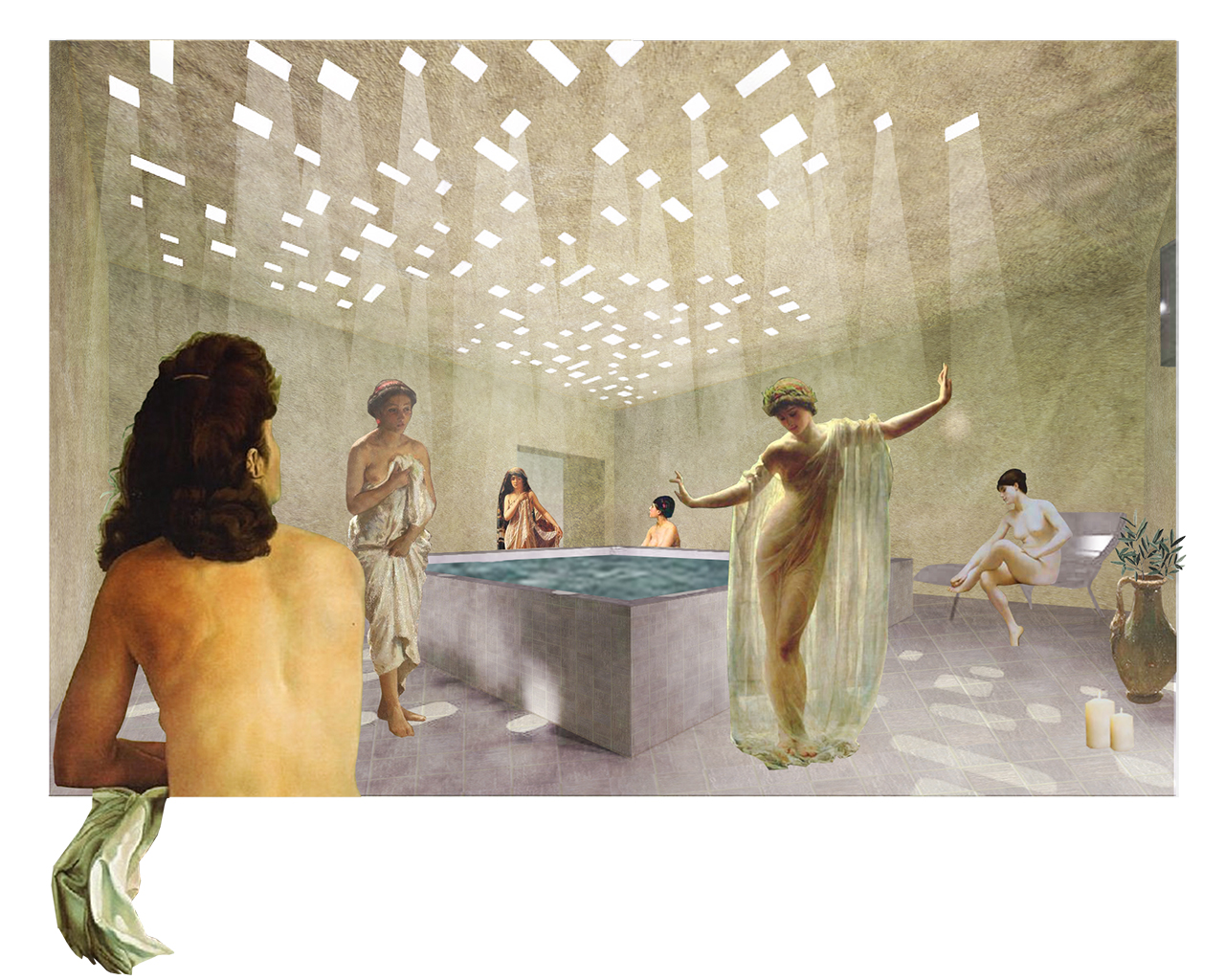
Name / Surname: Elisa Moro
Country:
Team:
Company:
Project Description:
This dissertation aims at the union of planning and fluid dynamics in order to extrapolate a shape, a building or a space that are able to translate any kind of natural cooling into architecture, thanks to the correct usage of bioclimatic strategies and of windcatcher.
The area of the project is in the Old Town of Yazd, a city in the middle of the Iranian desert. After a meticulous morphological and historical analysis, one of the many empty urban spaces of the Old Town were took into consideration, in order to make them have a function which is still absent but which is also ancient and rooted in Persian culture: the hammam.
A hammam, whose origins can be found in the Roman thermal baths, offers different types of spaces, providing for various kinds of physical and psychological comfort. The sequence of different spaces follows the body's progressive adaptation to the environment, it respects the body's rhythm and allows the guest to find their optimal personal space. This allows the building itself to preserve – both passively and naturally - the climate indices established for each room.
The idea behind this project conceives the entire building as a labyrinth which articulates itself into two paths: the masculine and the feminine one, which are intertwined, put side by side or overlapping, but which never meet. The main room mirror the traditional layout of thermal complexes, with tepidarium, calidarium and frigidarium, but there are also relax areas, green patios and covered walkways.
The results have been demonstrated thanks to the usage of an experimental fluid dynamics software that allowed to establish the quantity of windcatcher and the sizing of the underground cistern, necessary to obtain the decrease of the temperatures requested.
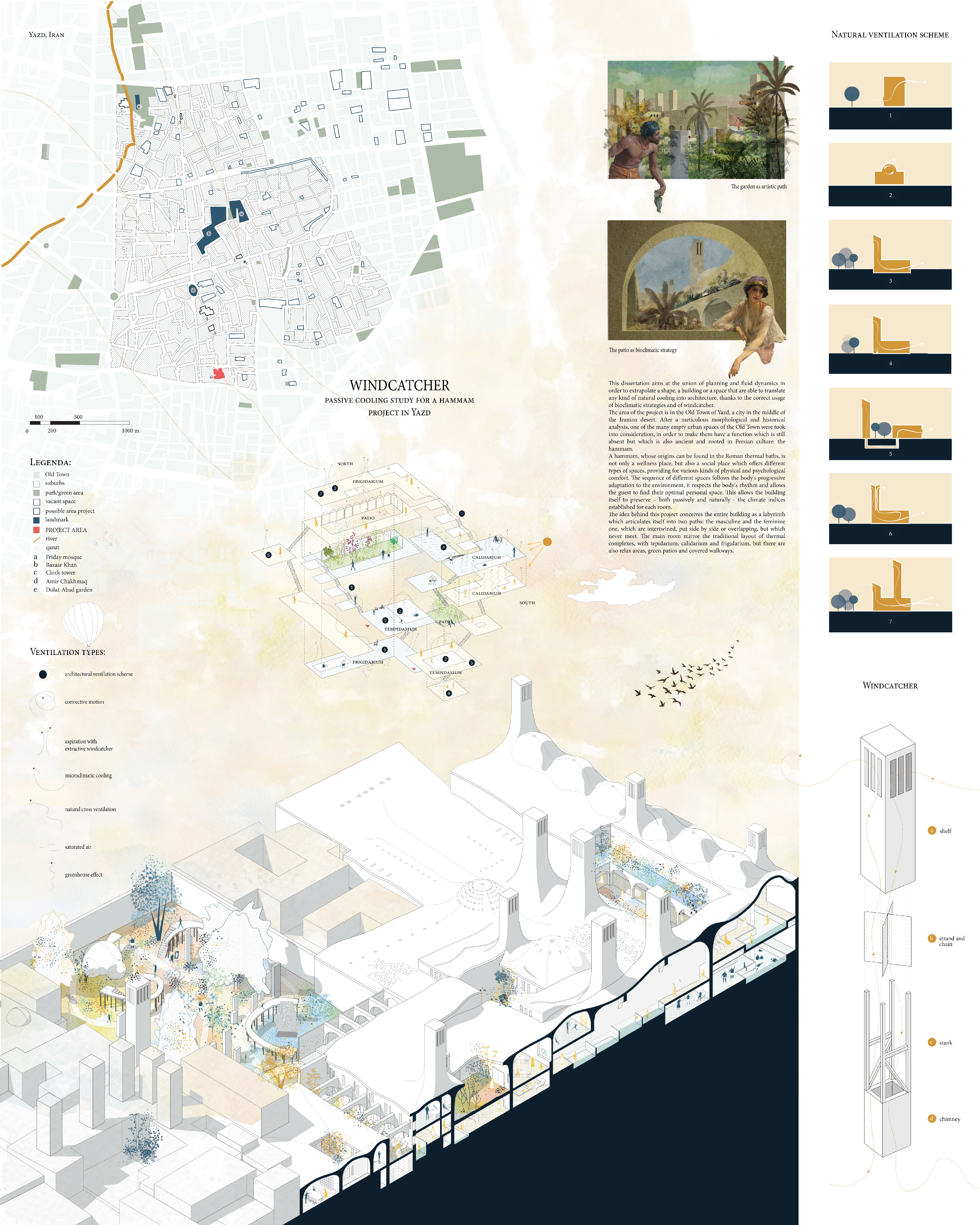
Name / Surname: Elisa Moro
Country:
Team:
Company:
Project Description:
This dissertation aims at the union of planning and fluid dynamics in order to extrapolate a shape, a building or a space that are able to translate any kind of natural cooling into architecture, thanks to the correct usage of bioclimatic strategies and of windcatcher.
The area of the project is in the Old Town of Yazd, a city in the middle of the Iranian desert. After a meticulous morphological and historical analysis, one of the many empty urban spaces of the Old Town were took into consideration, in order to make them have a function which is still absent but which is also ancient and rooted in Persian culture: the hammam.
A hammam, whose origins can be found in the Roman thermal baths, offers different types of spaces, providing for various kinds of physical and psychological comfort. The sequence of different spaces follows the body's progressive adaptation to the environment, it respects the body's rhythm and allows the guest to find their optimal personal space. This allows the building itself to preserve – both passively and naturally - the climate indices established for each room.
The idea behind this project conceives the entire building as a labyrinth which articulates itself into two paths: the masculine and the feminine one, which are intertwined, put side by side or overlapping, but which never meet. The main room mirror the traditional layout of thermal complexes, with tepidarium, calidarium and frigidarium, but there are also relax areas, green patios and covered walkways.
The results have been demonstrated thanks to the usage of an experimental fluid dynamics software that allowed to establish the quantity of windcatcher and the sizing of the underground cistern, necessary to obtain the decrease of the temperatures requested.
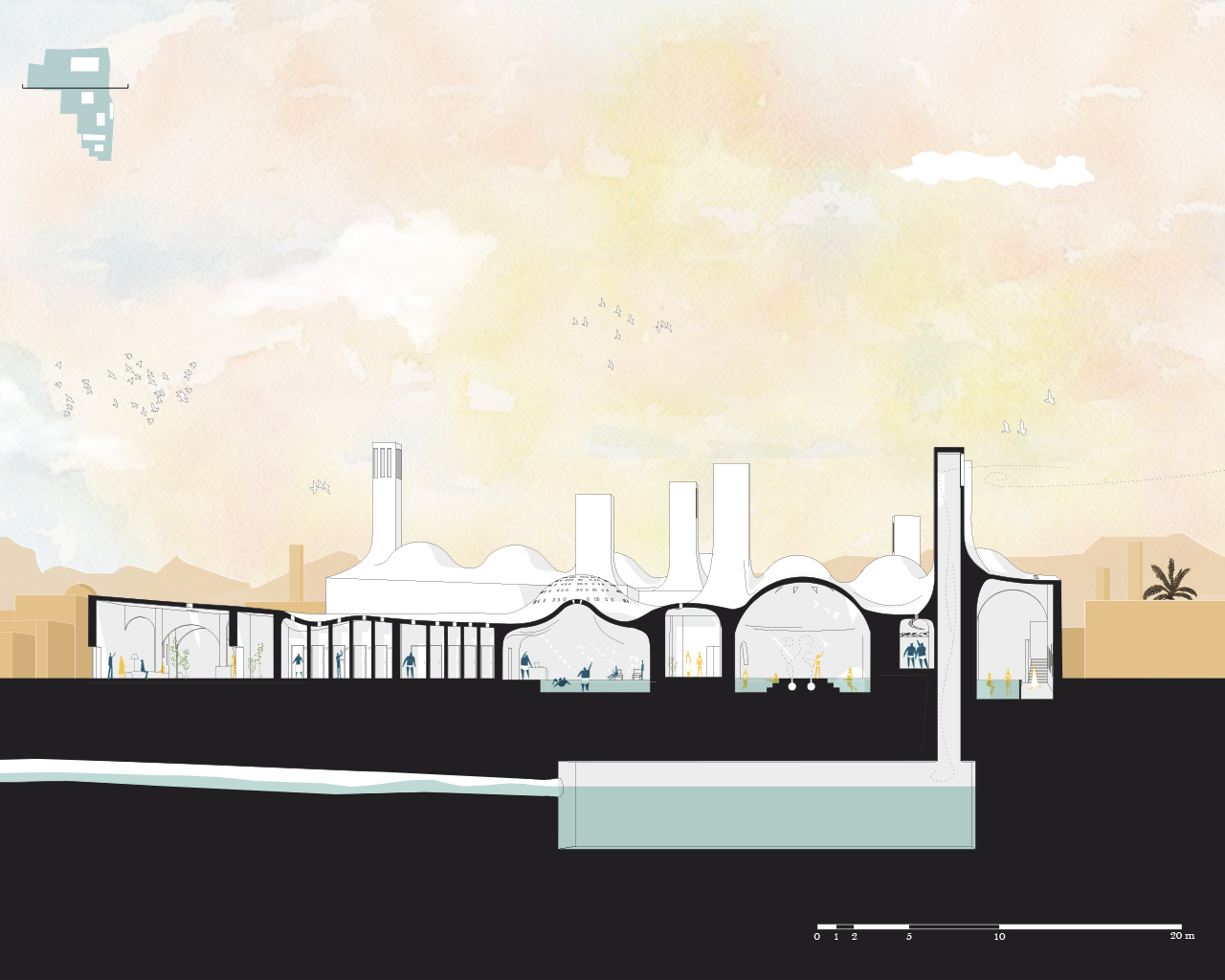
Name / Surname: Elisa Moro
Country:
Team:
Company:
Project Description:
This dissertation aims at the union of planning and fluid dynamics in order to extrapolate a shape, a building or a space that are able to translate any kind of natural cooling into architecture, thanks to the correct usage of bioclimatic strategies and of windcatcher.
The area of the project is in the Old Town of Yazd, a city in the middle of the Iranian desert. After a meticulous morphological and historical analysis, one of the many empty urban spaces of the Old Town were took into consideration, in order to make them have a function which is still absent but which is also ancient and rooted in Persian culture: the hammam.
A hammam, whose origins can be found in the Roman thermal baths, offers different types of spaces, providing for various kinds of physical and psychological comfort. The sequence of different spaces follows the body's progressive adaptation to the environment, it respects the body's rhythm and allows the guest to find their optimal personal space. This allows the building itself to preserve – both passively and naturally - the climate indices established for each room.
The idea behind this project conceives the entire building as a labyrinth which articulates itself into two paths: the masculine and the feminine one, which are intertwined, put side by side or overlapping, but which never meet. The main room mirror the traditional layout of thermal complexes, with tepidarium, calidarium and frigidarium, but there are also relax areas, green patios and covered walkways.
The results have been demonstrated thanks to the usage of an experimental fluid dynamics software that allowed to establish the quantity of windcatcher and the sizing of the underground cistern, necessary to obtain the decrease of the temperatures requested.
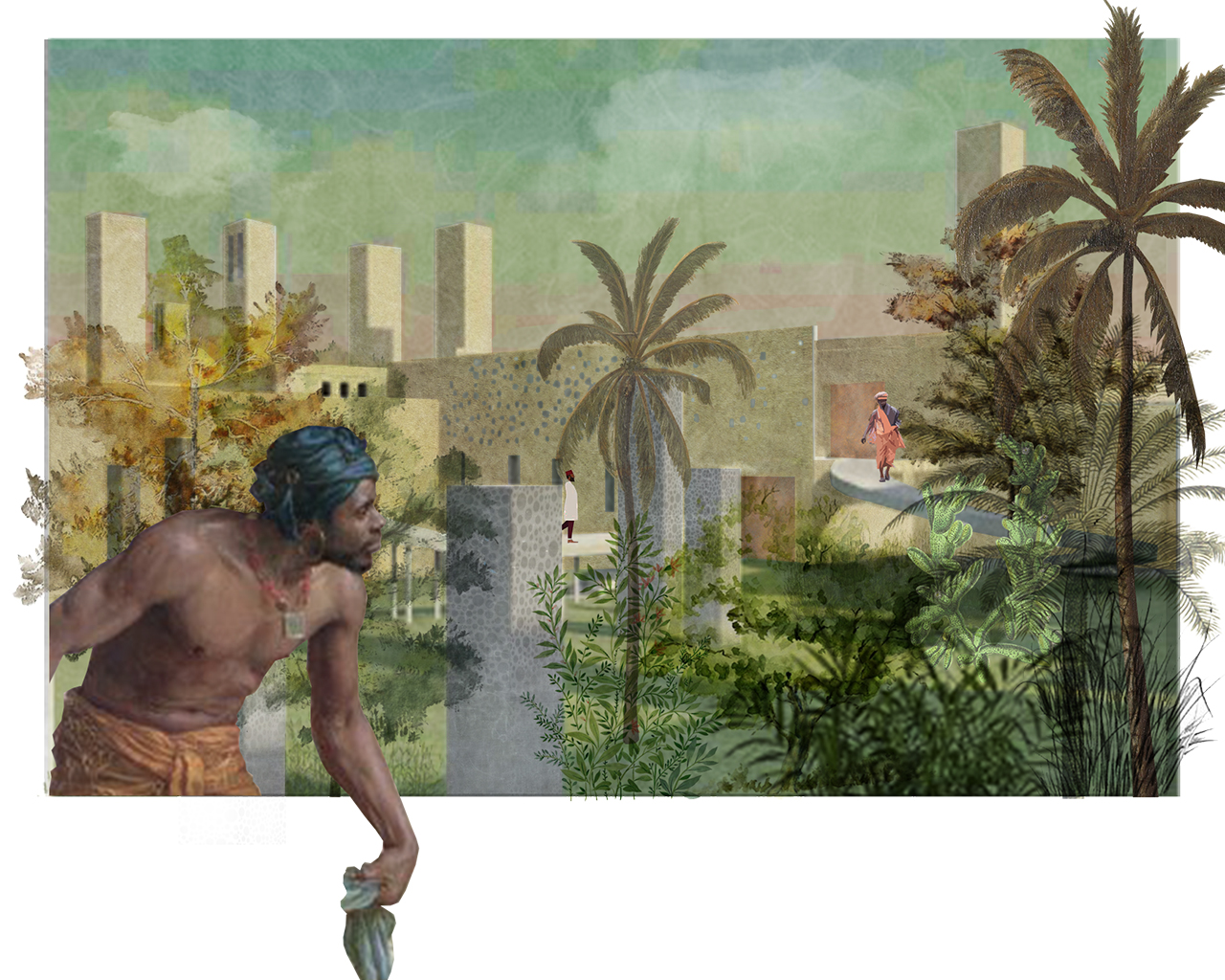
Name / Surname: Elisa Moro
Country:
Team:
Company:
Project Description:
This dissertation aims at the union of planning and fluid dynamics in order to extrapolate a shape, a building or a space that are able to translate any kind of natural cooling into architecture, thanks to the correct usage of bioclimatic strategies and of windcatcher.
The area of the project is in the Old Town of Yazd, a city in the middle of the Iranian desert. After a meticulous morphological and historical analysis, one of the many empty urban spaces of the Old Town were took into consideration, in order to make them have a function which is still absent but which is also ancient and rooted in Persian culture: the hammam.
A hammam, whose origins can be found in the Roman thermal baths, offers different types of spaces, providing for various kinds of physical and psychological comfort. The sequence of different spaces follows the body's progressive adaptation to the environment, it respects the body's rhythm and allows the guest to find their optimal personal space. This allows the building itself to preserve – both passively and naturally - the climate indices established for each room.
The idea behind this project conceives the entire building as a labyrinth which articulates itself into two paths: the masculine and the feminine one, which are intertwined, put side by side or overlapping, but which never meet. The main room mirror the traditional layout of thermal complexes, with tepidarium, calidarium and frigidarium, but there are also relax areas, green patios and covered walkways.
The results have been demonstrated thanks to the usage of an experimental fluid dynamics software that allowed to establish the quantity of windcatcher and the sizing of the underground cistern, necessary to obtain the decrease of the temperatures requested.
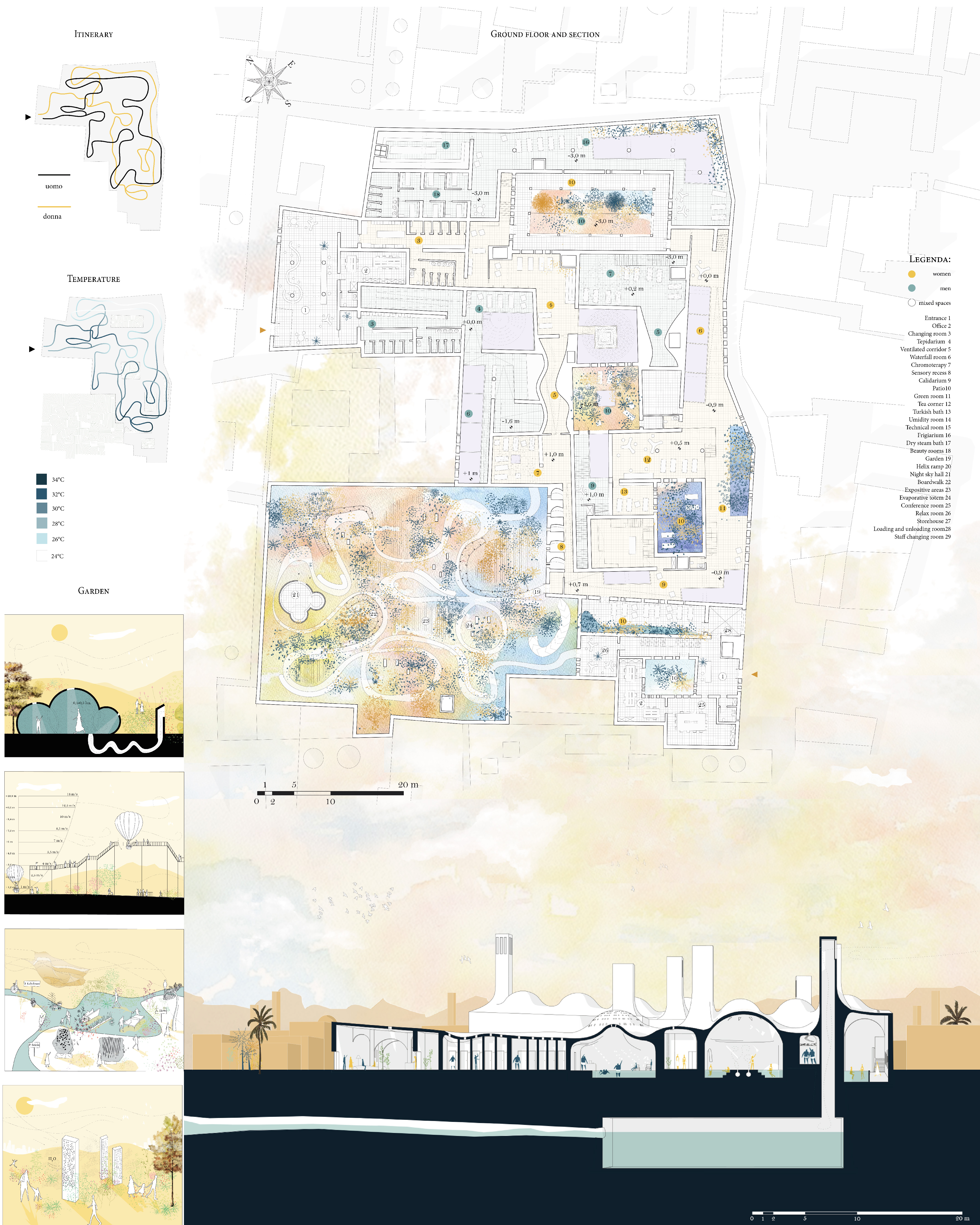
Name / Surname: Elisa Moro
Country:
Team:
Company:
Project Description:
This dissertation aims at the union of planning and fluid dynamics in order to extrapolate a shape, a building or a space that are able to translate any kind of natural cooling into architecture, thanks to the correct usage of bioclimatic strategies and of windcatcher.
The area of the project is in the Old Town of Yazd, a city in the middle of the Iranian desert. After a meticulous morphological and historical analysis, one of the many empty urban spaces of the Old Town were took into consideration, in order to make them have a function which is still absent but which is also ancient and rooted in Persian culture: the hammam.
A hammam, whose origins can be found in the Roman thermal baths, offers different types of spaces, providing for various kinds of physical and psychological comfort. The sequence of different spaces follows the body's progressive adaptation to the environment, it respects the body's rhythm and allows the guest to find their optimal personal space. This allows the building itself to preserve – both passively and naturally - the climate indices established for each room.
The idea behind this project conceives the entire building as a labyrinth which articulates itself into two paths: the masculine and the feminine one, which are intertwined, put side by side or overlapping, but which never meet. The main room mirror the traditional layout of thermal complexes, with tepidarium, calidarium and frigidarium, but there are also relax areas, green patios and covered walkways.
The results have been demonstrated thanks to the usage of an experimental fluid dynamics software that allowed to establish the quantity of windcatcher and the sizing of the underground cistern, necessary to obtain the decrease of the temperatures requested.
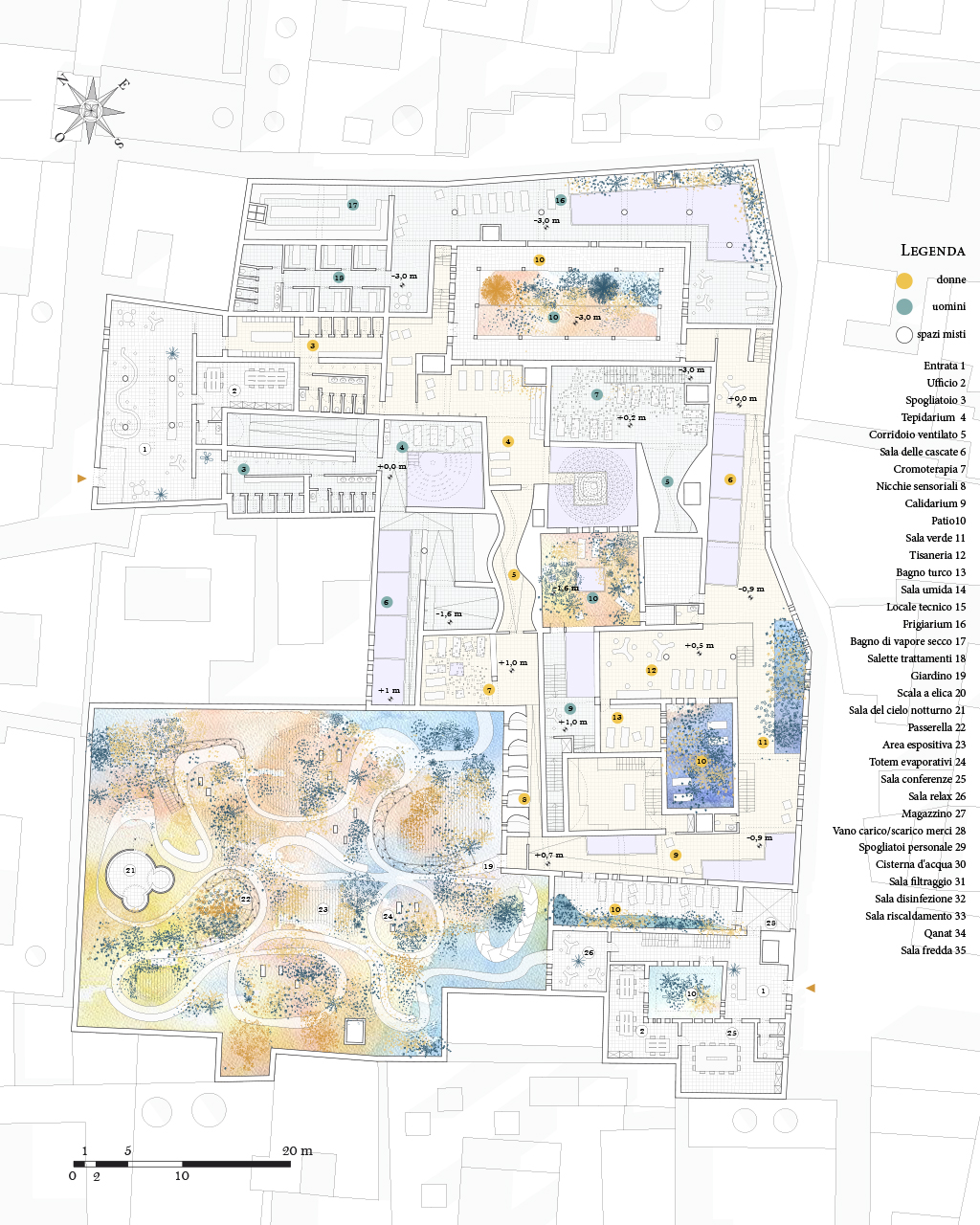
Name / Surname: Elisa Moro
Country:
Team:
Company:
Project Description:
This dissertation aims at the union of planning and fluid dynamics in order to extrapolate a shape, a building or a space that are able to translate any kind of natural cooling into architecture, thanks to the correct usage of bioclimatic strategies and of windcatcher.
The area of the project is in the Old Town of Yazd, a city in the middle of the Iranian desert. After a meticulous morphological and historical analysis, one of the many empty urban spaces of the Old Town were took into consideration, in order to make them have a function which is still absent but which is also ancient and rooted in Persian culture: the hammam.
A hammam, whose origins can be found in the Roman thermal baths, offers different types of spaces, providing for various kinds of physical and psychological comfort. The sequence of different spaces follows the body's progressive adaptation to the environment, it respects the body's rhythm and allows the guest to find their optimal personal space. This allows the building itself to preserve – both passively and naturally - the climate indices established for each room.
The idea behind this project conceives the entire building as a labyrinth which articulates itself into two paths: the masculine and the feminine one, which are intertwined, put side by side or overlapping, but which never meet. The main room mirror the traditional layout of thermal complexes, with tepidarium, calidarium and frigidarium, but there are also relax areas, green patios and covered walkways.
The results have been demonstrated thanks to the usage of an experimental fluid dynamics software that allowed to establish the quantity of windcatcher and the sizing of the underground cistern, necessary to obtain the decrease of the temperatures requested.
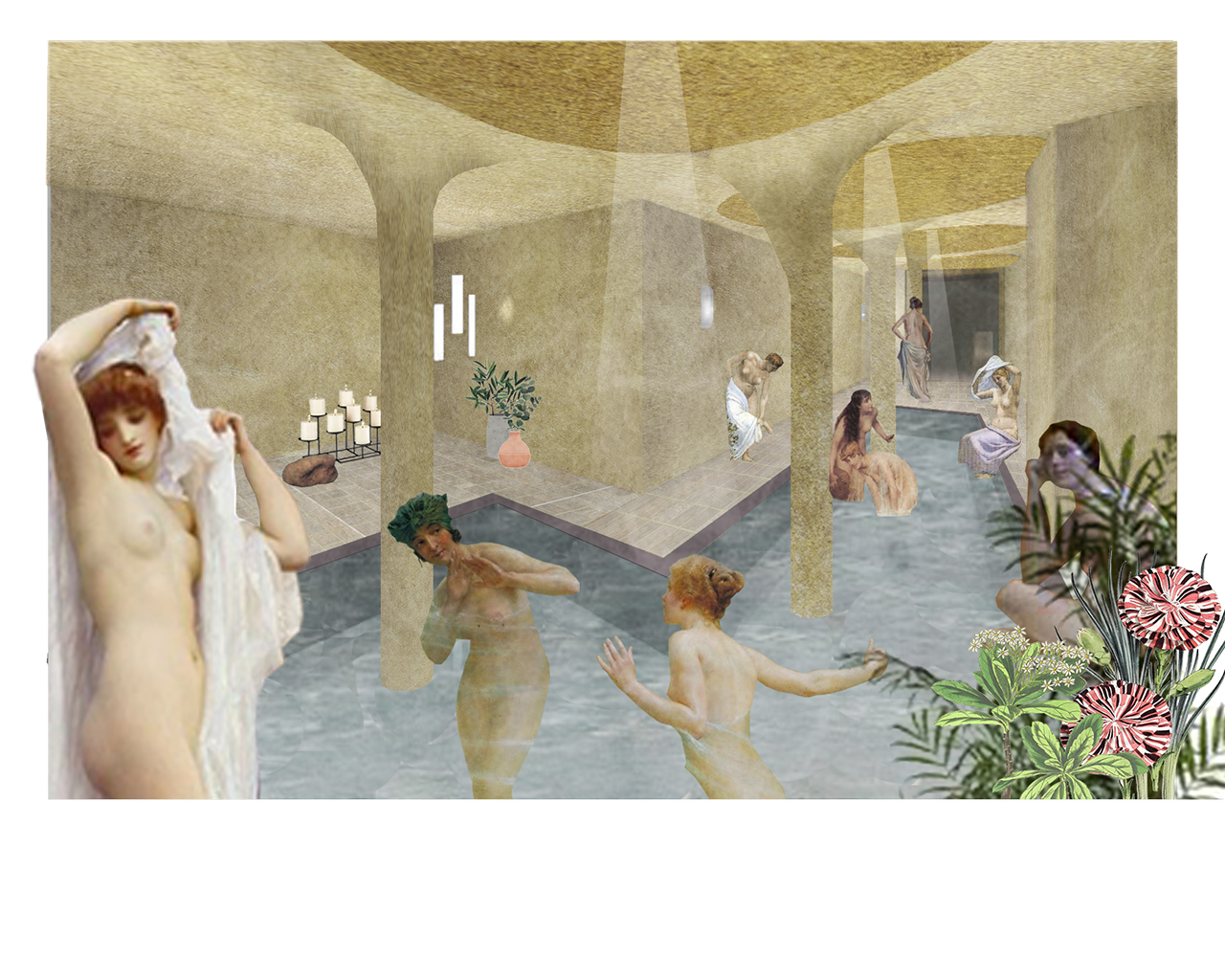
Name / Surname: Elisa Moro
Country:
Team:
Company:
Project Description:
This dissertation aims at the union of planning and fluid dynamics in order to extrapolate a shape, a building or a space that are able to translate any kind of natural cooling into architecture, thanks to the correct usage of bioclimatic strategies and of windcatcher.
The area of the project is in the Old Town of Yazd, a city in the middle of the Iranian desert. After a meticulous morphological and historical analysis, one of the many empty urban spaces of the Old Town were took into consideration, in order to make them have a function which is still absent but which is also ancient and rooted in Persian culture: the hammam.
A hammam, whose origins can be found in the Roman thermal baths, offers different types of spaces, providing for various kinds of physical and psychological comfort. The sequence of different spaces follows the body's progressive adaptation to the environment, it respects the body's rhythm and allows the guest to find their optimal personal space. This allows the building itself to preserve – both passively and naturally - the climate indices established for each room.
The idea behind this project conceives the entire building as a labyrinth which articulates itself into two paths: the masculine and the feminine one, which are intertwined, put side by side or overlapping, but which never meet. The main room mirror the traditional layout of thermal complexes, with tepidarium, calidarium and frigidarium, but there are also relax areas, green patios and covered walkways.
The results have been demonstrated thanks to the usage of an experimental fluid dynamics software that allowed to establish the quantity of windcatcher and the sizing of the underground cistern, necessary to obtain the decrease of the temperatures requested.
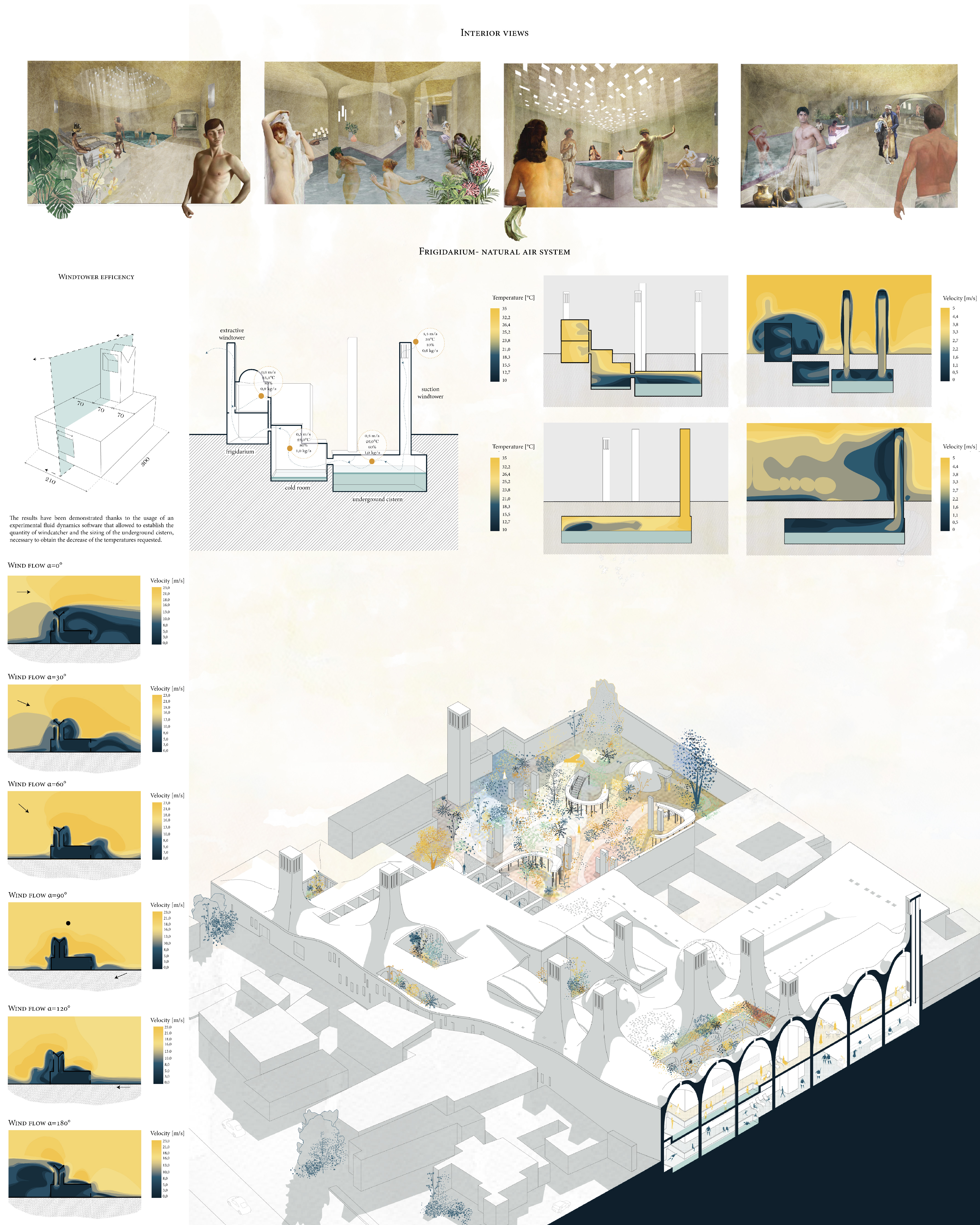
Name / Surname: Elisa Moro
Country:
Team:
Company:
Project Description:
This dissertation aims at the union of planning and fluid dynamics in order to extrapolate a shape, a building or a space that are able to translate any kind of natural cooling into architecture, thanks to the correct usage of bioclimatic strategies and of windcatcher.
The area of the project is in the Old Town of Yazd, a city in the middle of the Iranian desert. After a meticulous morphological and historical analysis, one of the many empty urban spaces of the Old Town were took into consideration, in order to make them have a function which is still absent but which is also ancient and rooted in Persian culture: the hammam.
A hammam, whose origins can be found in the Roman thermal baths, offers different types of spaces, providing for various kinds of physical and psychological comfort. The sequence of different spaces follows the body's progressive adaptation to the environment, it respects the body's rhythm and allows the guest to find their optimal personal space. This allows the building itself to preserve – both passively and naturally - the climate indices established for each room.
The idea behind this project conceives the entire building as a labyrinth which articulates itself into two paths: the masculine and the feminine one, which are intertwined, put side by side or overlapping, but which never meet. The main room mirror the traditional layout of thermal complexes, with tepidarium, calidarium and frigidarium, but there are also relax areas, green patios and covered walkways.
The results have been demonstrated thanks to the usage of an experimental fluid dynamics software that allowed to establish the quantity of windcatcher and the sizing of the underground cistern, necessary to obtain the decrease of the temperatures requested.
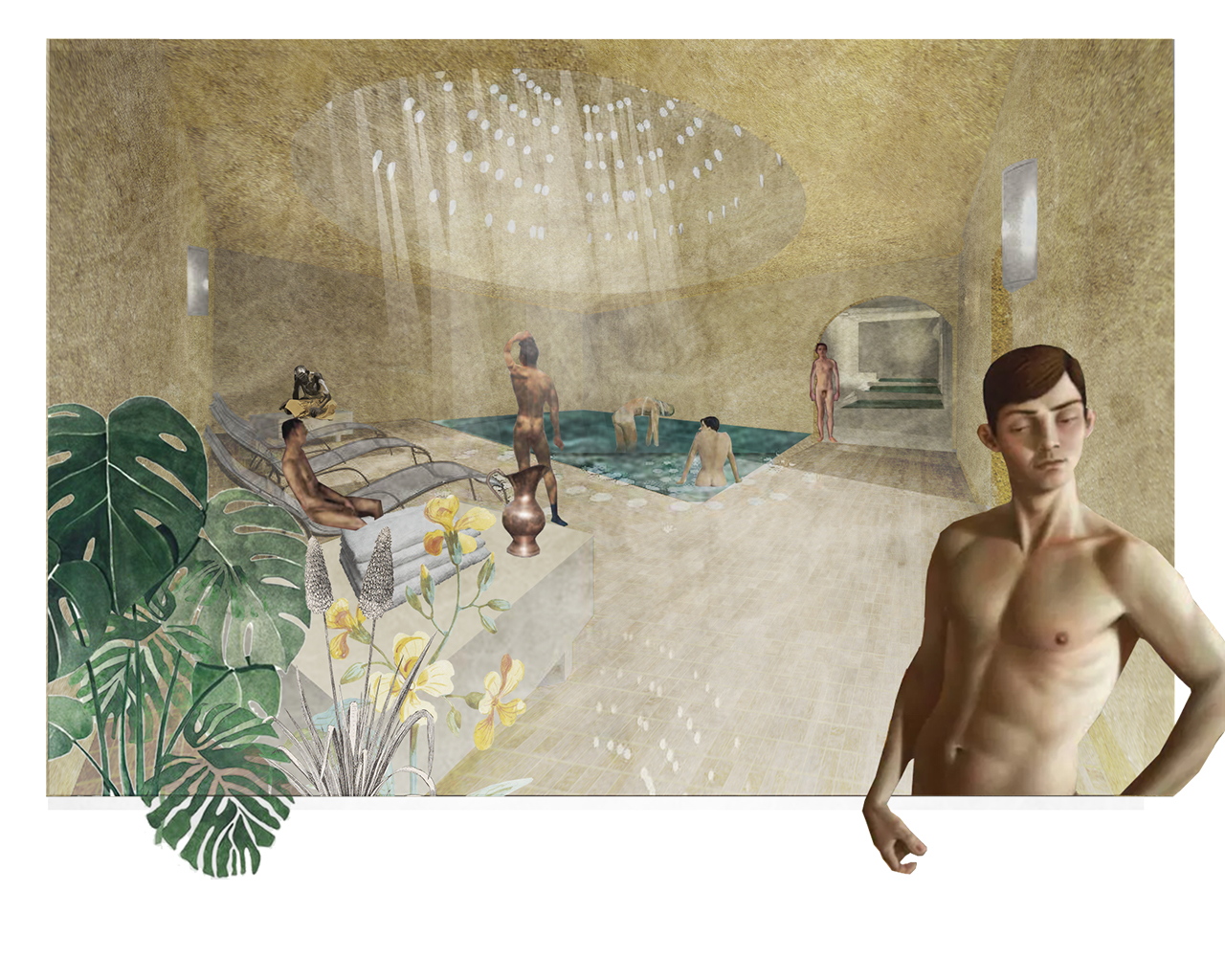
Name / Surname: Elisa Moro
Country:
Team:
Company:
Project Description:
This dissertation aims at the union of planning and fluid dynamics in order to extrapolate a shape, a building or a space that are able to translate any kind of natural cooling into architecture, thanks to the correct usage of bioclimatic strategies and of windcatcher.
The area of the project is in the Old Town of Yazd, a city in the middle of the Iranian desert. After a meticulous morphological and historical analysis, one of the many empty urban spaces of the Old Town were took into consideration, in order to make them have a function which is still absent but which is also ancient and rooted in Persian culture: the hammam.
A hammam, whose origins can be found in the Roman thermal baths, offers different types of spaces, providing for various kinds of physical and psychological comfort. The sequence of different spaces follows the body's progressive adaptation to the environment, it respects the body's rhythm and allows the guest to find their optimal personal space. This allows the building itself to preserve – both passively and naturally - the climate indices established for each room.
The idea behind this project conceives the entire building as a labyrinth which articulates itself into two paths: the masculine and the feminine one, which are intertwined, put side by side or overlapping, but which never meet. The main room mirror the traditional layout of thermal complexes, with tepidarium, calidarium and frigidarium, but there are also relax areas, green patios and covered walkways.
The results have been demonstrated thanks to the usage of an experimental fluid dynamics software that allowed to establish the quantity of windcatcher and the sizing of the underground cistern, necessary to obtain the decrease of the temperatures requested.
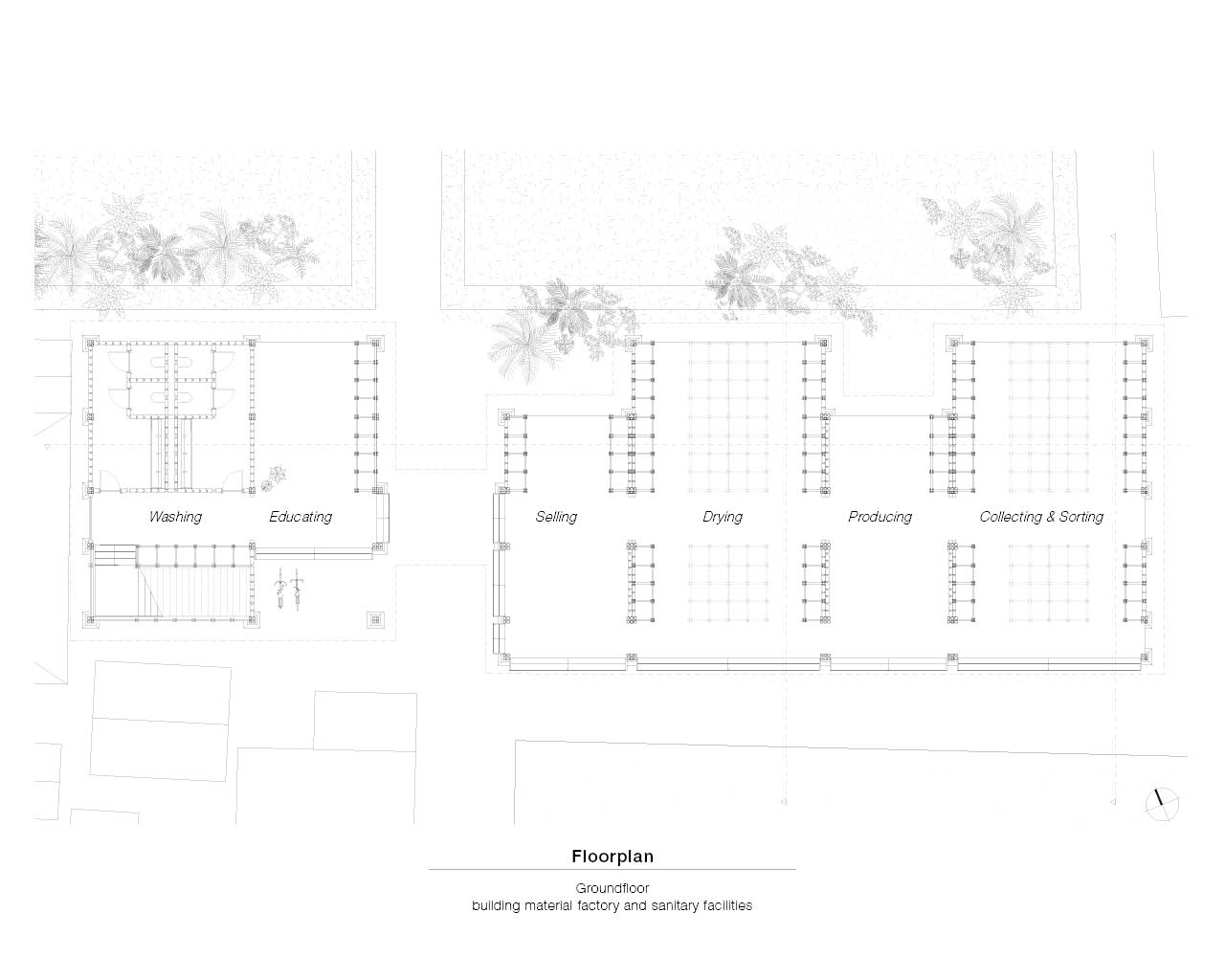
Name / Surname: Josephine Van Empelen
Country:
Team:
Company:
Project Description:
Since 2014 more than half of the worldwide population lives in cities, trend increasing. Especially in developing countries big amounts of people come to cities in search for a better life. Also Indonesia has been experiencing high economic growth and people left the countryside in search for work in factories. This resulted in a big housing shortage; country wide there was a backlog of 11.4 million houses in 2015 and there is an additional need for 800.000 new houses annually. Many urban kampungs have problems with the durability of dwellings, are overcrowded and lack drinking water and sanitation.
This project developed a building system that opts for the use of biobased building materials in support of better structures, less construction- and demolition waste and a healthier living environment. To implement this new building system in practice, there is a factory line integrated in the design proposal. The first room includes a collecting- and sorting plant, followed by a production space, a drying space and a building material shop. To encourage the local community to use the new dry stacking system, the building also includes an educational room where the local community is educated about the use and maintenance of the building system. The on the upper floors established dwellings serve as a prototype for the implementation of the dry stacking system at the construction of dwellings. This project provides the local community with an opportunity to construct better dwellings with minimum resources, offering an economic and ecological alternative to the current building practice. Besides, the project motivates the local community to care more about their environment; its a basis for a circular economy beyond biobased building materials, including water and food.
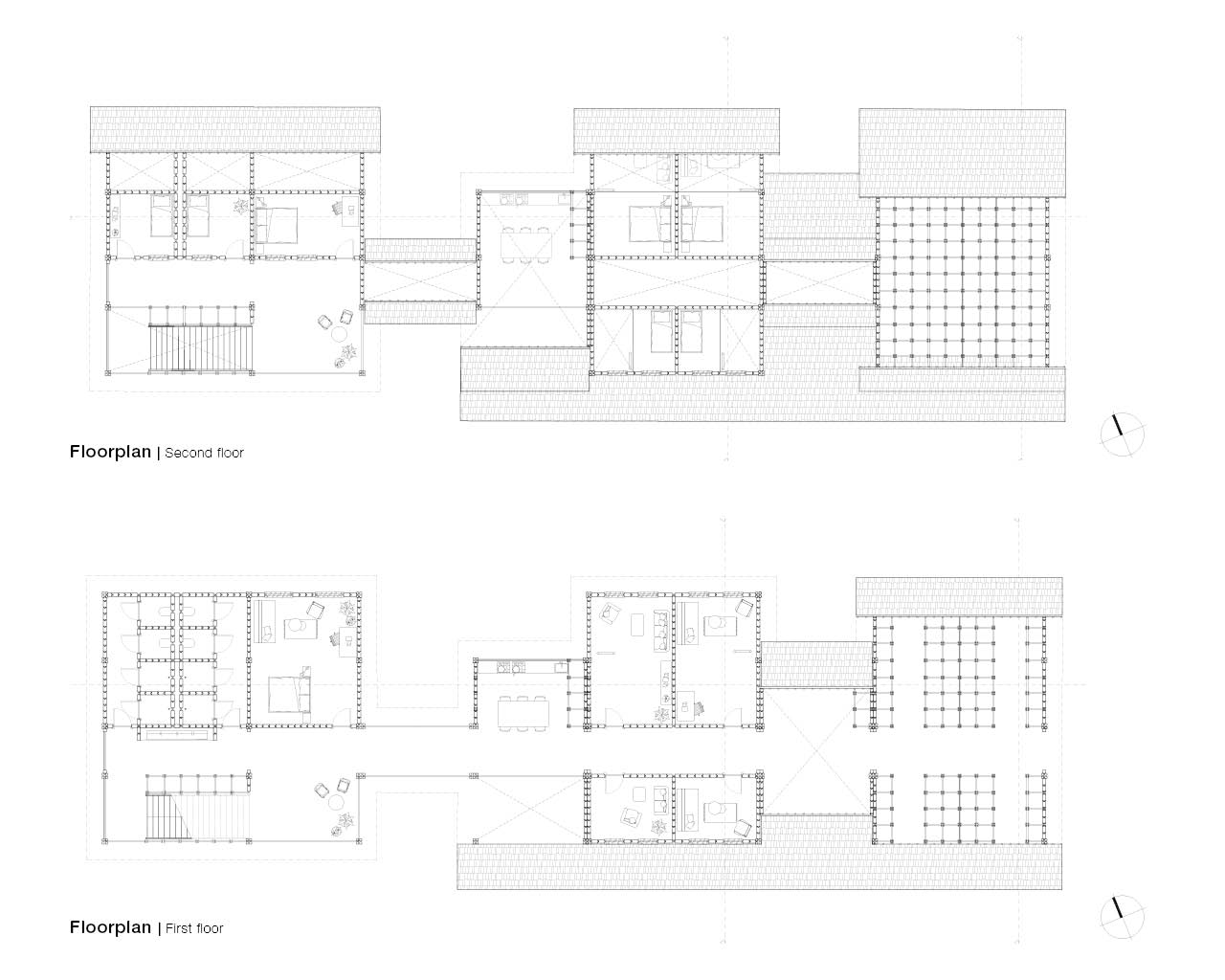
Name / Surname: Josephine Van Empelen
Country:
Team:
Company:
Project Description:
Since 2014 more than half of the worldwide population lives in cities, trend increasing. Especially in developing countries big amounts of people come to cities in search for a better life. Also Indonesia has been experiencing high economic growth and people left the countryside in search for work in factories. This resulted in a big housing shortage; country wide there was a backlog of 11.4 million houses in 2015 and there is an additional need for 800.000 new houses annually. Many urban kampungs have problems with the durability of dwellings, are overcrowded and lack drinking water and sanitation.
This project developed a building system that opts for the use of biobased building materials in support of better structures, less construction- and demolition waste and a healthier living environment. To implement this new building system in practice, there is a factory line integrated in the design proposal. The first room includes a collecting- and sorting plant, followed by a production space, a drying space and a building material shop. To encourage the local community to use the new dry stacking system, the building also includes an educational room where the local community is educated about the use and maintenance of the building system. The on the upper floors established dwellings serve as a prototype for the implementation of the dry stacking system at the construction of dwellings. This project provides the local community with an opportunity to construct better dwellings with minimum resources, offering an economic and ecological alternative to the current building practice. Besides, the project motivates the local community to care more about their environment; its a basis for a circular economy beyond biobased building materials, including water and food.
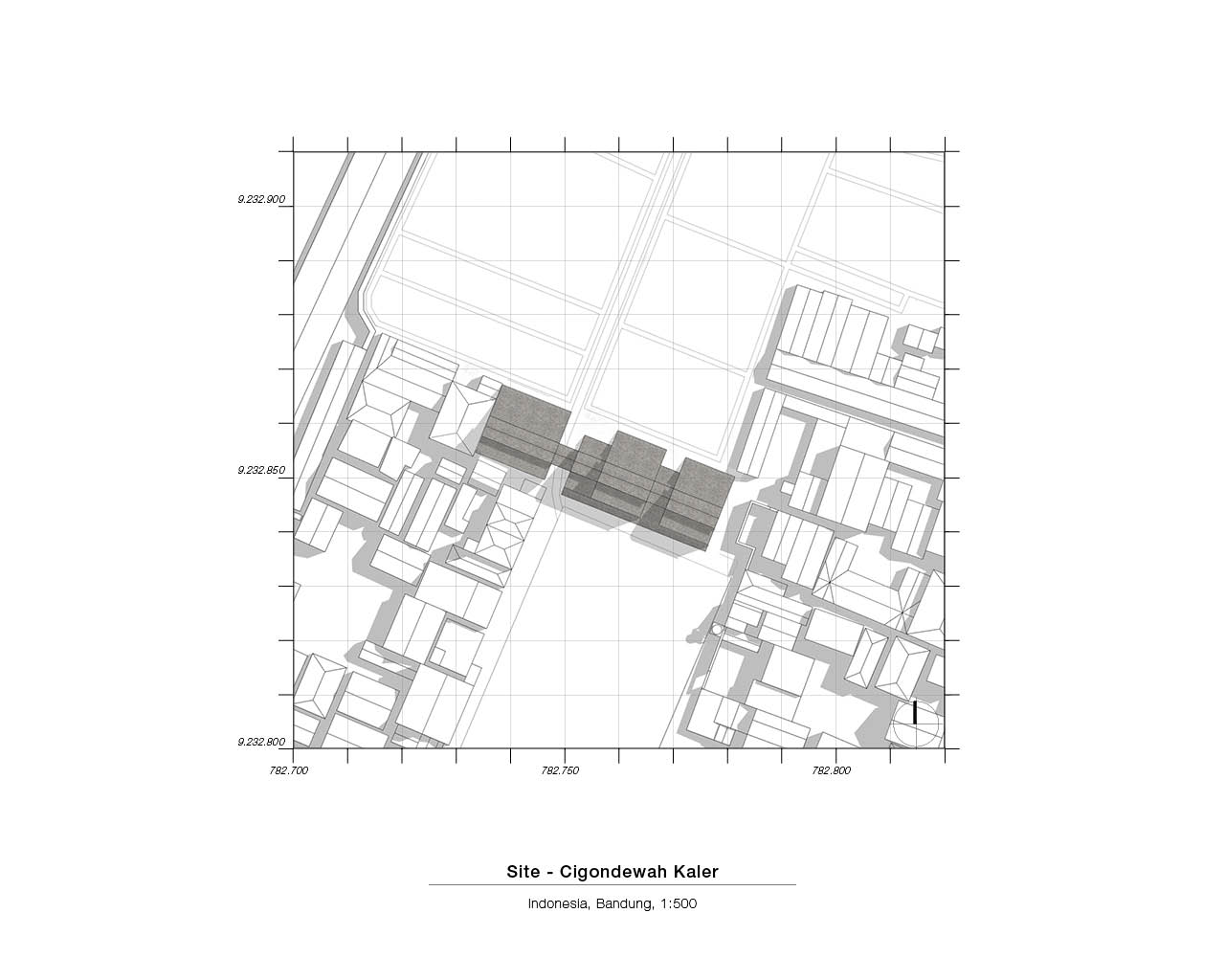
Name / Surname: Josephine Van Empelen
Country:
Team:
Company:
Project Description:
Since 2014 more than half of the worldwide population lives in cities, trend increasing. Especially in developing countries big amounts of people come to cities in search for a better life. Also Indonesia has been experiencing high economic growth and people left the countryside in search for work in factories. This resulted in a big housing shortage; country wide there was a backlog of 11.4 million houses in 2015 and there is an additional need for 800.000 new houses annually. Many urban kampungs have problems with the durability of dwellings, are overcrowded and lack drinking water and sanitation.
This project developed a building system that opts for the use of biobased building materials in support of better structures, less construction- and demolition waste and a healthier living environment. To implement this new building system in practice, there is a factory line integrated in the design proposal. The first room includes a collecting- and sorting plant, followed by a production space, a drying space and a building material shop. To encourage the local community to use the new dry stacking system, the building also includes an educational room where the local community is educated about the use and maintenance of the building system. The on the upper floors established dwellings serve as a prototype for the implementation of the dry stacking system at the construction of dwellings. This project provides the local community with an opportunity to construct better dwellings with minimum resources, offering an economic and ecological alternative to the current building practice. Besides, the project motivates the local community to care more about their environment; its a basis for a circular economy beyond biobased building materials, including water and food.
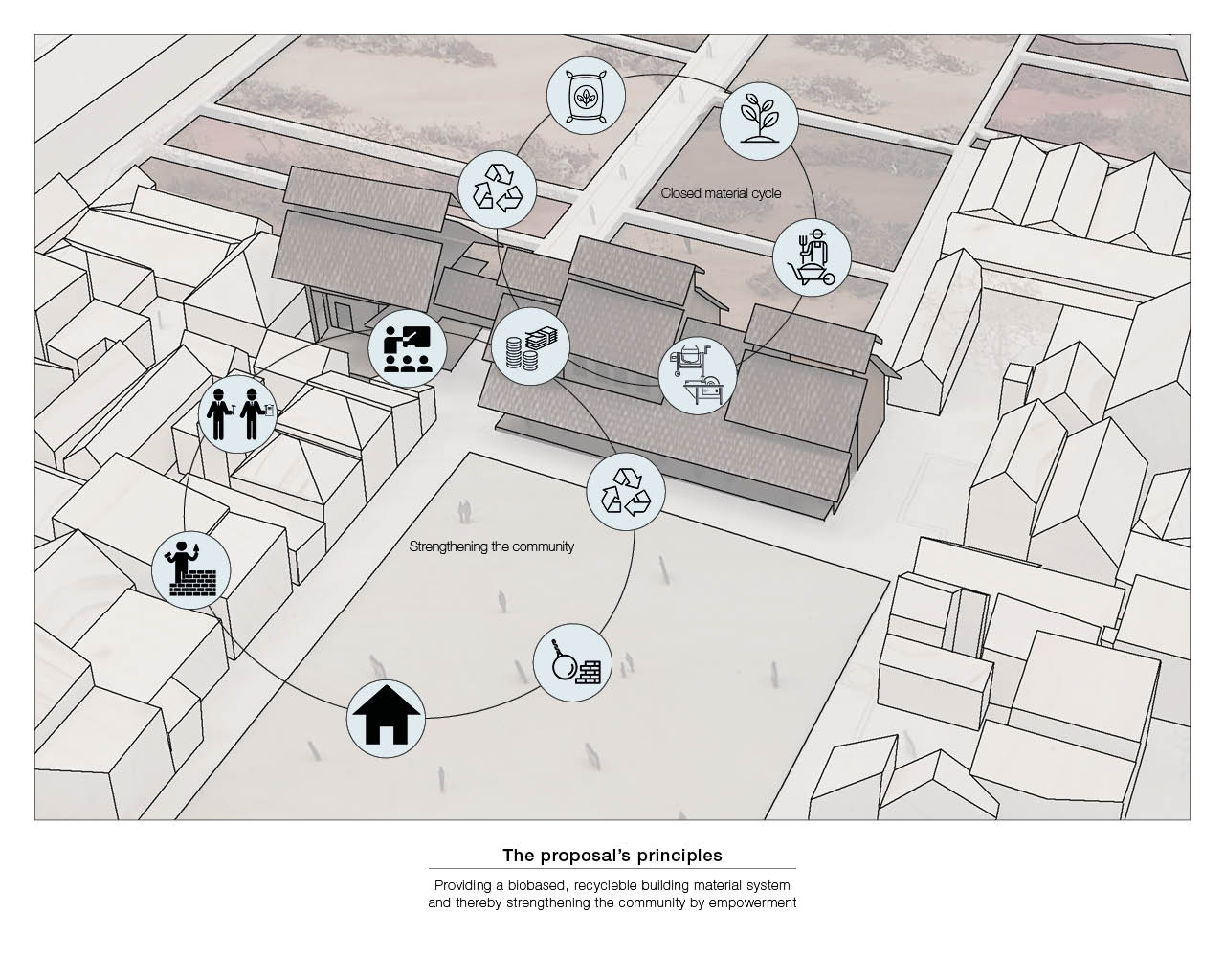
Name / Surname: Josephine Van Empelen
Country:
Team:
Company:
Project Description:
Since 2014 more than half of the worldwide population lives in cities, trend increasing. Especially in developing countries big amounts of people come to cities in search for a better life. Also Indonesia has been experiencing high economic growth and people left the countryside in search for work in factories. This resulted in a big housing shortage; country wide there was a backlog of 11.4 million houses in 2015 and there is an additional need for 800.000 new houses annually. Many urban kampungs have problems with the durability of dwellings, are overcrowded and lack drinking water and sanitation.
This project developed a building system that opts for the use of biobased building materials in support of better structures, less construction- and demolition waste and a healthier living environment. To implement this new building system in practice, there is a factory line integrated in the design proposal. The first room includes a collecting- and sorting plant, followed by a production space, a drying space and a building material shop. To encourage the local community to use the new dry stacking system, the building also includes an educational room where the local community is educated about the use and maintenance of the building system. The on the upper floors established dwellings serve as a prototype for the implementation of the dry stacking system at the construction of dwellings. This project provides the local community with an opportunity to construct better dwellings with minimum resources, offering an economic and ecological alternative to the current building practice. Besides, the project motivates the local community to care more about their environment; its a basis for a circular economy beyond biobased building materials, including water and food.
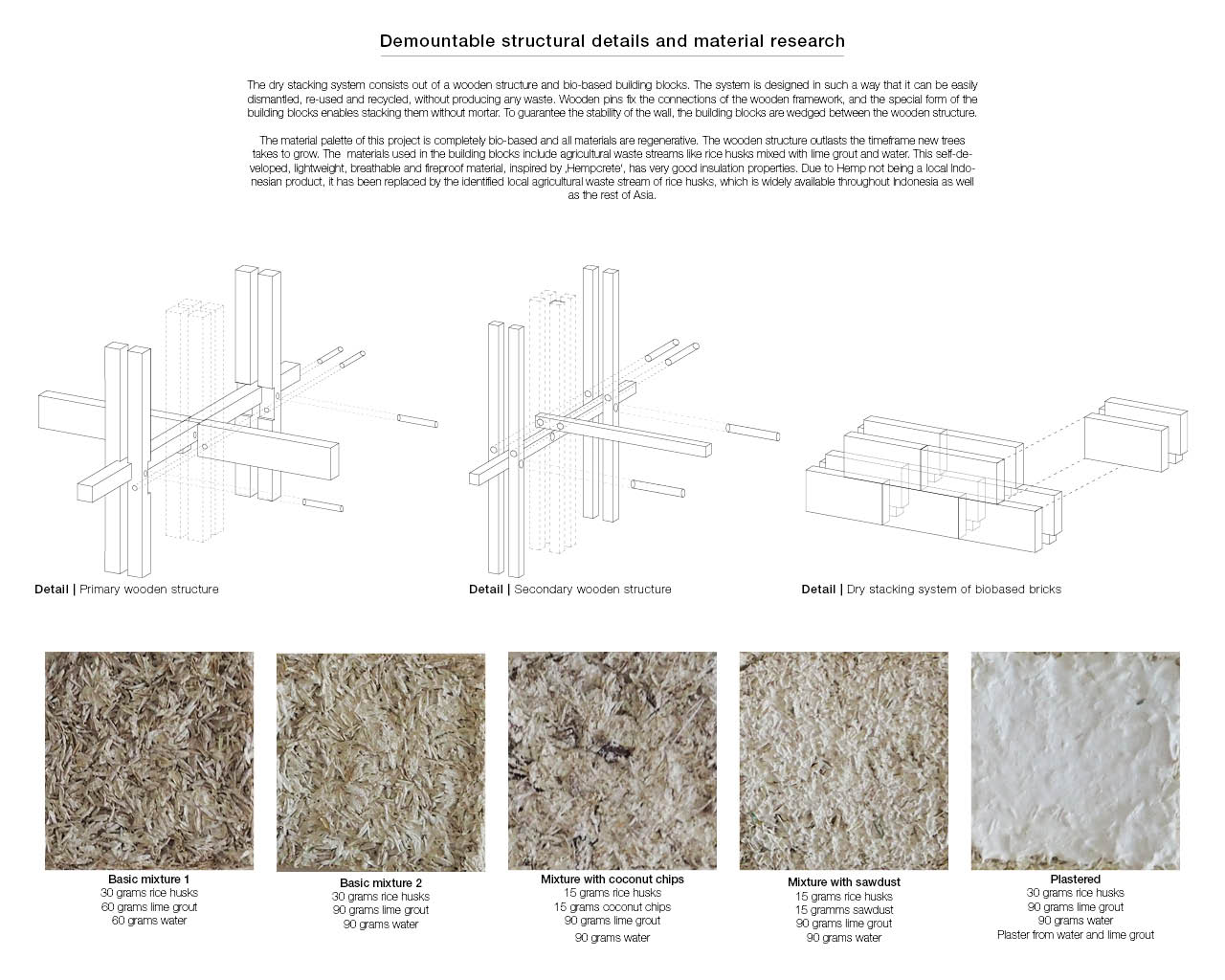
Name / Surname: Josephine Van Empelen
Country:
Team:
Company:
Project Description:
Since 2014 more than half of the worldwide population lives in cities, trend increasing. Especially in developing countries big amounts of people come to cities in search for a better life. Also Indonesia has been experiencing high economic growth and people left the countryside in search for work in factories. This resulted in a big housing shortage; country wide there was a backlog of 11.4 million houses in 2015 and there is an additional need for 800.000 new houses annually. Many urban kampungs have problems with the durability of dwellings, are overcrowded and lack drinking water and sanitation.
This project developed a building system that opts for the use of biobased building materials in support of better structures, less construction- and demolition waste and a healthier living environment. To implement this new building system in practice, there is a factory line integrated in the design proposal. The first room includes a collecting- and sorting plant, followed by a production space, a drying space and a building material shop. To encourage the local community to use the new dry stacking system, the building also includes an educational room where the local community is educated about the use and maintenance of the building system. The on the upper floors established dwellings serve as a prototype for the implementation of the dry stacking system at the construction of dwellings. This project provides the local community with an opportunity to construct better dwellings with minimum resources, offering an economic and ecological alternative to the current building practice. Besides, the project motivates the local community to care more about their environment; its a basis for a circular economy beyond biobased building materials, including water and food.
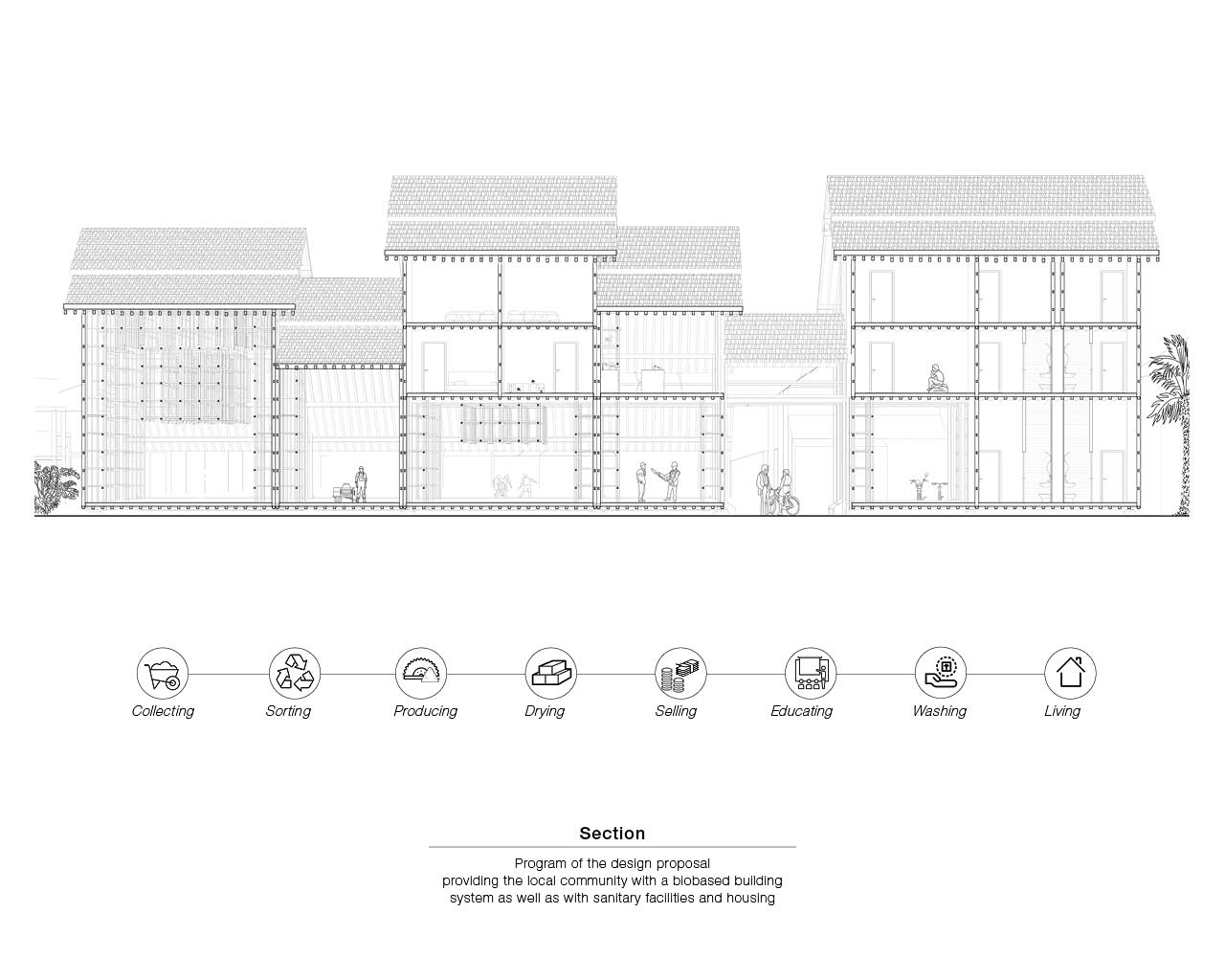
Name / Surname: Josephine Van Empelen
Country:
Team:
Company:
Project Description:
Since 2014 more than half of the worldwide population lives in cities, trend increasing. Especially in developing countries big amounts of people come to cities in search for a better life. Also Indonesia has been experiencing high economic growth and people left the countryside in search for work in factories. This resulted in a big housing shortage; country wide there was a backlog of 11.4 million houses in 2015 and there is an additional need for 800.000 new houses annually. Many urban kampungs have problems with the durability of dwellings, are overcrowded and lack drinking water and sanitation.
This project developed a building system that opts for the use of biobased building materials in support of better structures, less construction- and demolition waste and a healthier living environment. To implement this new building system in practice, there is a factory line integrated in the design proposal. The first room includes a collecting- and sorting plant, followed by a production space, a drying space and a building material shop. To encourage the local community to use the new dry stacking system, the building also includes an educational room where the local community is educated about the use and maintenance of the building system. The on the upper floors established dwellings serve as a prototype for the implementation of the dry stacking system at the construction of dwellings. This project provides the local community with an opportunity to construct better dwellings with minimum resources, offering an economic and ecological alternative to the current building practice. Besides, the project motivates the local community to care more about their environment; its a basis for a circular economy beyond biobased building materials, including water and food.
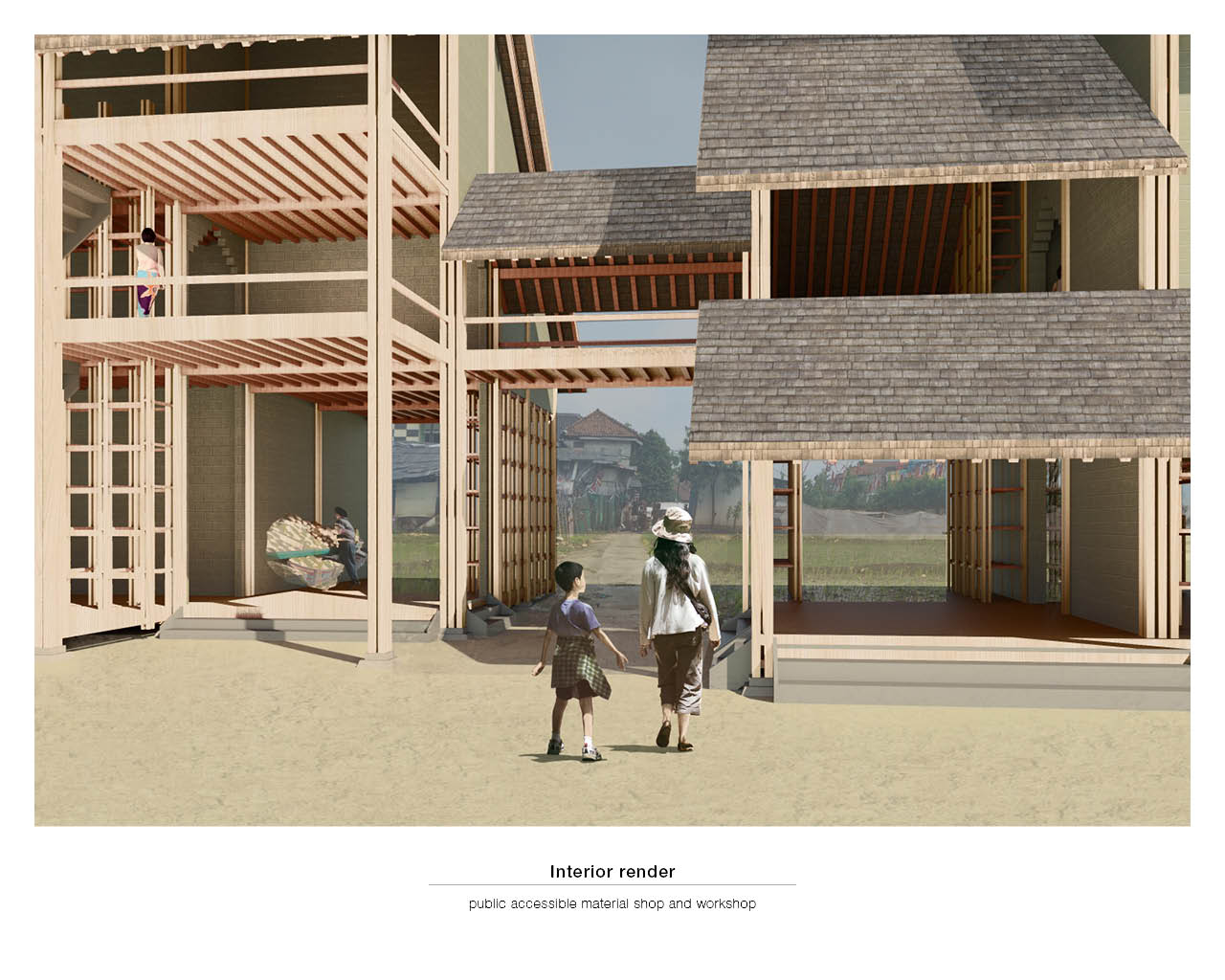
Name / Surname: Josephine Van Empelen
Country:
Team:
Company:
Project Description:
Since 2014 more than half of the worldwide population lives in cities, trend increasing. Especially in developing countries big amounts of people come to cities in search for a better life. Also Indonesia has been experiencing high economic growth and people left the countryside in search for work in factories. This resulted in a big housing shortage; country wide there was a backlog of 11.4 million houses in 2015 and there is an additional need for 800.000 new houses annually. Many urban kampungs have problems with the durability of dwellings, are overcrowded and lack drinking water and sanitation.
This project developed a building system that opts for the use of biobased building materials in support of better structures, less construction- and demolition waste and a healthier living environment. To implement this new building system in practice, there is a factory line integrated in the design proposal. The first room includes a collecting- and sorting plant, followed by a production space, a drying space and a building material shop. To encourage the local community to use the new dry stacking system, the building also includes an educational room where the local community is educated about the use and maintenance of the building system. The on the upper floors established dwellings serve as a prototype for the implementation of the dry stacking system at the construction of dwellings. This project provides the local community with an opportunity to construct better dwellings with minimum resources, offering an economic and ecological alternative to the current building practice. Besides, the project motivates the local community to care more about their environment; its a basis for a circular economy beyond biobased building materials, including water and food.
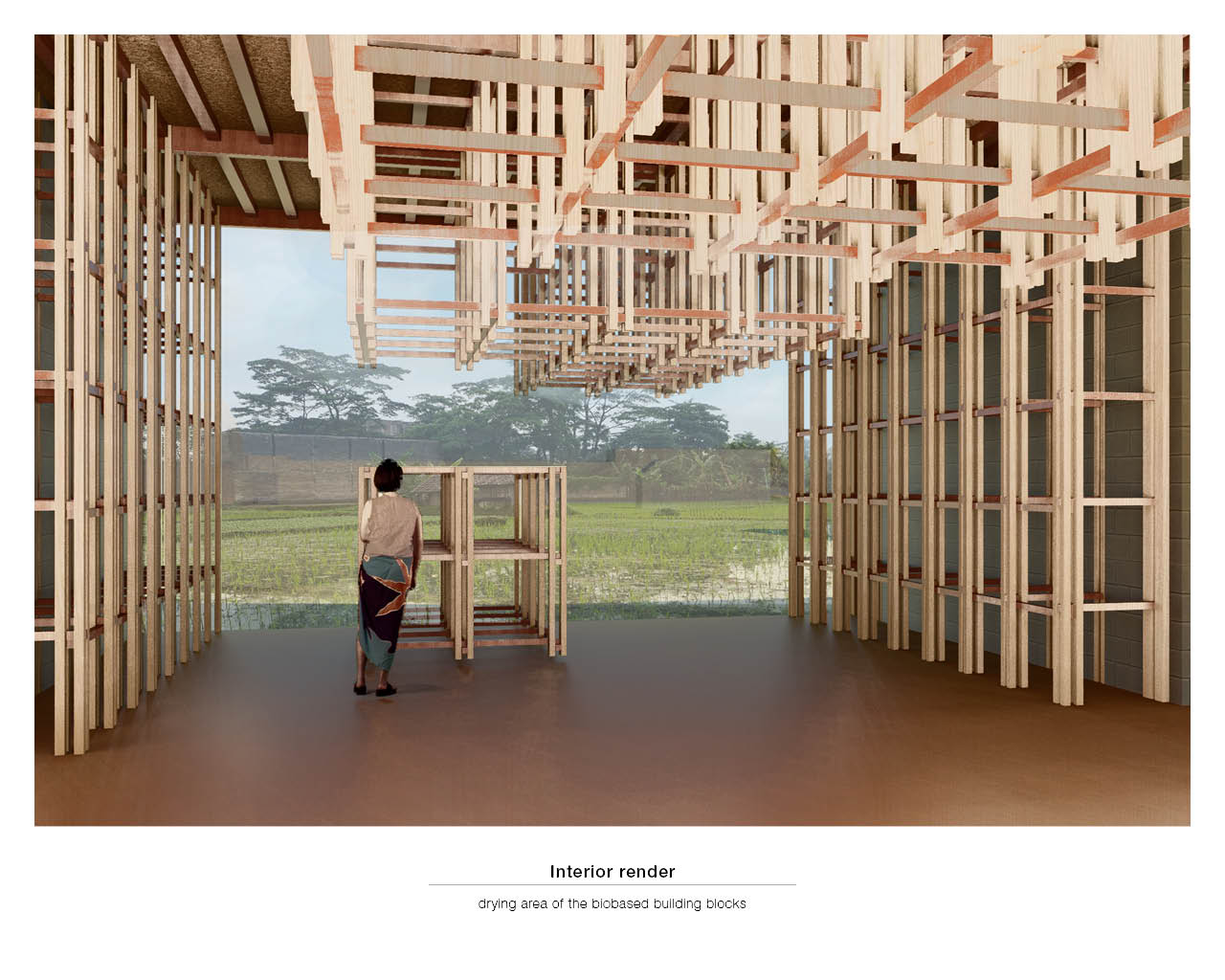
Name / Surname: Josephine Van Empelen
Country:
Team:
Company:
Project Description:
Since 2014 more than half of the worldwide population lives in cities, trend increasing. Especially in developing countries big amounts of people come to cities in search for a better life. Also Indonesia has been experiencing high economic growth and people left the countryside in search for work in factories. This resulted in a big housing shortage; country wide there was a backlog of 11.4 million houses in 2015 and there is an additional need for 800.000 new houses annually. Many urban kampungs have problems with the durability of dwellings, are overcrowded and lack drinking water and sanitation.
This project developed a building system that opts for the use of biobased building materials in support of better structures, less construction- and demolition waste and a healthier living environment. To implement this new building system in practice, there is a factory line integrated in the design proposal. The first room includes a collecting- and sorting plant, followed by a production space, a drying space and a building material shop. To encourage the local community to use the new dry stacking system, the building also includes an educational room where the local community is educated about the use and maintenance of the building system. The on the upper floors established dwellings serve as a prototype for the implementation of the dry stacking system at the construction of dwellings. This project provides the local community with an opportunity to construct better dwellings with minimum resources, offering an economic and ecological alternative to the current building practice. Besides, the project motivates the local community to care more about their environment; its a basis for a circular economy beyond biobased building materials, including water and food.
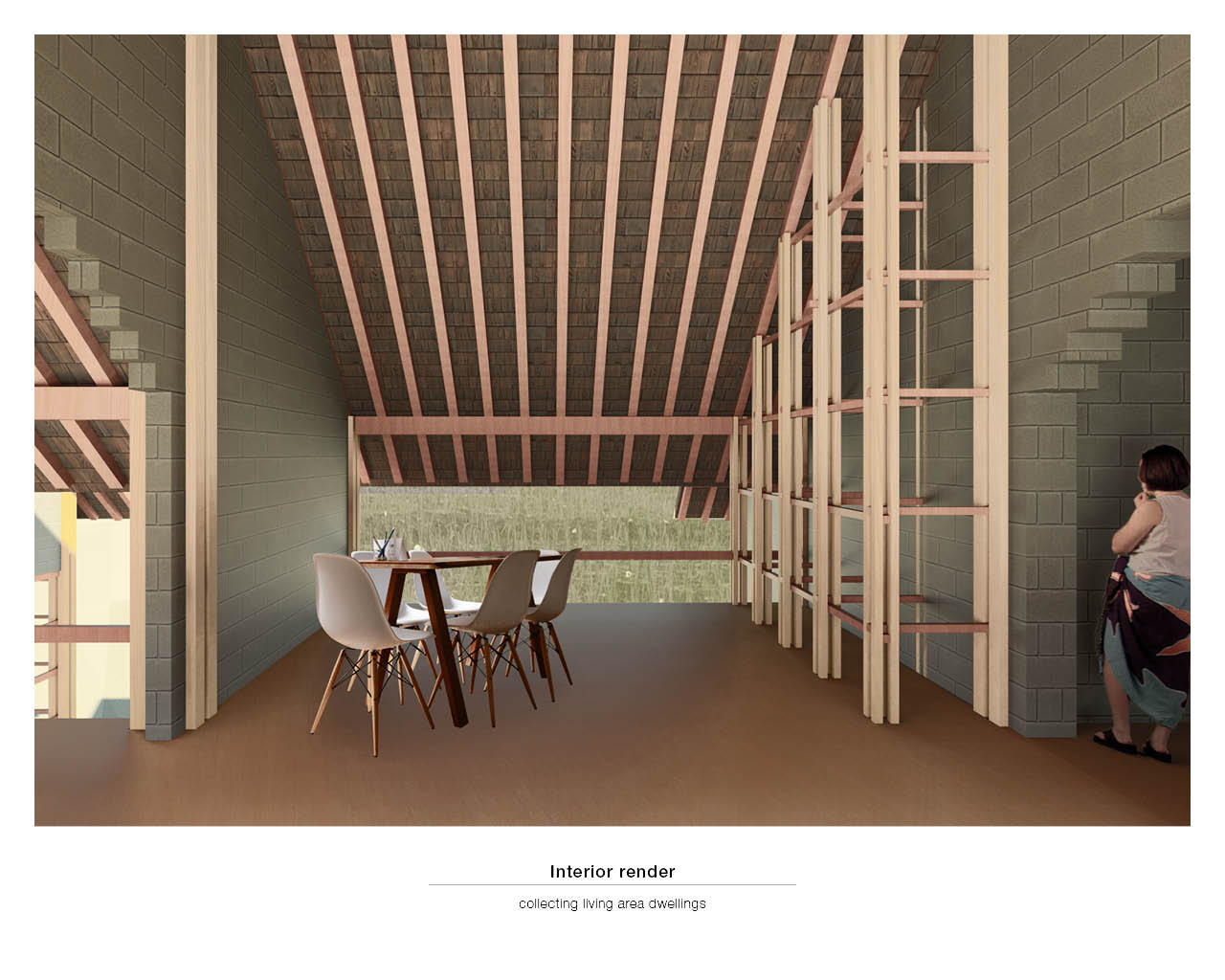
Name / Surname: Josephine Van Empelen
Country:
Team:
Company:
Project Description:
Since 2014 more than half of the worldwide population lives in cities, trend increasing. Especially in developing countries big amounts of people come to cities in search for a better life. Also Indonesia has been experiencing high economic growth and people left the countryside in search for work in factories. This resulted in a big housing shortage; country wide there was a backlog of 11.4 million houses in 2015 and there is an additional need for 800.000 new houses annually. Many urban kampungs have problems with the durability of dwellings, are overcrowded and lack drinking water and sanitation.
This project developed a building system that opts for the use of biobased building materials in support of better structures, less construction- and demolition waste and a healthier living environment. To implement this new building system in practice, there is a factory line integrated in the design proposal. The first room includes a collecting- and sorting plant, followed by a production space, a drying space and a building material shop. To encourage the local community to use the new dry stacking system, the building also includes an educational room where the local community is educated about the use and maintenance of the building system. The on the upper floors established dwellings serve as a prototype for the implementation of the dry stacking system at the construction of dwellings. This project provides the local community with an opportunity to construct better dwellings with minimum resources, offering an economic and ecological alternative to the current building practice. Besides, the project motivates the local community to care more about their environment; its a basis for a circular economy beyond biobased building materials, including water and food.
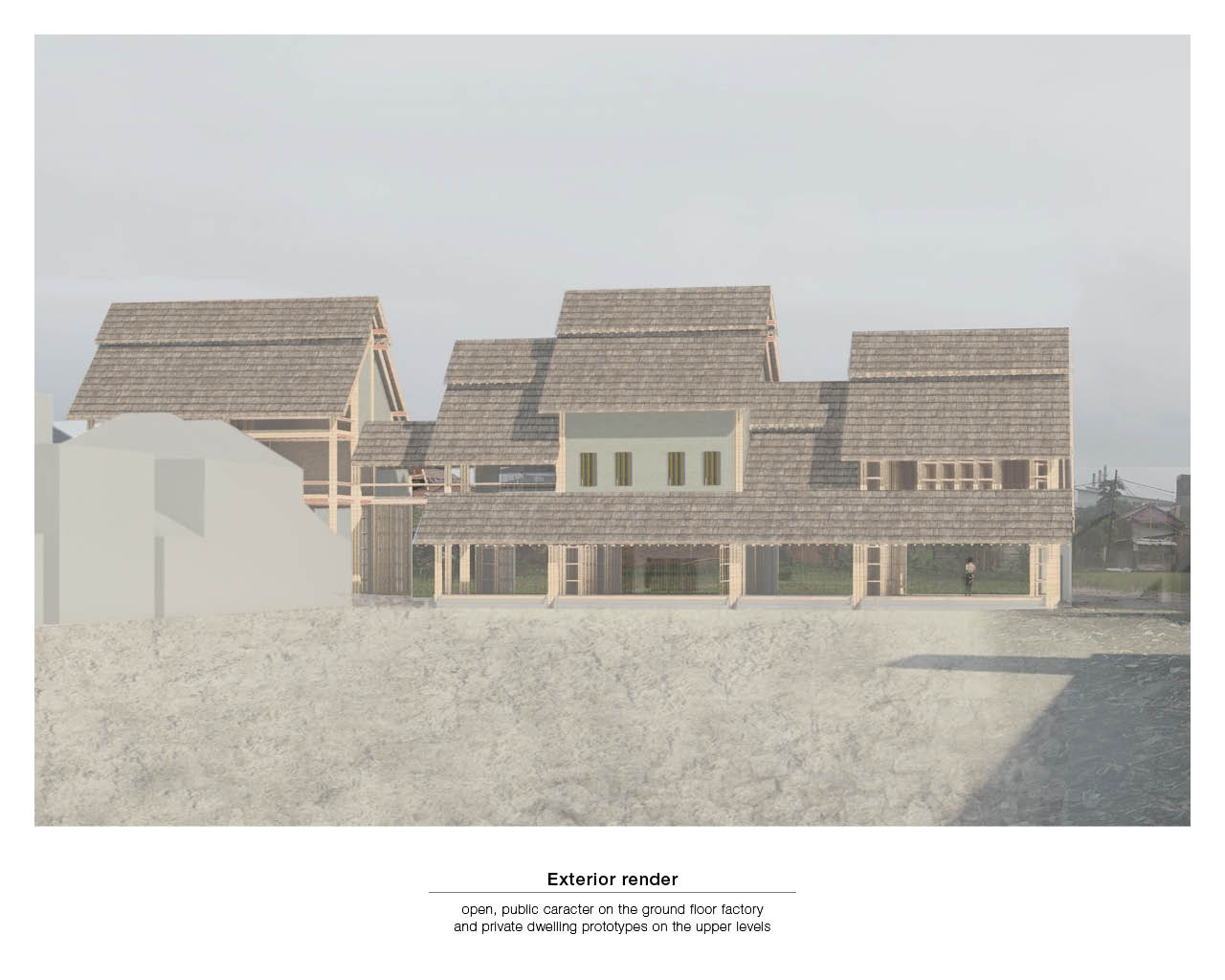
Name / Surname: Josephine Van Empelen
Country:
Team:
Company:
Project Description:
Since 2014 more than half of the worldwide population lives in cities, trend increasing. Especially in developing countries big amounts of people come to cities in search for a better life. Also Indonesia has been experiencing high economic growth and people left the countryside in search for work in factories. This resulted in a big housing shortage; country wide there was a backlog of 11.4 million houses in 2015 and there is an additional need for 800.000 new houses annually. Many urban kampungs have problems with the durability of dwellings, are overcrowded and lack drinking water and sanitation.
This project developed a building system that opts for the use of biobased building materials in support of better structures, less construction- and demolition waste and a healthier living environment. To implement this new building system in practice, there is a factory line integrated in the design proposal. The first room includes a collecting- and sorting plant, followed by a production space, a drying space and a building material shop. To encourage the local community to use the new dry stacking system, the building also includes an educational room where the local community is educated about the use and maintenance of the building system. The on the upper floors established dwellings serve as a prototype for the implementation of the dry stacking system at the construction of dwellings. This project provides the local community with an opportunity to construct better dwellings with minimum resources, offering an economic and ecological alternative to the current building practice. Besides, the project motivates the local community to care more about their environment; its a basis for a circular economy beyond biobased building materials, including water and food.
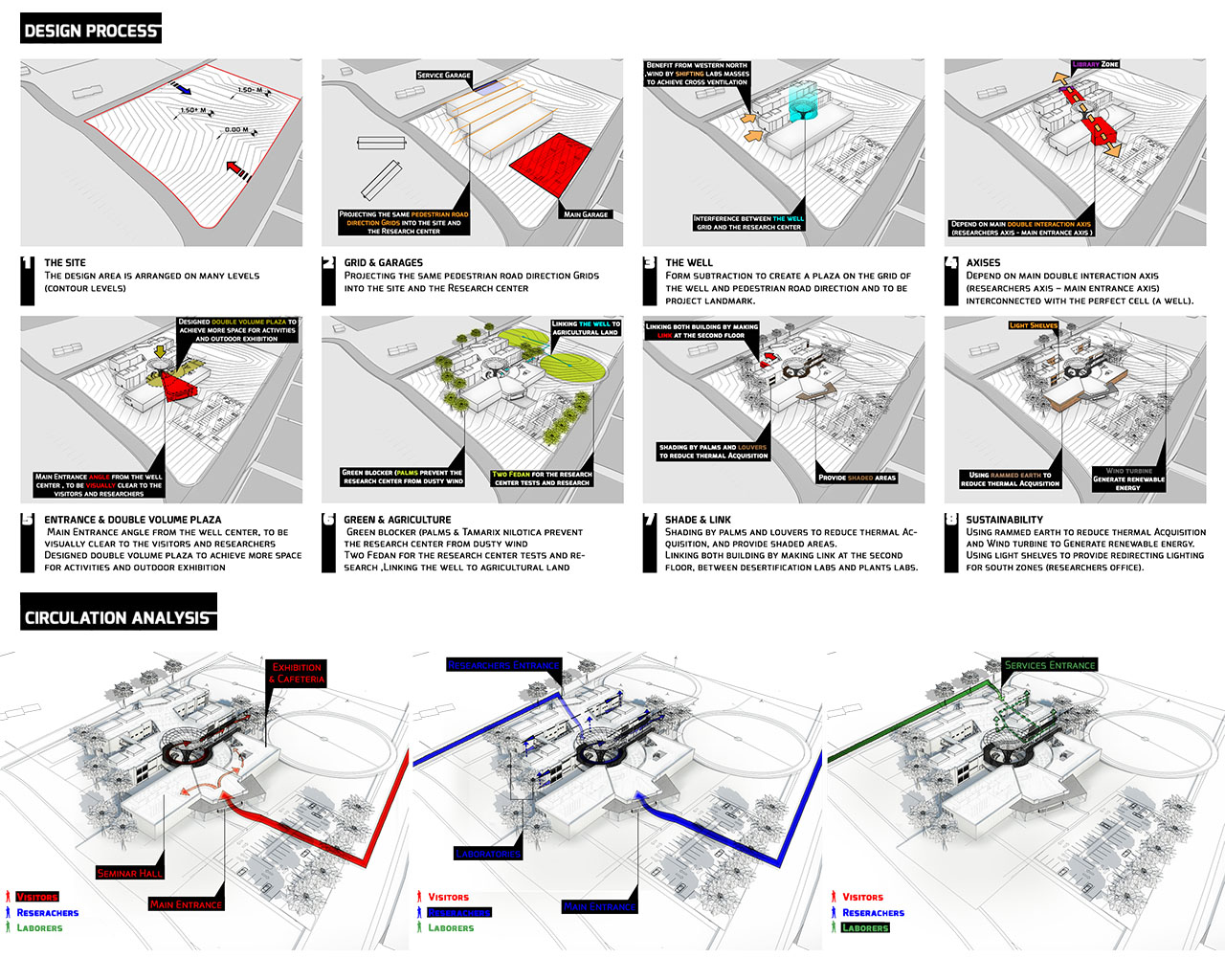
Name / Surname: Aasr Ahmed
Country:
Team:
Company: ECG
Project Description:
Location: Baharyia oasis, Egypt
Area: 5200 m2
Graduation Project (2017)
- Main concept: Depends on Triple interaction axis’s, (Human – Sustainability – Vision) Interconnected with The Well, by converting the research center to an effective area (On the environmental, economic, prospective, research and social level) for Baharyia oasis and this regional area.
1- Interaction between researchers and (labs, greenhouse and green areas) to. Establish the ecological Community, and another interaction between visitors and (Entertainment areas and urban design) to achieve loyal to visitors.
2- Environment interaction between the research center and the desert to achieve sustainability.
3- Interaction between the research center and baharyia oasis to achieve the future agricultural development (Perfect Cell Vision)
- The design connects a strategic approach for the establishment of a community with the organic urban farming operation, cultivating agriculture and productive landscape value to serve as a community resource and economic development opportunities in a dry land.
- Vision:
The Eco-community will be a combination of a family consumption farming, a recreational community productive foods, It investigated the productive and learning potential of work across Disciplines, and interact over issues such as site design, site Ecology and their relationships. The design is to propose a strategy for the establishment of a community including the wells and the water mitigation catchment, cultivating agriculture and productive landscape value in a dry land based on the cultural form, historic and cultural landscapes, conservation and Sustainable development
Create a neighborhood farming and Recreational micro-moisture Park from grey water system and Center Pivot irrigation system.
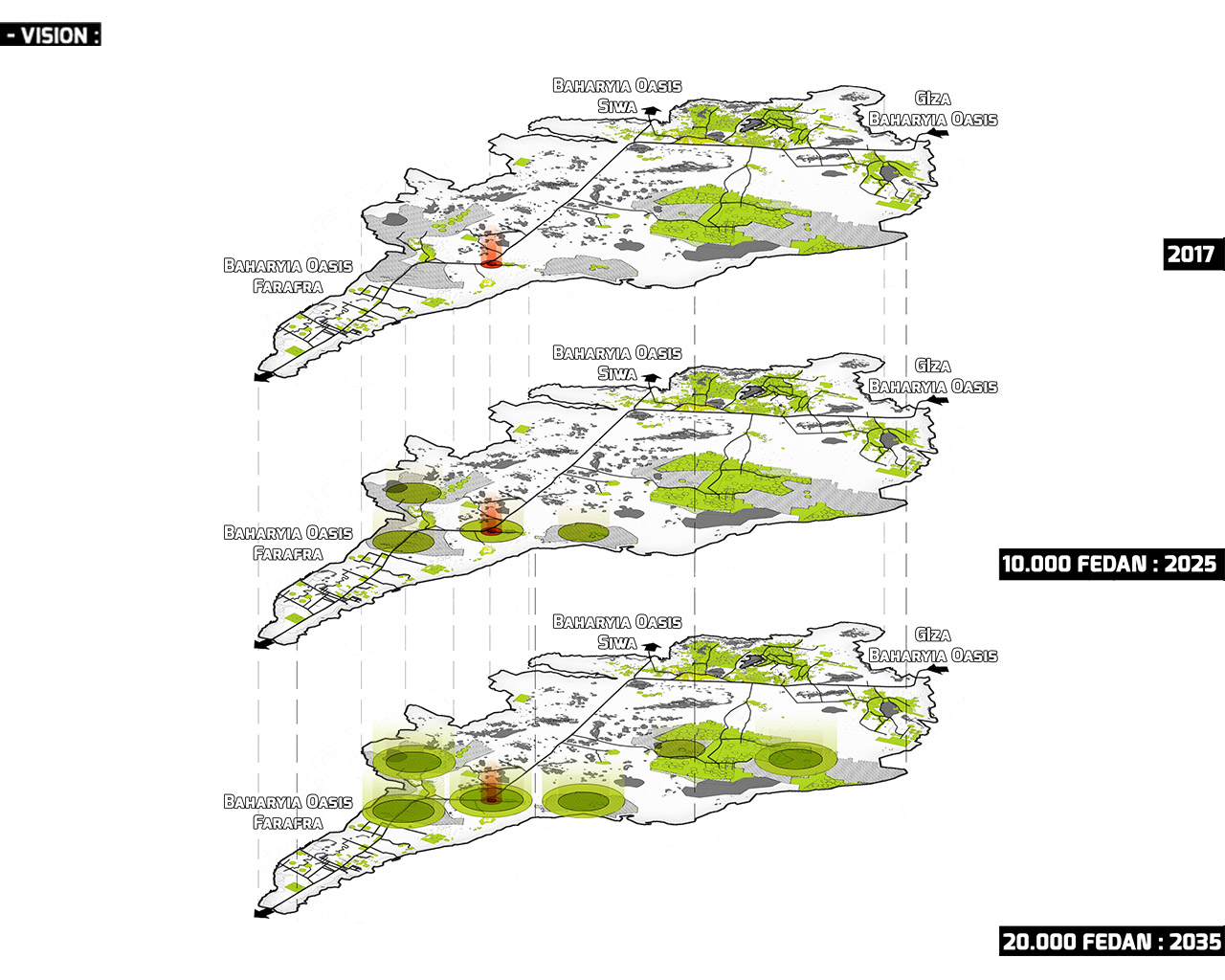
Name / Surname: Aasr Ahmed
Country:
Team:
Company: ECG
Project Description:
Location: Baharyia oasis, Egypt
Area: 5200 m2
Graduation Project (2017)
- Main concept: Depends on Triple interaction axis’s, (Human – Sustainability – Vision) Interconnected with The Well, by converting the research center to an effective area (On the environmental, economic, prospective, research and social level) for Baharyia oasis and this regional area.
1- Interaction between researchers and (labs, greenhouse and green areas) to. Establish the ecological Community, and another interaction between visitors and (Entertainment areas and urban design) to achieve loyal to visitors.
2- Environment interaction between the research center and the desert to achieve sustainability.
3- Interaction between the research center and baharyia oasis to achieve the future agricultural development (Perfect Cell Vision)
- The design connects a strategic approach for the establishment of a community with the organic urban farming operation, cultivating agriculture and productive landscape value to serve as a community resource and economic development opportunities in a dry land.
- Vision:
The Eco-community will be a combination of a family consumption farming, a recreational community productive foods, It investigated the productive and learning potential of work across Disciplines, and interact over issues such as site design, site Ecology and their relationships. The design is to propose a strategy for the establishment of a community including the wells and the water mitigation catchment, cultivating agriculture and productive landscape value in a dry land based on the cultural form, historic and cultural landscapes, conservation and Sustainable development
Create a neighborhood farming and Recreational micro-moisture Park from grey water system and Center Pivot irrigation system.
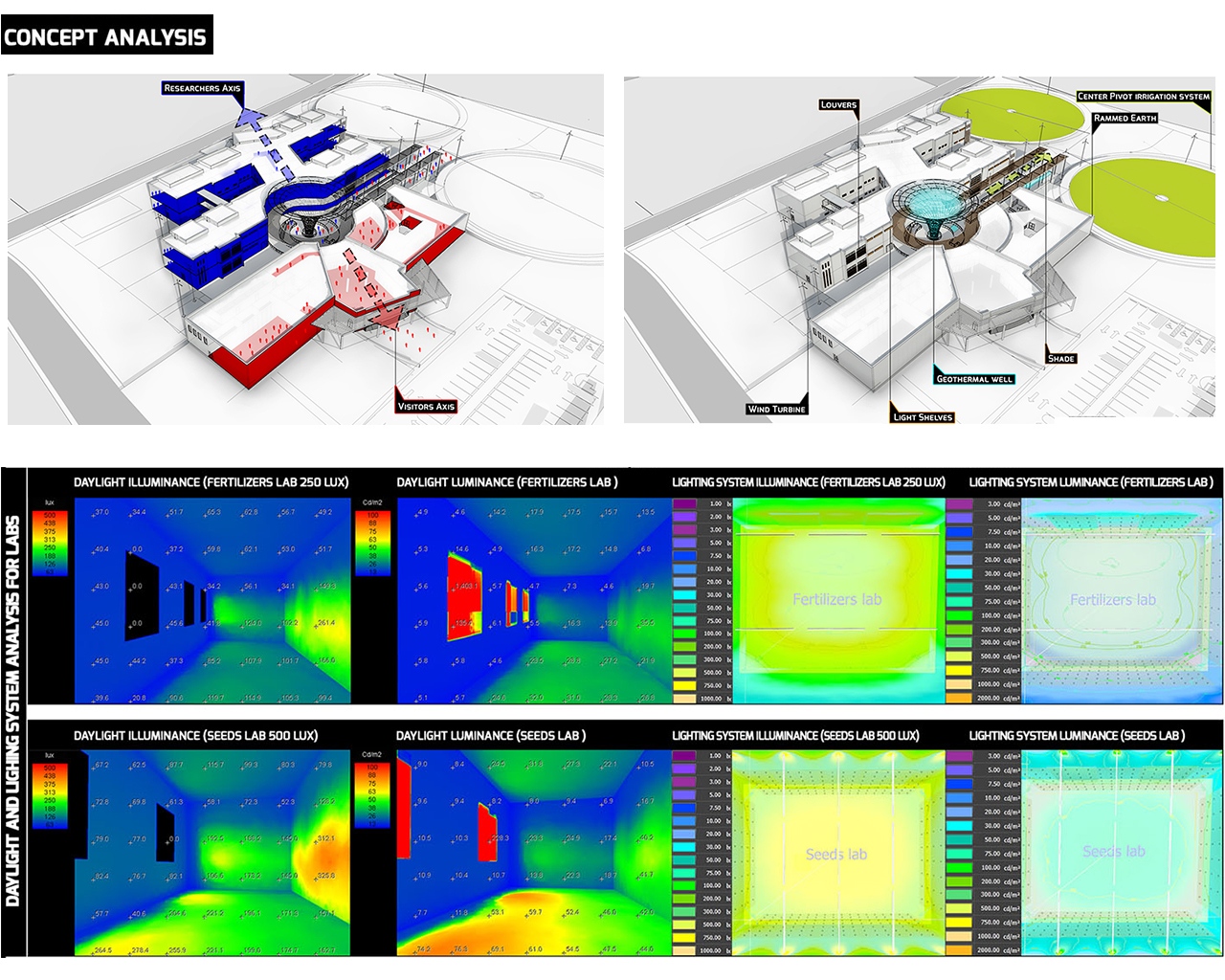
Name / Surname: Aasr Ahmed
Country:
Team:
Company: ECG
Project Description:
Location: Baharyia oasis, Egypt
Area: 5200 m2
Graduation Project (2017)
- Main concept: Depends on Triple interaction axis’s, (Human – Sustainability – Vision) Interconnected with The Well, by converting the research center to an effective area (On the environmental, economic, prospective, research and social level) for Baharyia oasis and this regional area.
1- Interaction between researchers and (labs, greenhouse and green areas) to. Establish the ecological Community, and another interaction between visitors and (Entertainment areas and urban design) to achieve loyal to visitors.
2- Environment interaction between the research center and the desert to achieve sustainability.
3- Interaction between the research center and baharyia oasis to achieve the future agricultural development (Perfect Cell Vision)
- The design connects a strategic approach for the establishment of a community with the organic urban farming operation, cultivating agriculture and productive landscape value to serve as a community resource and economic development opportunities in a dry land.
- Vision:
The Eco-community will be a combination of a family consumption farming, a recreational community productive foods, It investigated the productive and learning potential of work across Disciplines, and interact over issues such as site design, site Ecology and their relationships. The design is to propose a strategy for the establishment of a community including the wells and the water mitigation catchment, cultivating agriculture and productive landscape value in a dry land based on the cultural form, historic and cultural landscapes, conservation and Sustainable development
Create a neighborhood farming and Recreational micro-moisture Park from grey water system and Center Pivot irrigation system.
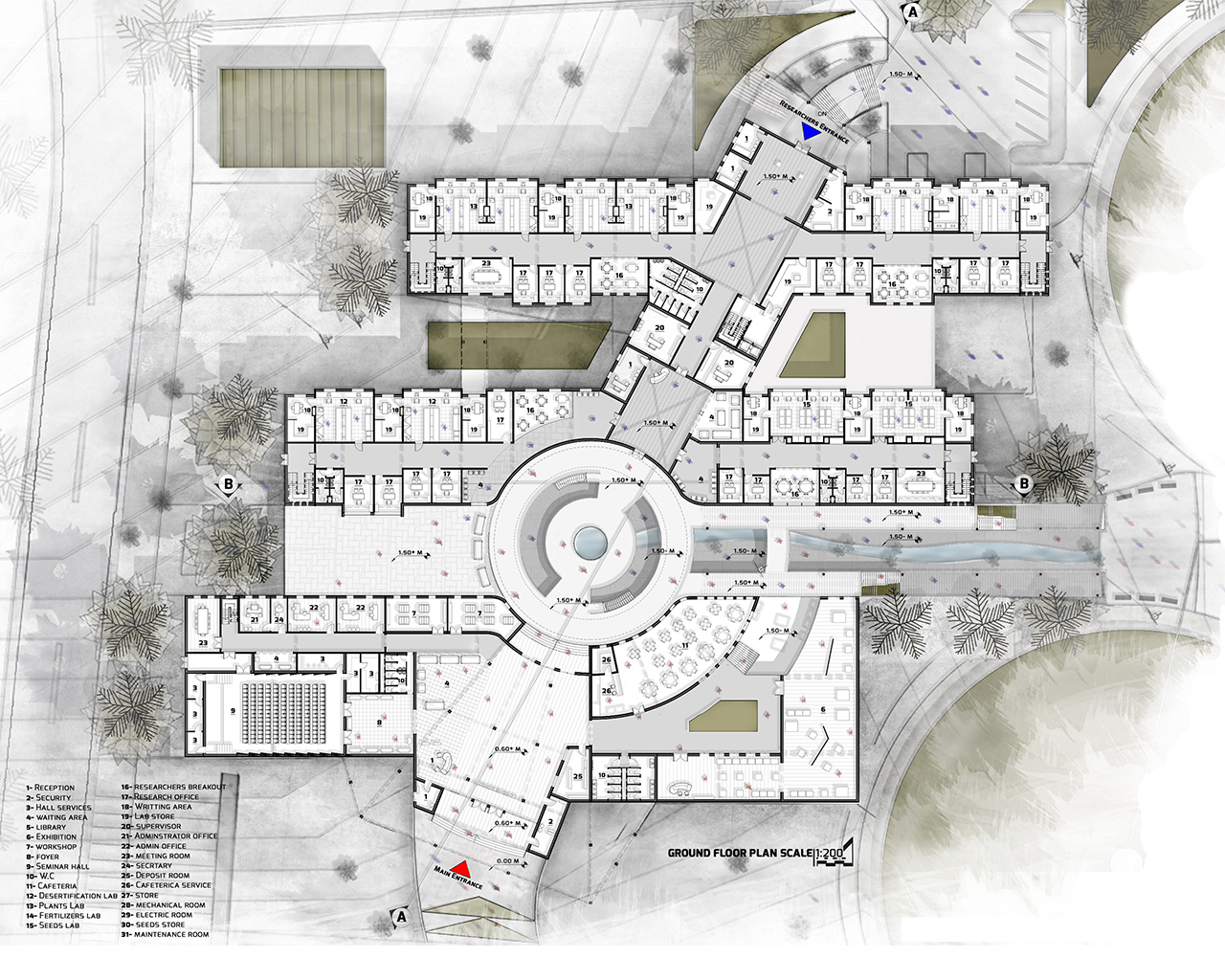
Name / Surname: Aasr Ahmed
Country:
Team:
Company: ECG
Project Description:
Location: Baharyia oasis, Egypt
Area: 5200 m2
Graduation Project (2017)
- Main concept: Depends on Triple interaction axis’s, (Human – Sustainability – Vision) Interconnected with The Well, by converting the research center to an effective area (On the environmental, economic, prospective, research and social level) for Baharyia oasis and this regional area.
1- Interaction between researchers and (labs, greenhouse and green areas) to. Establish the ecological Community, and another interaction between visitors and (Entertainment areas and urban design) to achieve loyal to visitors.
2- Environment interaction between the research center and the desert to achieve sustainability.
3- Interaction between the research center and baharyia oasis to achieve the future agricultural development (Perfect Cell Vision)
- The design connects a strategic approach for the establishment of a community with the organic urban farming operation, cultivating agriculture and productive landscape value to serve as a community resource and economic development opportunities in a dry land.
- Vision:
The Eco-community will be a combination of a family consumption farming, a recreational community productive foods, It investigated the productive and learning potential of work across Disciplines, and interact over issues such as site design, site Ecology and their relationships. The design is to propose a strategy for the establishment of a community including the wells and the water mitigation catchment, cultivating agriculture and productive landscape value in a dry land based on the cultural form, historic and cultural landscapes, conservation and Sustainable development
Create a neighborhood farming and Recreational micro-moisture Park from grey water system and Center Pivot irrigation system.
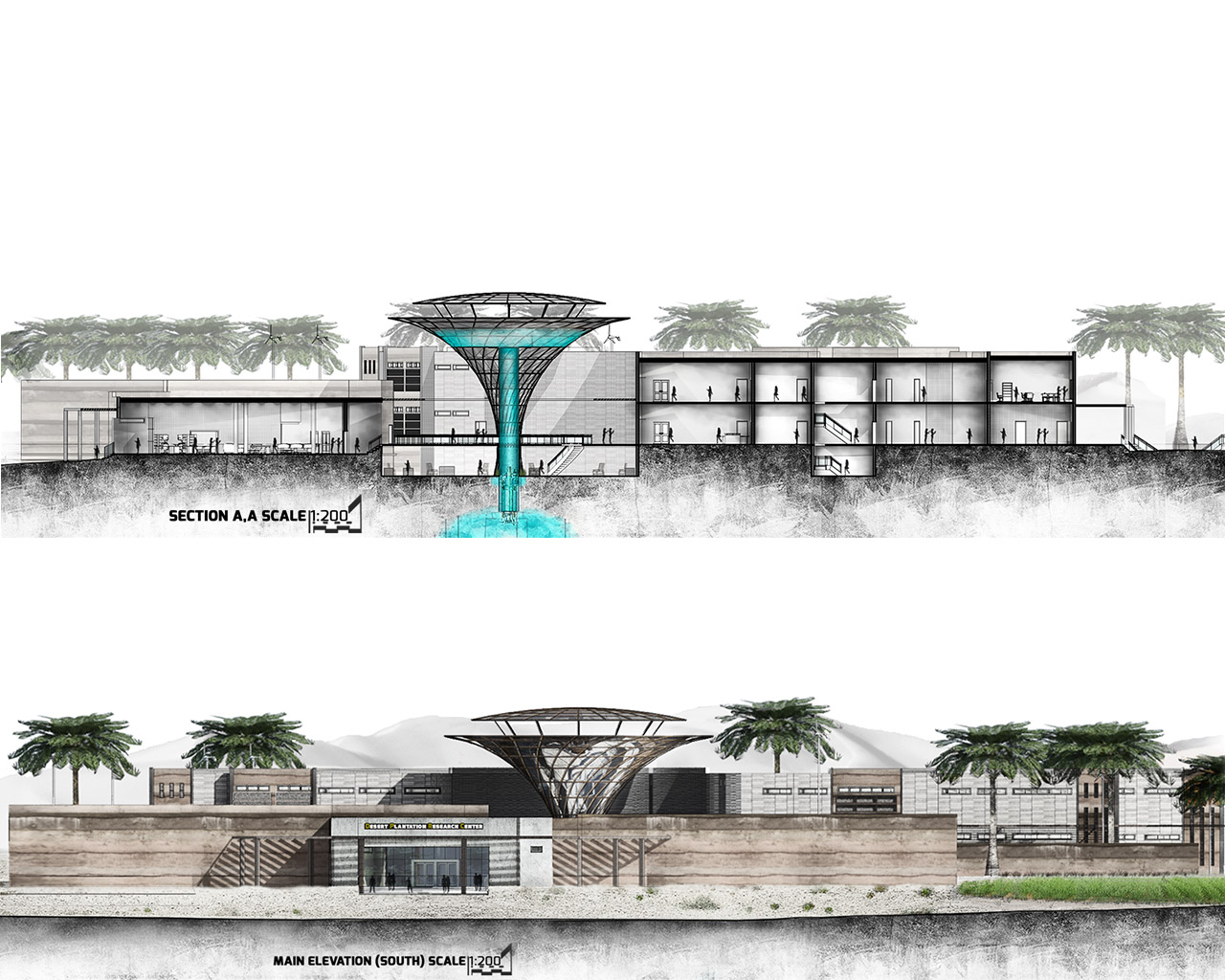
Name / Surname: Aasr Ahmed
Country:
Team:
Company: ECG
Project Description:
Location: Baharyia oasis, Egypt
Area: 5200 m2
Graduation Project (2017)
- Main concept: Depends on Triple interaction axis’s, (Human – Sustainability – Vision) Interconnected with The Well, by converting the research center to an effective area (On the environmental, economic, prospective, research and social level) for Baharyia oasis and this regional area.
1- Interaction between researchers and (labs, greenhouse and green areas) to. Establish the ecological Community, and another interaction between visitors and (Entertainment areas and urban design) to achieve loyal to visitors.
2- Environment interaction between the research center and the desert to achieve sustainability.
3- Interaction between the research center and baharyia oasis to achieve the future agricultural development (Perfect Cell Vision)
- The design connects a strategic approach for the establishment of a community with the organic urban farming operation, cultivating agriculture and productive landscape value to serve as a community resource and economic development opportunities in a dry land.
- Vision:
The Eco-community will be a combination of a family consumption farming, a recreational community productive foods, It investigated the productive and learning potential of work across Disciplines, and interact over issues such as site design, site Ecology and their relationships. The design is to propose a strategy for the establishment of a community including the wells and the water mitigation catchment, cultivating agriculture and productive landscape value in a dry land based on the cultural form, historic and cultural landscapes, conservation and Sustainable development
Create a neighborhood farming and Recreational micro-moisture Park from grey water system and Center Pivot irrigation system.
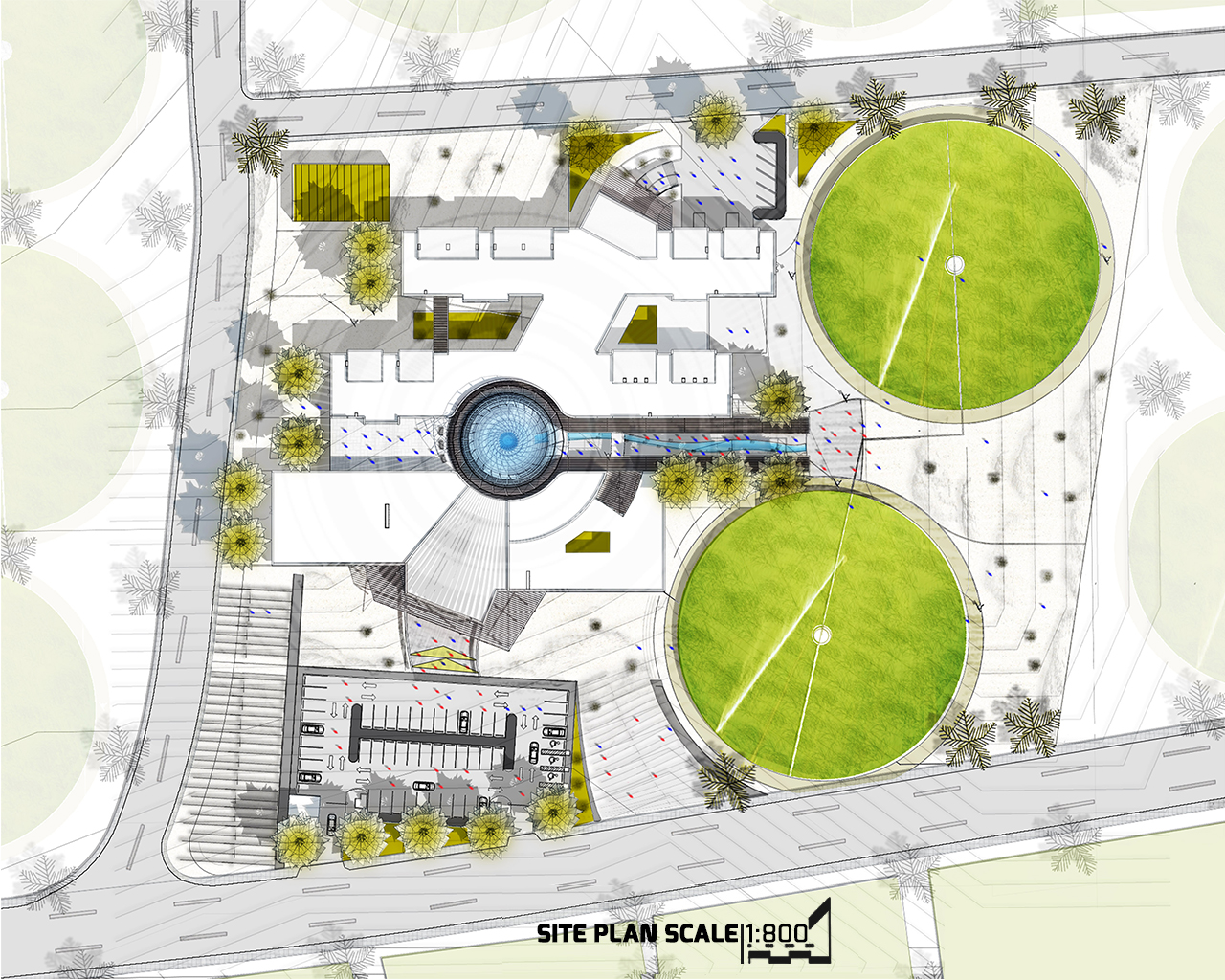
Name / Surname: Aasr Ahmed
Country:
Team:
Company: ECG
Project Description:
Location: Baharyia oasis, Egypt
Area: 5200 m2
Graduation Project (2017)
- Main concept: Depends on Triple interaction axis’s, (Human – Sustainability – Vision) Interconnected with The Well, by converting the research center to an effective area (On the environmental, economic, prospective, research and social level) for Baharyia oasis and this regional area.
1- Interaction between researchers and (labs, greenhouse and green areas) to. Establish the ecological Community, and another interaction between visitors and (Entertainment areas and urban design) to achieve loyal to visitors.
2- Environment interaction between the research center and the desert to achieve sustainability.
3- Interaction between the research center and baharyia oasis to achieve the future agricultural development (Perfect Cell Vision)
- The design connects a strategic approach for the establishment of a community with the organic urban farming operation, cultivating agriculture and productive landscape value to serve as a community resource and economic development opportunities in a dry land.
- Vision:
The Eco-community will be a combination of a family consumption farming, a recreational community productive foods, It investigated the productive and learning potential of work across Disciplines, and interact over issues such as site design, site Ecology and their relationships. The design is to propose a strategy for the establishment of a community including the wells and the water mitigation catchment, cultivating agriculture and productive landscape value in a dry land based on the cultural form, historic and cultural landscapes, conservation and Sustainable development
Create a neighborhood farming and Recreational micro-moisture Park from grey water system and Center Pivot irrigation system.
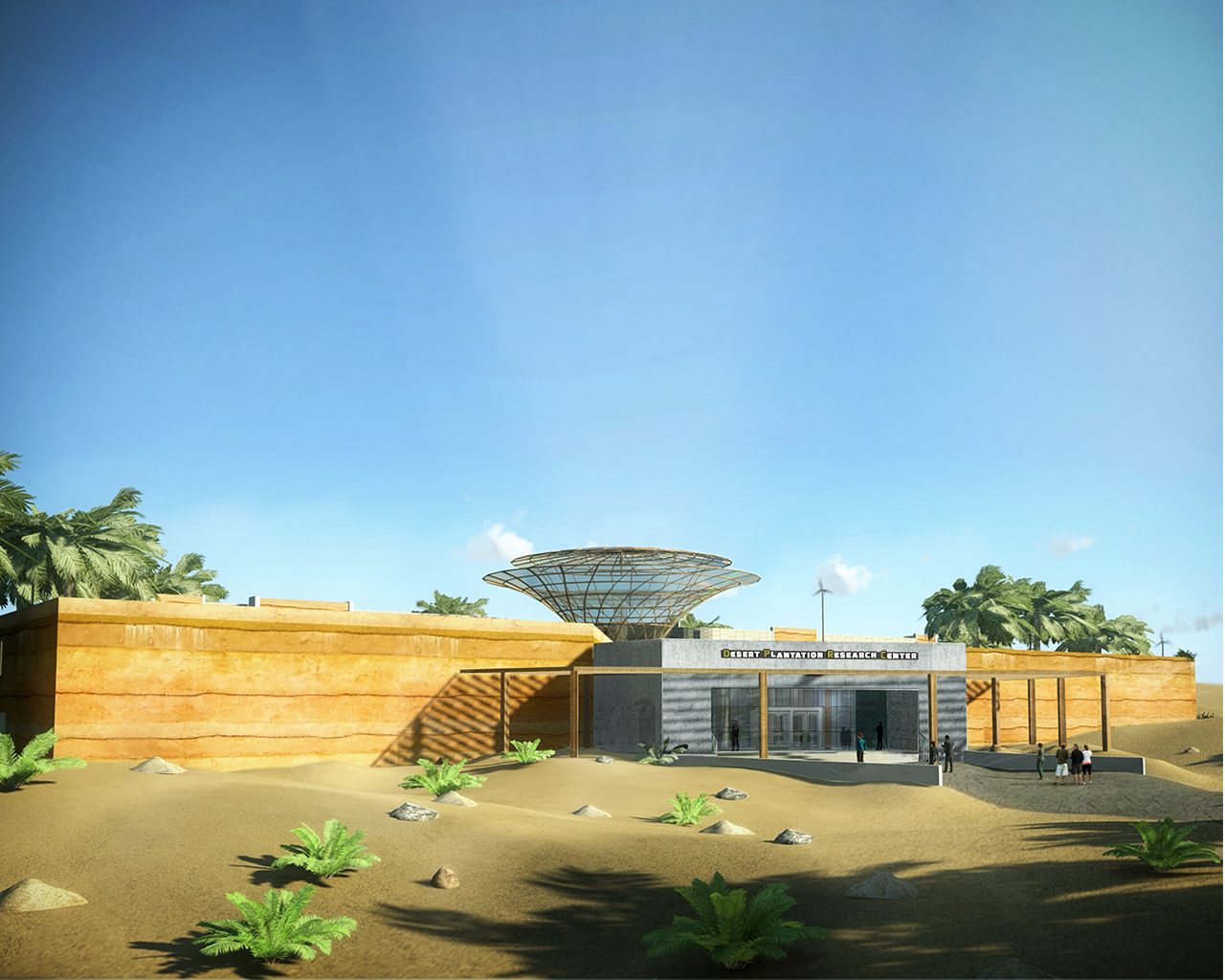
Name / Surname: Aasr Ahmed
Country:
Team:
Company: ECG
Project Description:
Location: Baharyia oasis, Egypt
Area: 5200 m2
Graduation Project (2017)
- Main concept: Depends on Triple interaction axis’s, (Human – Sustainability – Vision) Interconnected with The Well, by converting the research center to an effective area (On the environmental, economic, prospective, research and social level) for Baharyia oasis and this regional area.
1- Interaction between researchers and (labs, greenhouse and green areas) to. Establish the ecological Community, and another interaction between visitors and (Entertainment areas and urban design) to achieve loyal to visitors.
2- Environment interaction between the research center and the desert to achieve sustainability.
3- Interaction between the research center and baharyia oasis to achieve the future agricultural development (Perfect Cell Vision)
- The design connects a strategic approach for the establishment of a community with the organic urban farming operation, cultivating agriculture and productive landscape value to serve as a community resource and economic development opportunities in a dry land.
- Vision:
The Eco-community will be a combination of a family consumption farming, a recreational community productive foods, It investigated the productive and learning potential of work across Disciplines, and interact over issues such as site design, site Ecology and their relationships. The design is to propose a strategy for the establishment of a community including the wells and the water mitigation catchment, cultivating agriculture and productive landscape value in a dry land based on the cultural form, historic and cultural landscapes, conservation and Sustainable development
Create a neighborhood farming and Recreational micro-moisture Park from grey water system and Center Pivot irrigation system.
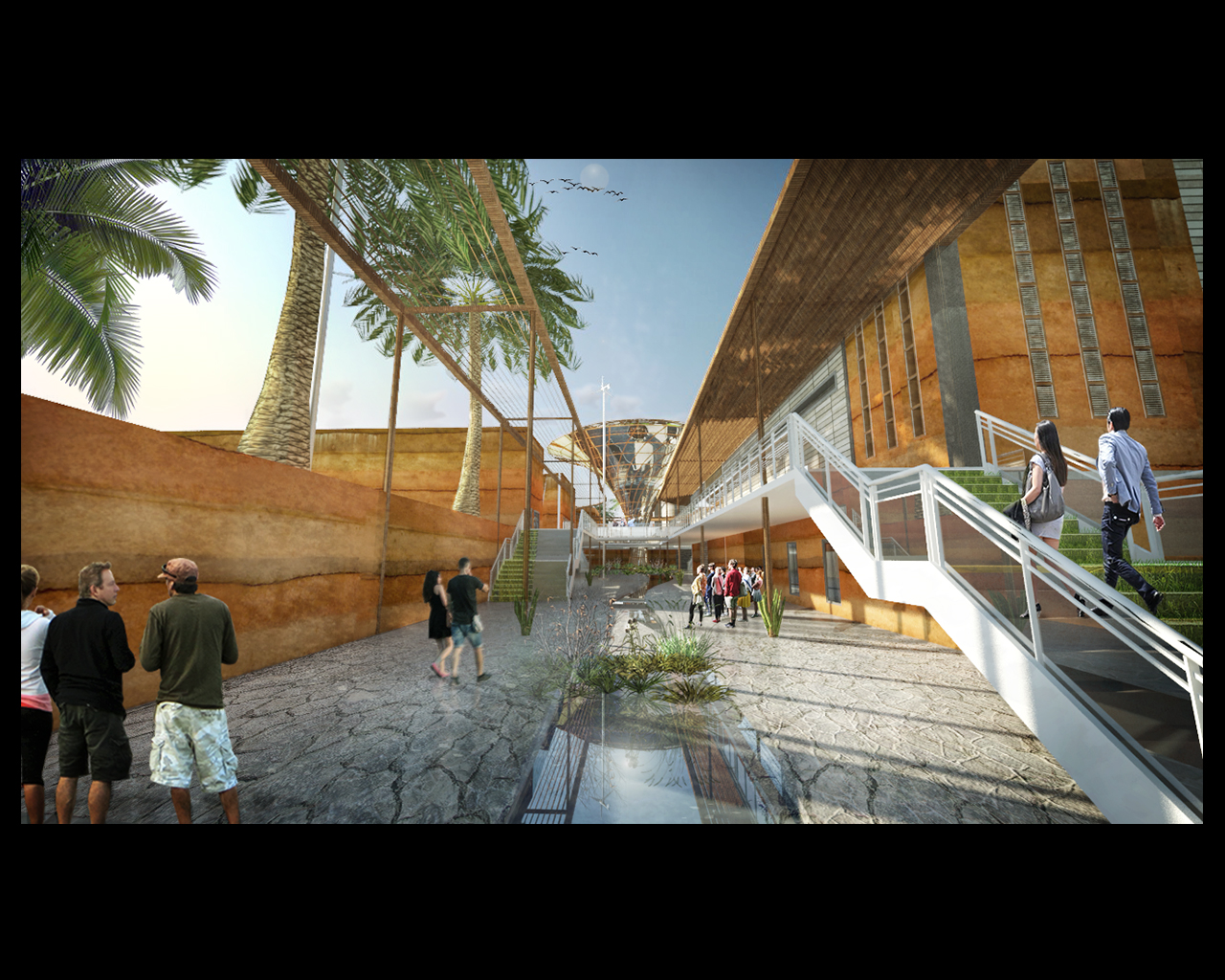
Name / Surname: Aasr Ahmed
Country:
Team:
Company: ECG
Project Description:
Location: Baharyia oasis, Egypt
Area: 5200 m2
Graduation Project (2017)
- Main concept: Depends on Triple interaction axis’s, (Human – Sustainability – Vision) Interconnected with The Well, by converting the research center to an effective area (On the environmental, economic, prospective, research and social level) for Baharyia oasis and this regional area.
1- Interaction between researchers and (labs, greenhouse and green areas) to. Establish the ecological Community, and another interaction between visitors and (Entertainment areas and urban design) to achieve loyal to visitors.
2- Environment interaction between the research center and the desert to achieve sustainability.
3- Interaction between the research center and baharyia oasis to achieve the future agricultural development (Perfect Cell Vision)
- The design connects a strategic approach for the establishment of a community with the organic urban farming operation, cultivating agriculture and productive landscape value to serve as a community resource and economic development opportunities in a dry land.
- Vision:
The Eco-community will be a combination of a family consumption farming, a recreational community productive foods, It investigated the productive and learning potential of work across Disciplines, and interact over issues such as site design, site Ecology and their relationships. The design is to propose a strategy for the establishment of a community including the wells and the water mitigation catchment, cultivating agriculture and productive landscape value in a dry land based on the cultural form, historic and cultural landscapes, conservation and Sustainable development
Create a neighborhood farming and Recreational micro-moisture Park from grey water system and Center Pivot irrigation system.
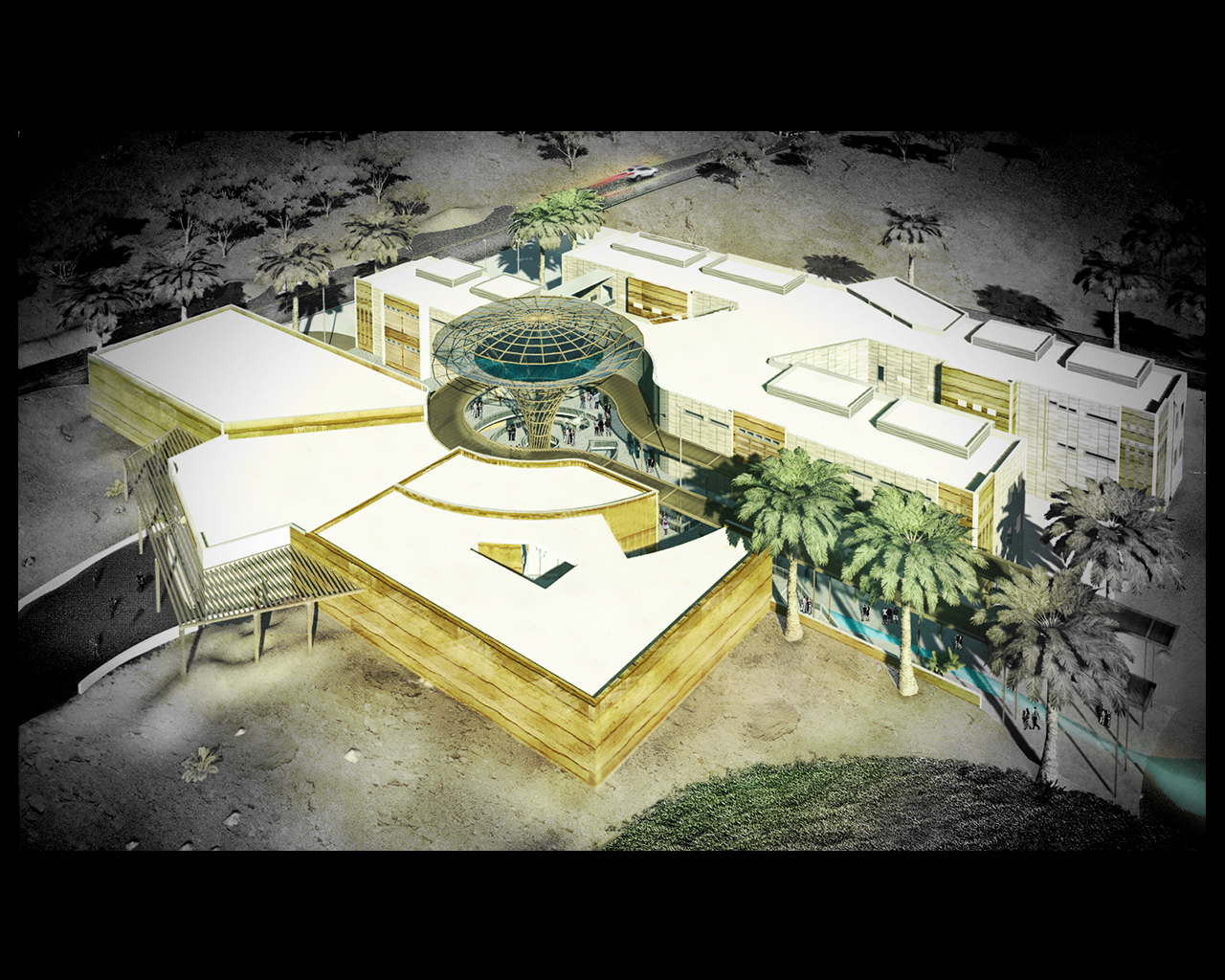
Name / Surname: Aasr Ahmed
Country:
Team:
Company: ECG
Project Description:
Location: Baharyia oasis, Egypt
Area: 5200 m2
Graduation Project (2017)
- Main concept: Depends on Triple interaction axis’s, (Human – Sustainability – Vision) Interconnected with The Well, by converting the research center to an effective area (On the environmental, economic, prospective, research and social level) for Baharyia oasis and this regional area.
1- Interaction between researchers and (labs, greenhouse and green areas) to. Establish the ecological Community, and another interaction between visitors and (Entertainment areas and urban design) to achieve loyal to visitors.
2- Environment interaction between the research center and the desert to achieve sustainability.
3- Interaction between the research center and baharyia oasis to achieve the future agricultural development (Perfect Cell Vision)
- The design connects a strategic approach for the establishment of a community with the organic urban farming operation, cultivating agriculture and productive landscape value to serve as a community resource and economic development opportunities in a dry land.
- Vision:
The Eco-community will be a combination of a family consumption farming, a recreational community productive foods, It investigated the productive and learning potential of work across Disciplines, and interact over issues such as site design, site Ecology and their relationships. The design is to propose a strategy for the establishment of a community including the wells and the water mitigation catchment, cultivating agriculture and productive landscape value in a dry land based on the cultural form, historic and cultural landscapes, conservation and Sustainable development
Create a neighborhood farming and Recreational micro-moisture Park from grey water system and Center Pivot irrigation system.
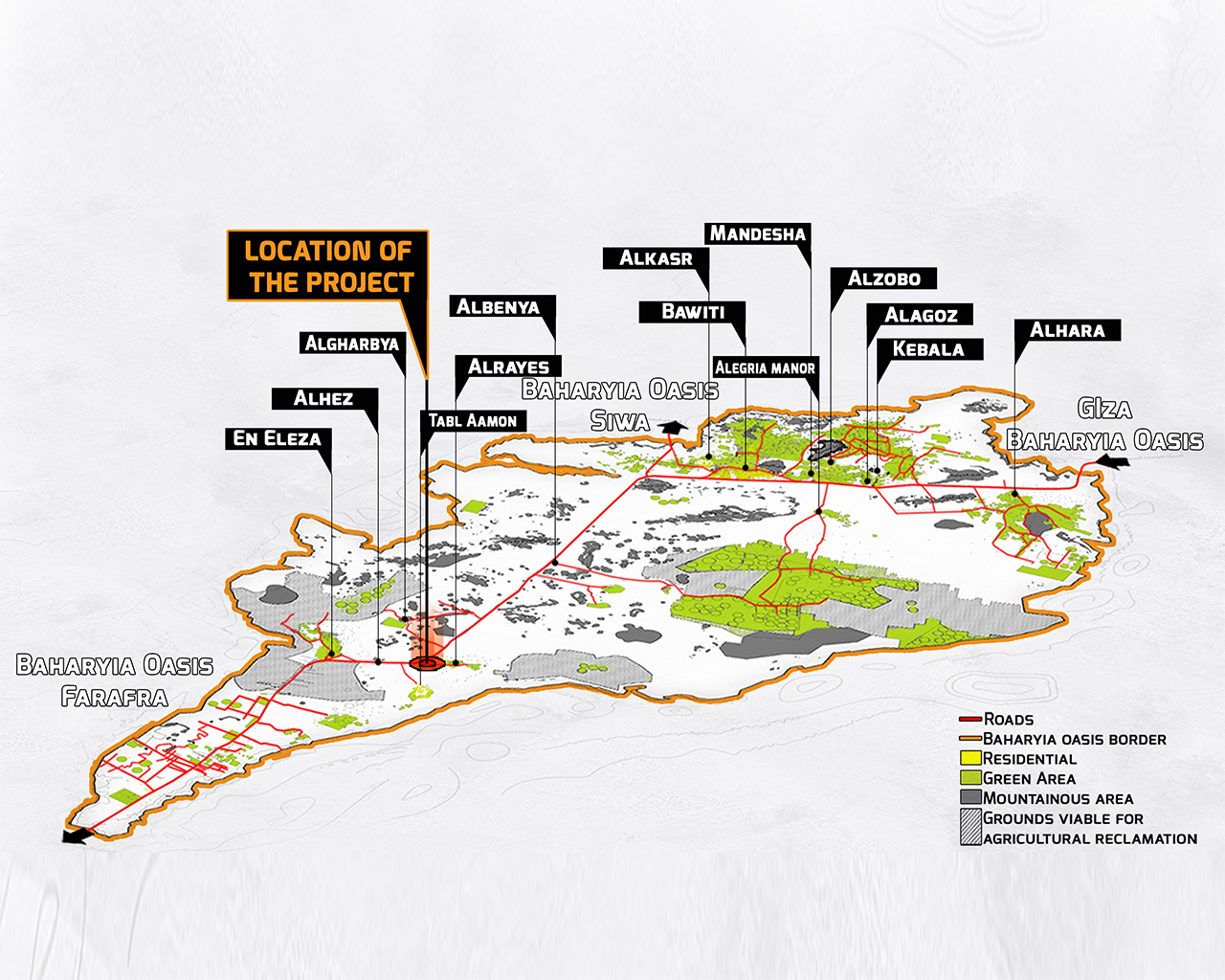
Name / Surname: Aasr Ahmed
Country:
Team:
Company: ECG
Project Description:
Location: Baharyia oasis, Egypt
Area: 5200 m2
Graduation Project (2017)
- Main concept: Depends on Triple interaction axis’s, (Human – Sustainability – Vision) Interconnected with The Well, by converting the research center to an effective area (On the environmental, economic, prospective, research and social level) for Baharyia oasis and this regional area.
1- Interaction between researchers and (labs, greenhouse and green areas) to. Establish the ecological Community, and another interaction between visitors and (Entertainment areas and urban design) to achieve loyal to visitors.
2- Environment interaction between the research center and the desert to achieve sustainability.
3- Interaction between the research center and baharyia oasis to achieve the future agricultural development (Perfect Cell Vision)
- The design connects a strategic approach for the establishment of a community with the organic urban farming operation, cultivating agriculture and productive landscape value to serve as a community resource and economic development opportunities in a dry land.
- Vision:
The Eco-community will be a combination of a family consumption farming, a recreational community productive foods, It investigated the productive and learning potential of work across Disciplines, and interact over issues such as site design, site Ecology and their relationships. The design is to propose a strategy for the establishment of a community including the wells and the water mitigation catchment, cultivating agriculture and productive landscape value in a dry land based on the cultural form, historic and cultural landscapes, conservation and Sustainable development
Create a neighborhood farming and Recreational micro-moisture Park from grey water system and Center Pivot irrigation system.
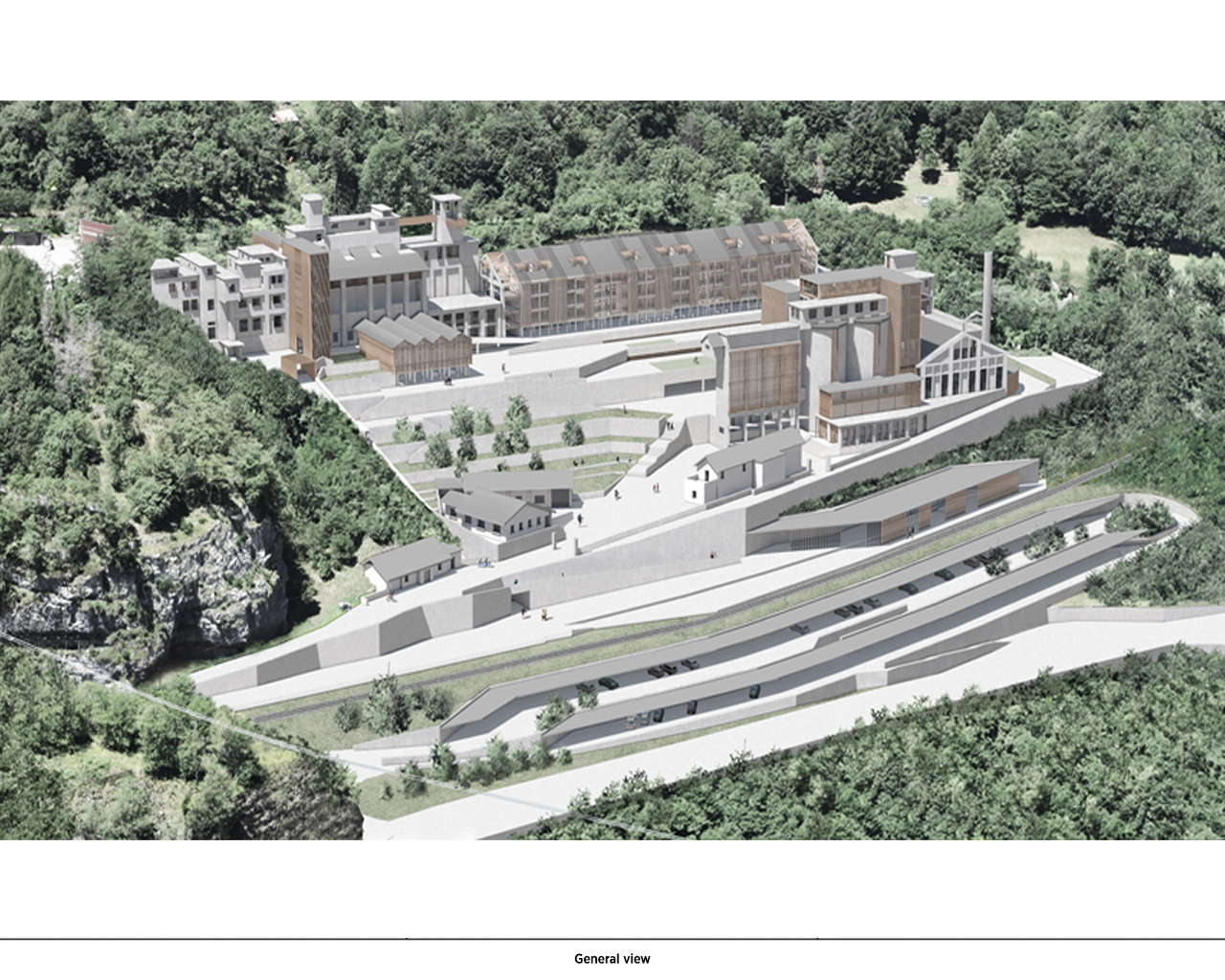
Name / Surname: Niccolò Dal Farra
Country:
Team:
Company:
Project Description:
The cement plant of Castellavazzo is a historic production site abandoned for more than 50 years in the Venetian Dolomites, not far from the most famous tourist destinations.
Located along the main road, the factory and the Valley of Longarone it belongs to, rich in other potential sites of interest, are today just a passing point.
The complex itself, due to the morphology of the valley, is mostly hidden from the road, despite the size of the area.
A holistic meta-project aims to highlight the points of interest of the valley through a system of slow-mobility paths, allowing to have different perceptions of the landscape and to open new views on the cement plant.
In this way, the factory can become a visual reference for the mobility in the valley.
Within this new context, with a valley able to attract new fluxes, the site can become the nodal strategic point where to set the new functions of support for the whole territory.
The full integration with the local realities and the potentials of the valley allows to bring benefits to a much wider territory, in a perspective of fully sustainable development.
The program is thought to give a support structure and to ensure a diversified offer able to work all the year long with spaces for cultural and museal activities and sport and leisure facilities.
The architectonic intervention on the site is studied to preserve and pass on the existent identity, mantaining and valorising the most iconic elements belonging to the old cement plant.
The outer space is the filter between built and natural environment.
The local archetype of the retaining wall allows to create connection paths and social areas.
The preservation of the unusual existing spaces is allowd by a program of creative reuse, with unusual new functions.
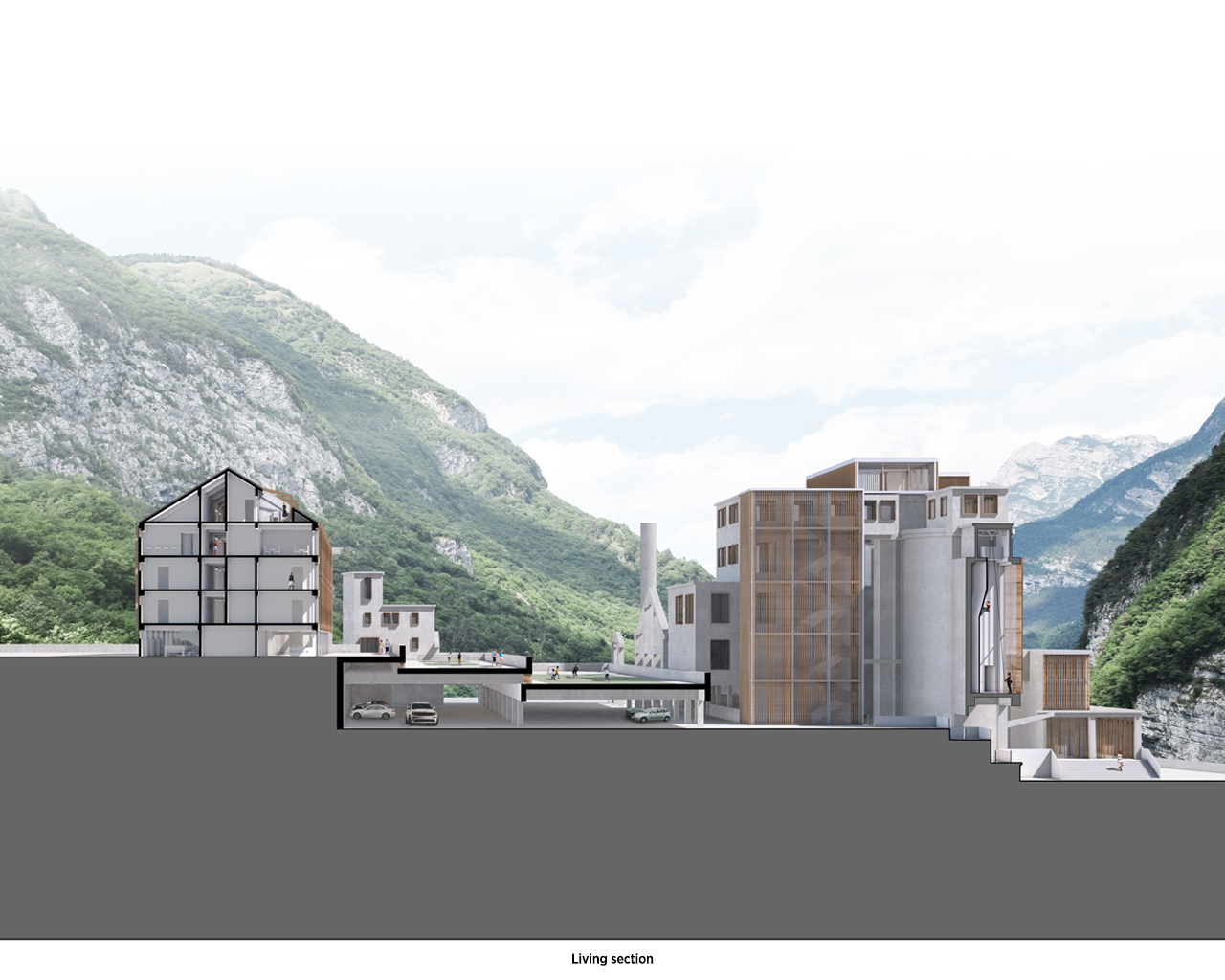
Name / Surname: Niccolò Dal Farra
Country:
Team:
Company:
Project Description:
The cement plant of Castellavazzo is a historic production site abandoned for more than 50 years in the Venetian Dolomites, not far from the most famous tourist destinations.
Located along the main road, the factory and the Valley of Longarone it belongs to, rich in other potential sites of interest, are today just a passing point.
The complex itself, due to the morphology of the valley, is mostly hidden from the road, despite the size of the area.
A holistic meta-project aims to highlight the points of interest of the valley through a system of slow-mobility paths, allowing to have different perceptions of the landscape and to open new views on the cement plant.
In this way, the factory can become a visual reference for the mobility in the valley.
Within this new context, with a valley able to attract new fluxes, the site can become the nodal strategic point where to set the new functions of support for the whole territory.
The full integration with the local realities and the potentials of the valley allows to bring benefits to a much wider territory, in a perspective of fully sustainable development.
The program is thought to give a support structure and to ensure a diversified offer able to work all the year long with spaces for cultural and museal activities and sport and leisure facilities.
The architectonic intervention on the site is studied to preserve and pass on the existent identity, mantaining and valorising the most iconic elements belonging to the old cement plant.
The outer space is the filter between built and natural environment.
The local archetype of the retaining wall allows to create connection paths and social areas.
The preservation of the unusual existing spaces is allowd by a program of creative reuse, with unusual new functions.
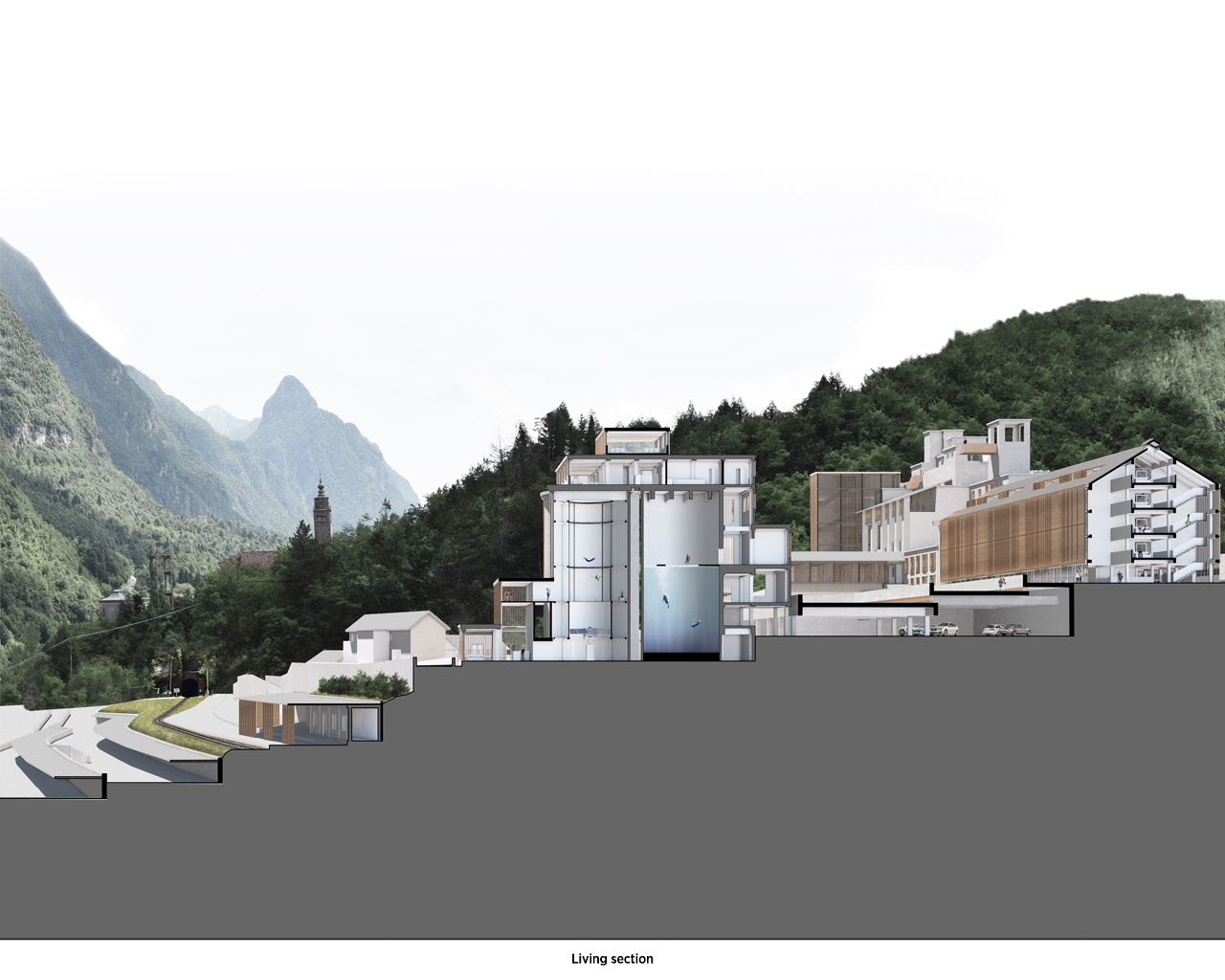
Name / Surname: Niccolò Dal Farra
Country:
Team:
Company:
Project Description:
The cement plant of Castellavazzo is a historic production site abandoned for more than 50 years in the Venetian Dolomites, not far from the most famous tourist destinations.
Located along the main road, the factory and the Valley of Longarone it belongs to, rich in other potential sites of interest, are today just a passing point.
The complex itself, due to the morphology of the valley, is mostly hidden from the road, despite the size of the area.
A holistic meta-project aims to highlight the points of interest of the valley through a system of slow-mobility paths, allowing to have different perceptions of the landscape and to open new views on the cement plant.
In this way, the factory can become a visual reference for the mobility in the valley.
Within this new context, with a valley able to attract new fluxes, the site can become the nodal strategic point where to set the new functions of support for the whole territory.
The full integration with the local realities and the potentials of the valley allows to bring benefits to a much wider territory, in a perspective of fully sustainable development.
The program is thought to give a support structure and to ensure a diversified offer able to work all the year long with spaces for cultural and museal activities and sport and leisure facilities.
The architectonic intervention on the site is studied to preserve and pass on the existent identity, mantaining and valorising the most iconic elements belonging to the old cement plant.
The outer space is the filter between built and natural environment.
The local archetype of the retaining wall allows to create connection paths and social areas.
The preservation of the unusual existing spaces is allowd by a program of creative reuse, with unusual new functions.
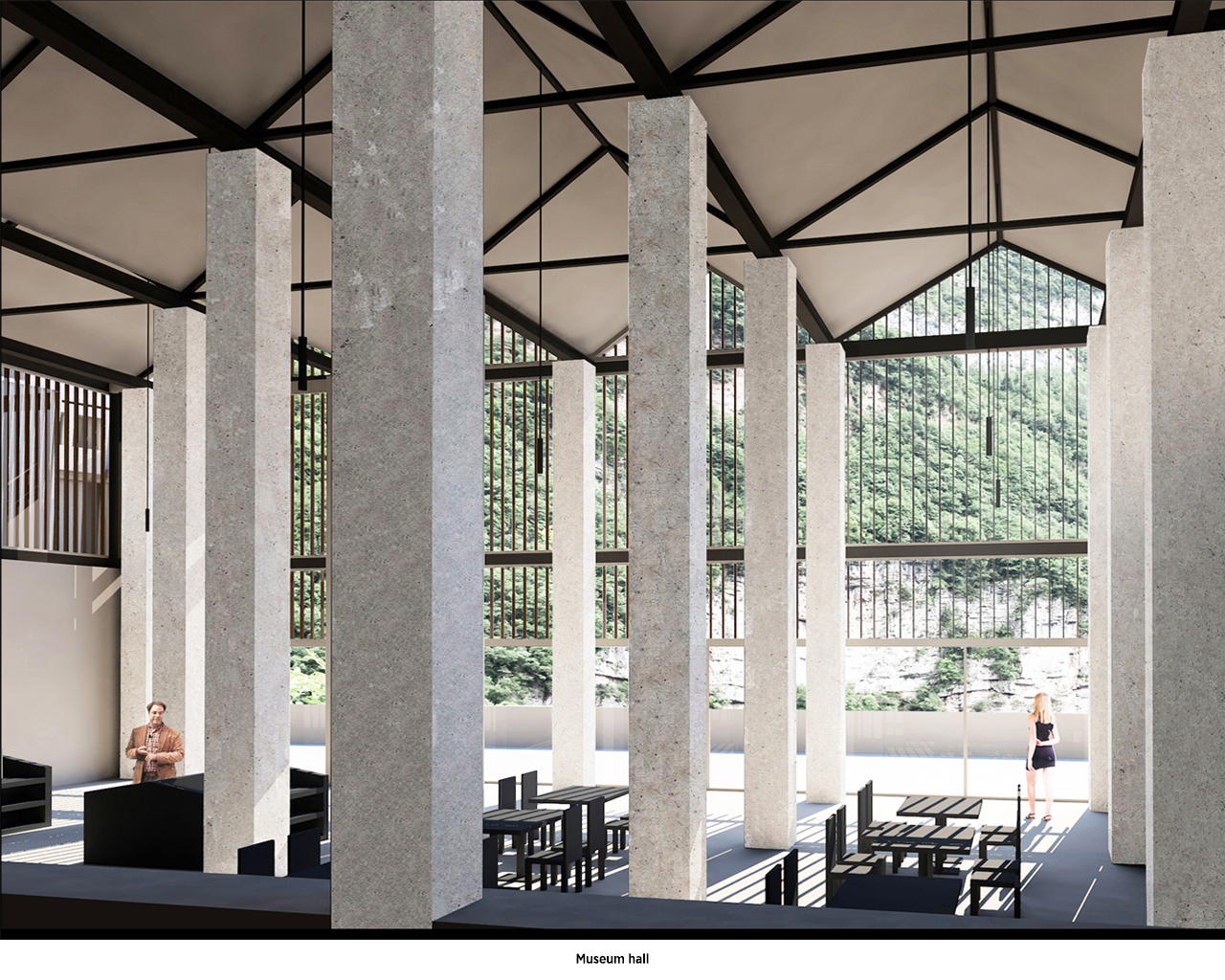
Name / Surname: Niccolò Dal Farra
Country:
Team:
Company:
Project Description:
The cement plant of Castellavazzo is a historic production site abandoned for more than 50 years in the Venetian Dolomites, not far from the most famous tourist destinations.
Located along the main road, the factory and the Valley of Longarone it belongs to, rich in other potential sites of interest, are today just a passing point.
The complex itself, due to the morphology of the valley, is mostly hidden from the road, despite the size of the area.
A holistic meta-project aims to highlight the points of interest of the valley through a system of slow-mobility paths, allowing to have different perceptions of the landscape and to open new views on the cement plant.
In this way, the factory can become a visual reference for the mobility in the valley.
Within this new context, with a valley able to attract new fluxes, the site can become the nodal strategic point where to set the new functions of support for the whole territory.
The full integration with the local realities and the potentials of the valley allows to bring benefits to a much wider territory, in a perspective of fully sustainable development.
The program is thought to give a support structure and to ensure a diversified offer able to work all the year long with spaces for cultural and museal activities and sport and leisure facilities.
The architectonic intervention on the site is studied to preserve and pass on the existent identity, mantaining and valorising the most iconic elements belonging to the old cement plant.
The outer space is the filter between built and natural environment.
The local archetype of the retaining wall allows to create connection paths and social areas.
The preservation of the unusual existing spaces is allowd by a program of creative reuse, with unusual new functions.
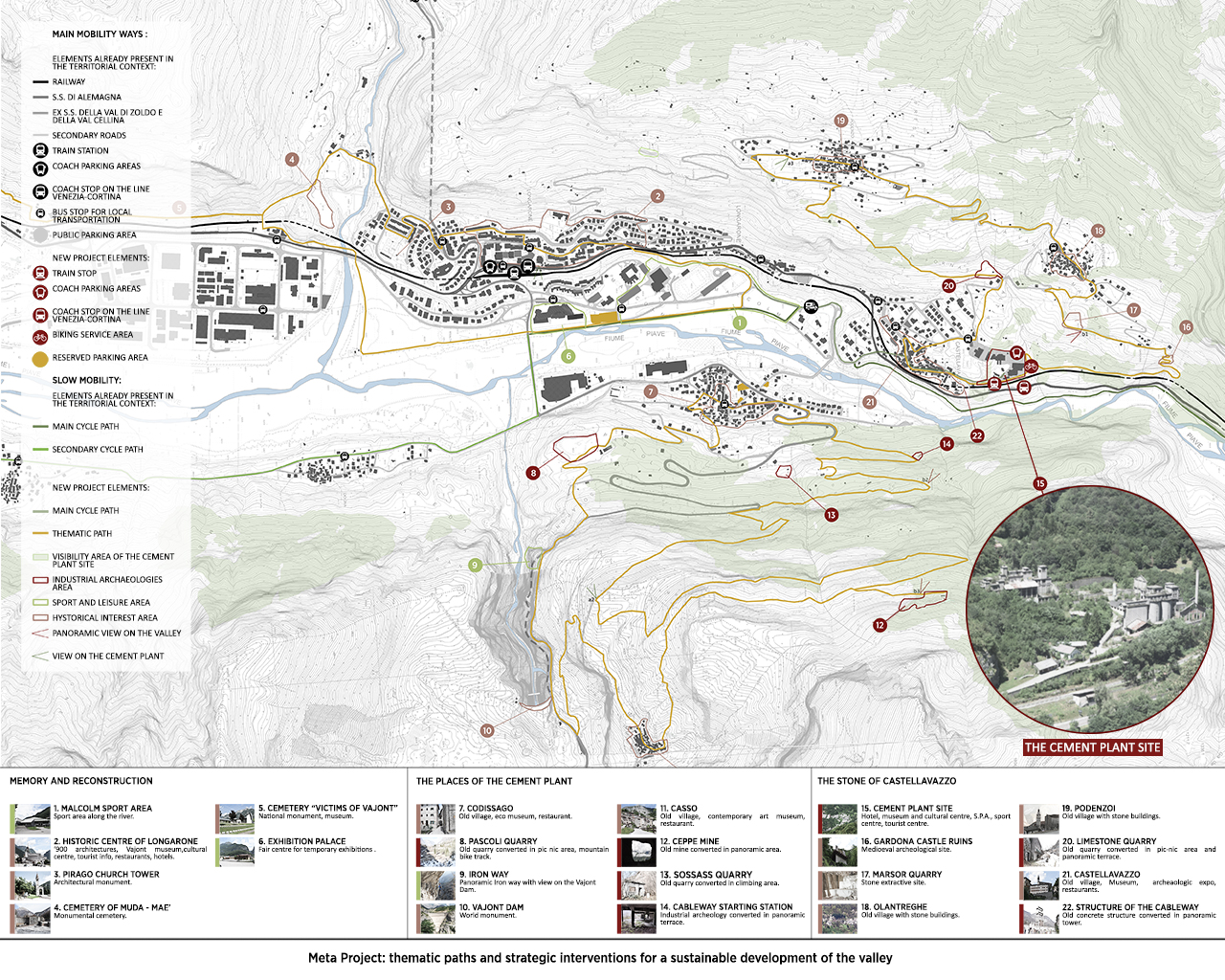
Name / Surname: Niccolò Dal Farra
Country:
Team:
Company:
Project Description:
The cement plant of Castellavazzo is a historic production site abandoned for more than 50 years in the Venetian Dolomites, not far from the most famous tourist destinations.
Located along the main road, the factory and the Valley of Longarone it belongs to, rich in other potential sites of interest, are today just a passing point.
The complex itself, due to the morphology of the valley, is mostly hidden from the road, despite the size of the area.
A holistic meta-project aims to highlight the points of interest of the valley through a system of slow-mobility paths, allowing to have different perceptions of the landscape and to open new views on the cement plant.
In this way, the factory can become a visual reference for the mobility in the valley.
Within this new context, with a valley able to attract new fluxes, the site can become the nodal strategic point where to set the new functions of support for the whole territory.
The full integration with the local realities and the potentials of the valley allows to bring benefits to a much wider territory, in a perspective of fully sustainable development.
The program is thought to give a support structure and to ensure a diversified offer able to work all the year long with spaces for cultural and museal activities and sport and leisure facilities.
The architectonic intervention on the site is studied to preserve and pass on the existent identity, mantaining and valorising the most iconic elements belonging to the old cement plant.
The outer space is the filter between built and natural environment.
The local archetype of the retaining wall allows to create connection paths and social areas.
The preservation of the unusual existing spaces is allowd by a program of creative reuse, with unusual new functions.

Name / Surname: Niccolò Dal Farra
Country:
Team:
Company:
Project Description:
The cement plant of Castellavazzo is a historic production site abandoned for more than 50 years in the Venetian Dolomites, not far from the most famous tourist destinations.
Located along the main road, the factory and the Valley of Longarone it belongs to, rich in other potential sites of interest, are today just a passing point.
The complex itself, due to the morphology of the valley, is mostly hidden from the road, despite the size of the area.
A holistic meta-project aims to highlight the points of interest of the valley through a system of slow-mobility paths, allowing to have different perceptions of the landscape and to open new views on the cement plant.
In this way, the factory can become a visual reference for the mobility in the valley.
Within this new context, with a valley able to attract new fluxes, the site can become the nodal strategic point where to set the new functions of support for the whole territory.
The full integration with the local realities and the potentials of the valley allows to bring benefits to a much wider territory, in a perspective of fully sustainable development.
The program is thought to give a support structure and to ensure a diversified offer able to work all the year long with spaces for cultural and museal activities and sport and leisure facilities.
The architectonic intervention on the site is studied to preserve and pass on the existent identity, mantaining and valorising the most iconic elements belonging to the old cement plant.
The outer space is the filter between built and natural environment.
The local archetype of the retaining wall allows to create connection paths and social areas.
The preservation of the unusual existing spaces is allowd by a program of creative reuse, with unusual new functions.
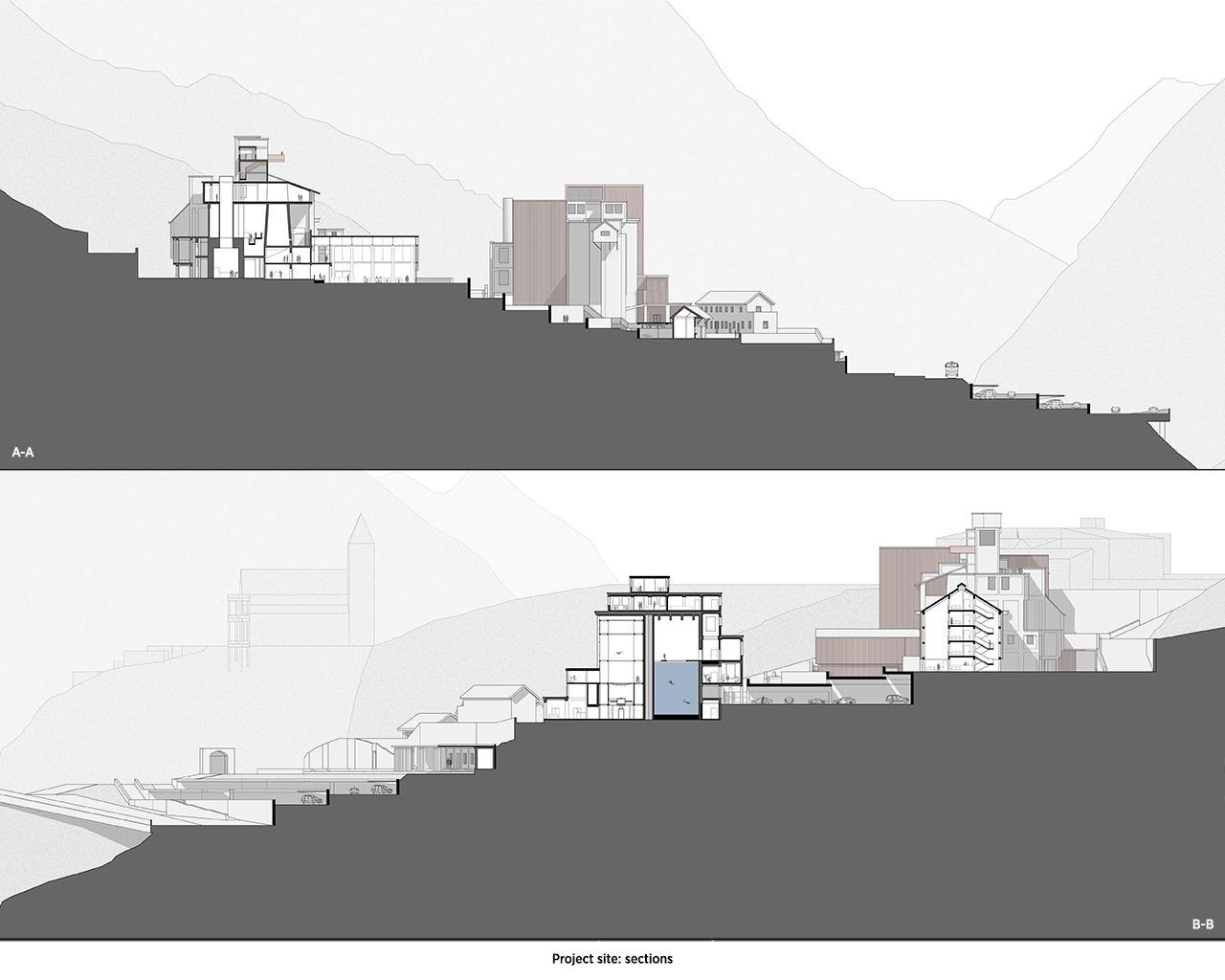
Name / Surname: Niccolò Dal Farra
Country:
Team:
Company:
Project Description:
The cement plant of Castellavazzo is a historic production site abandoned for more than 50 years in the Venetian Dolomites, not far from the most famous tourist destinations.
Located along the main road, the factory and the Valley of Longarone it belongs to, rich in other potential sites of interest, are today just a passing point.
The complex itself, due to the morphology of the valley, is mostly hidden from the road, despite the size of the area.
A holistic meta-project aims to highlight the points of interest of the valley through a system of slow-mobility paths, allowing to have different perceptions of the landscape and to open new views on the cement plant.
In this way, the factory can become a visual reference for the mobility in the valley.
Within this new context, with a valley able to attract new fluxes, the site can become the nodal strategic point where to set the new functions of support for the whole territory.
The full integration with the local realities and the potentials of the valley allows to bring benefits to a much wider territory, in a perspective of fully sustainable development.
The program is thought to give a support structure and to ensure a diversified offer able to work all the year long with spaces for cultural and museal activities and sport and leisure facilities.
The architectonic intervention on the site is studied to preserve and pass on the existent identity, mantaining and valorising the most iconic elements belonging to the old cement plant.
The outer space is the filter between built and natural environment.
The local archetype of the retaining wall allows to create connection paths and social areas.
The preservation of the unusual existing spaces is allowd by a program of creative reuse, with unusual new functions.
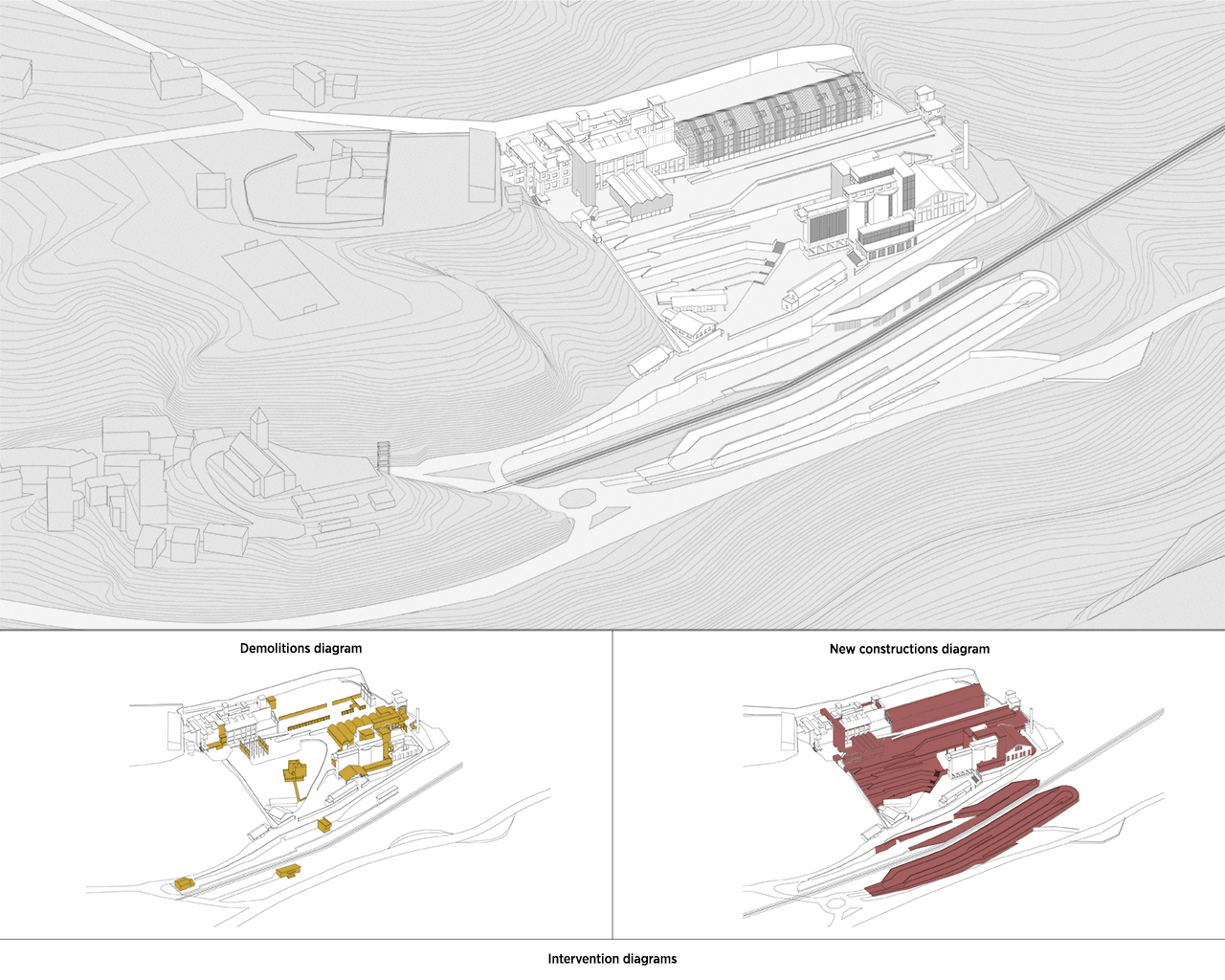
Name / Surname: Niccolò Dal Farra
Country:
Team:
Company:
Project Description:
The cement plant of Castellavazzo is a historic production site abandoned for more than 50 years in the Venetian Dolomites, not far from the most famous tourist destinations.
Located along the main road, the factory and the Valley of Longarone it belongs to, rich in other potential sites of interest, are today just a passing point.
The complex itself, due to the morphology of the valley, is mostly hidden from the road, despite the size of the area.
A holistic meta-project aims to highlight the points of interest of the valley through a system of slow-mobility paths, allowing to have different perceptions of the landscape and to open new views on the cement plant.
In this way, the factory can become a visual reference for the mobility in the valley.
Within this new context, with a valley able to attract new fluxes, the site can become the nodal strategic point where to set the new functions of support for the whole territory.
The full integration with the local realities and the potentials of the valley allows to bring benefits to a much wider territory, in a perspective of fully sustainable development.
The program is thought to give a support structure and to ensure a diversified offer able to work all the year long with spaces for cultural and museal activities and sport and leisure facilities.
The architectonic intervention on the site is studied to preserve and pass on the existent identity, mantaining and valorising the most iconic elements belonging to the old cement plant.
The outer space is the filter between built and natural environment.
The local archetype of the retaining wall allows to create connection paths and social areas.
The preservation of the unusual existing spaces is allowd by a program of creative reuse, with unusual new functions.

Name / Surname: Niccolò Dal Farra
Country:
Team:
Company:
Project Description:
The cement plant of Castellavazzo is a historic production site abandoned for more than 50 years in the Venetian Dolomites, not far from the most famous tourist destinations.
Located along the main road, the factory and the Valley of Longarone it belongs to, rich in other potential sites of interest, are today just a passing point.
The complex itself, due to the morphology of the valley, is mostly hidden from the road, despite the size of the area.
A holistic meta-project aims to highlight the points of interest of the valley through a system of slow-mobility paths, allowing to have different perceptions of the landscape and to open new views on the cement plant.
In this way, the factory can become a visual reference for the mobility in the valley.
Within this new context, with a valley able to attract new fluxes, the site can become the nodal strategic point where to set the new functions of support for the whole territory.
The full integration with the local realities and the potentials of the valley allows to bring benefits to a much wider territory, in a perspective of fully sustainable development.
The program is thought to give a support structure and to ensure a diversified offer able to work all the year long with spaces for cultural and museal activities and sport and leisure facilities.
The architectonic intervention on the site is studied to preserve and pass on the existent identity, mantaining and valorising the most iconic elements belonging to the old cement plant.
The outer space is the filter between built and natural environment.
The local archetype of the retaining wall allows to create connection paths and social areas.
The preservation of the unusual existing spaces is allowd by a program of creative reuse, with unusual new functions.
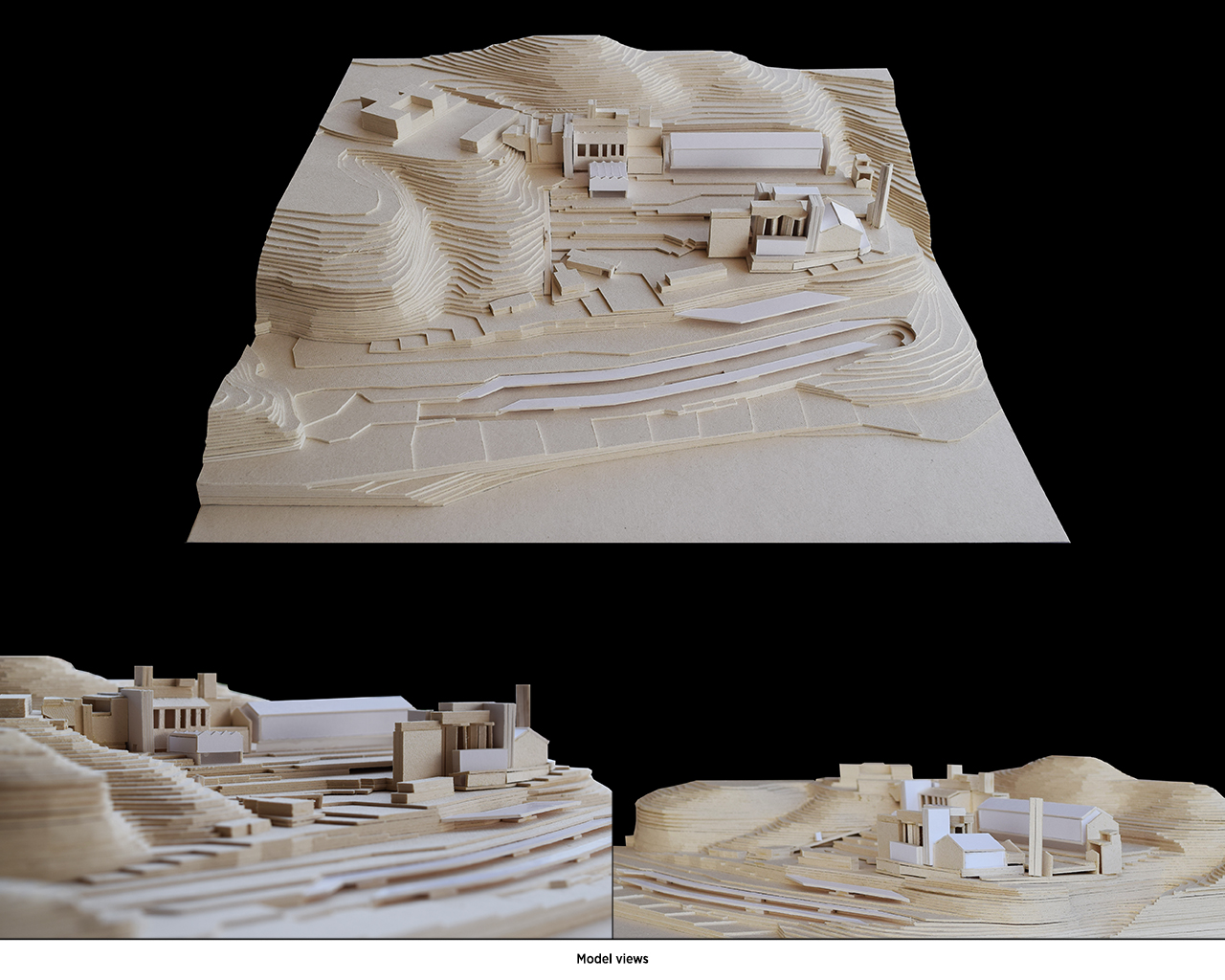
Name / Surname: Niccolò Dal Farra
Country:
Team:
Company:
Project Description:
The cement plant of Castellavazzo is a historic production site abandoned for more than 50 years in the Venetian Dolomites, not far from the most famous tourist destinations.
Located along the main road, the factory and the Valley of Longarone it belongs to, rich in other potential sites of interest, are today just a passing point.
The complex itself, due to the morphology of the valley, is mostly hidden from the road, despite the size of the area.
A holistic meta-project aims to highlight the points of interest of the valley through a system of slow-mobility paths, allowing to have different perceptions of the landscape and to open new views on the cement plant.
In this way, the factory can become a visual reference for the mobility in the valley.
Within this new context, with a valley able to attract new fluxes, the site can become the nodal strategic point where to set the new functions of support for the whole territory.
The full integration with the local realities and the potentials of the valley allows to bring benefits to a much wider territory, in a perspective of fully sustainable development.
The program is thought to give a support structure and to ensure a diversified offer able to work all the year long with spaces for cultural and museal activities and sport and leisure facilities.
The architectonic intervention on the site is studied to preserve and pass on the existent identity, mantaining and valorising the most iconic elements belonging to the old cement plant.
The outer space is the filter between built and natural environment.
The local archetype of the retaining wall allows to create connection paths and social areas.
The preservation of the unusual existing spaces is allowd by a program of creative reuse, with unusual new functions.
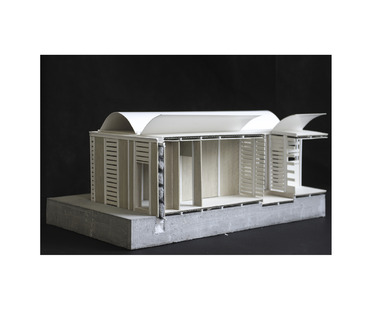
2019
A Common Line For The Reconstruction de Lorenzo Abate lauréat de Next Landmark 2019
Lorenzo Abate a remporté le concours Next Landmark 2019 avec un projet de reconstruction écologique d'après-guerre développé dans le contexte syrien qui constitue un
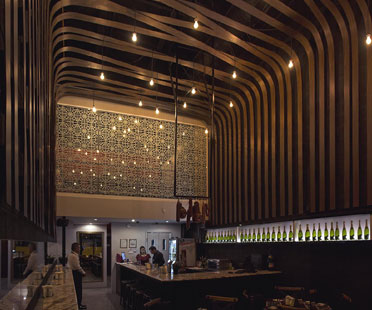
2018
Les lauréats de Next Landmark 2018
Les architectes Urbánika et Roland Baldi ont été récompensés dans l’amphithéâtre de FICo, le « plus grand parc agroalimentaire au monde &raq
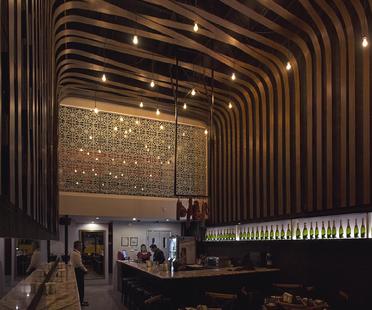
2018
Les lauréats de Next Landmark 2018
Les architectes Urbánika et Roland Baldi ont été récompensés dans l’amphithéâtre de FICo, le « plus grand parc agroalimentaire au monde &raq
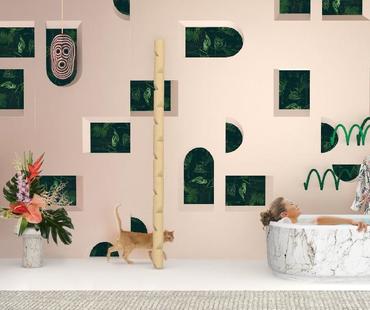
2017
Les lauréats de Next Landmark Architectural SKIN
Gregory Lacoua et ellevuelle Architetti, voilà les lauréats de la sixième édition de Next Landmark, le concours international organisé par Floornature, le portail d'
2017
Les lauréats de Next Landmark Architectural SKIN
Gregory Lacoua et ellevuelle Architetti, voilà les lauréats de la sixième édition de Next Landmark, le concours international organisé par Floornature, le portail d'
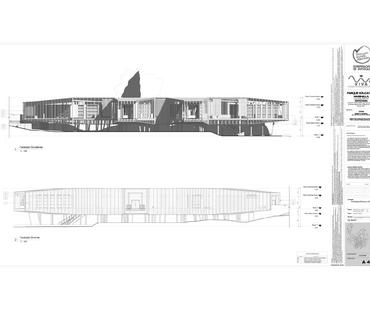
2016
Giancarlo Mazzanti: Marinilla Educational Park, Colombie
Avec le Marinilla Educational Park, Giancarlo Mazzanti remporte le prix Next Landmark 2016. Mazzanti poursuit sa recherche consacrée à la valorisation du lieu public comme lieu social. M
2016
Giancarlo Mazzanti: Marinilla Educational Park, Colombie
Avec le Marinilla Educational Park, Giancarlo Mazzanti remporte le prix Next Landmark 2016. Mazzanti poursuit sa recherche consacrée à la valorisation du lieu public comme lieu social. M
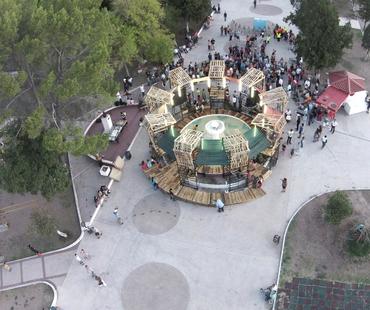
2015
Urban Spa : un atelier de PKMN en collaboration avec les étudiants de Chihuahua
Lauréat du concours Next Landmark 2015 (catégorie Landmark of the Year), le projet Urban Spa est le fruit de l’atelier du cabinet PKMN avec les étudiants de l’ISAD de Chihuahu
2015
Urban Spa : un atelier de PKMN en collaboration avec les étudiants de Chihuahua
Lauréat du concours Next Landmark 2015 (catégorie Landmark of the Year), le projet Urban Spa est le fruit de l’atelier du cabinet PKMN avec les étudiants de l’ISAD de Chihuahu
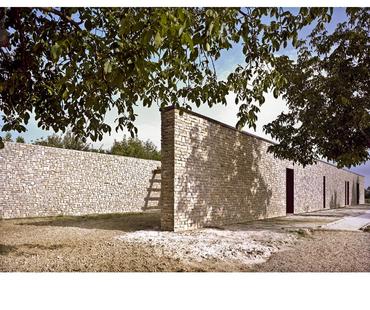
2014
La Casa Esse d’Ellevuelle architetti remporte le Next Landmark 2014
La troisième édition du concours international d’architecture organisé par Floornature, Next Landmark, vient d’être remportée par les Italiens d’Ellevuelle arch
Il nostro sito web utilizza i cookie per assicurarti la migliore esperienza di navigazione.
Se desideri maggiori informazioni sui cookie e su come controllarne l’abilitazione con le impostazioni del browser accedi alla nostra
Cookie Policy





